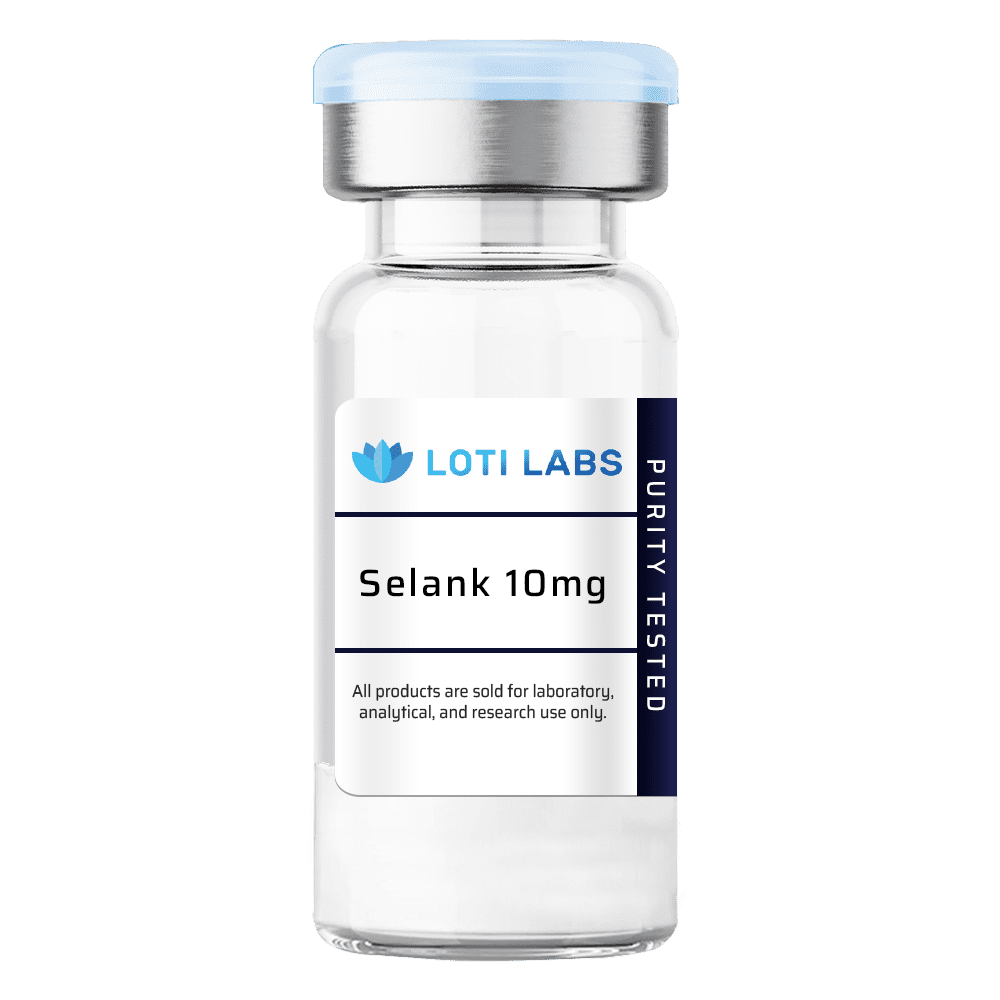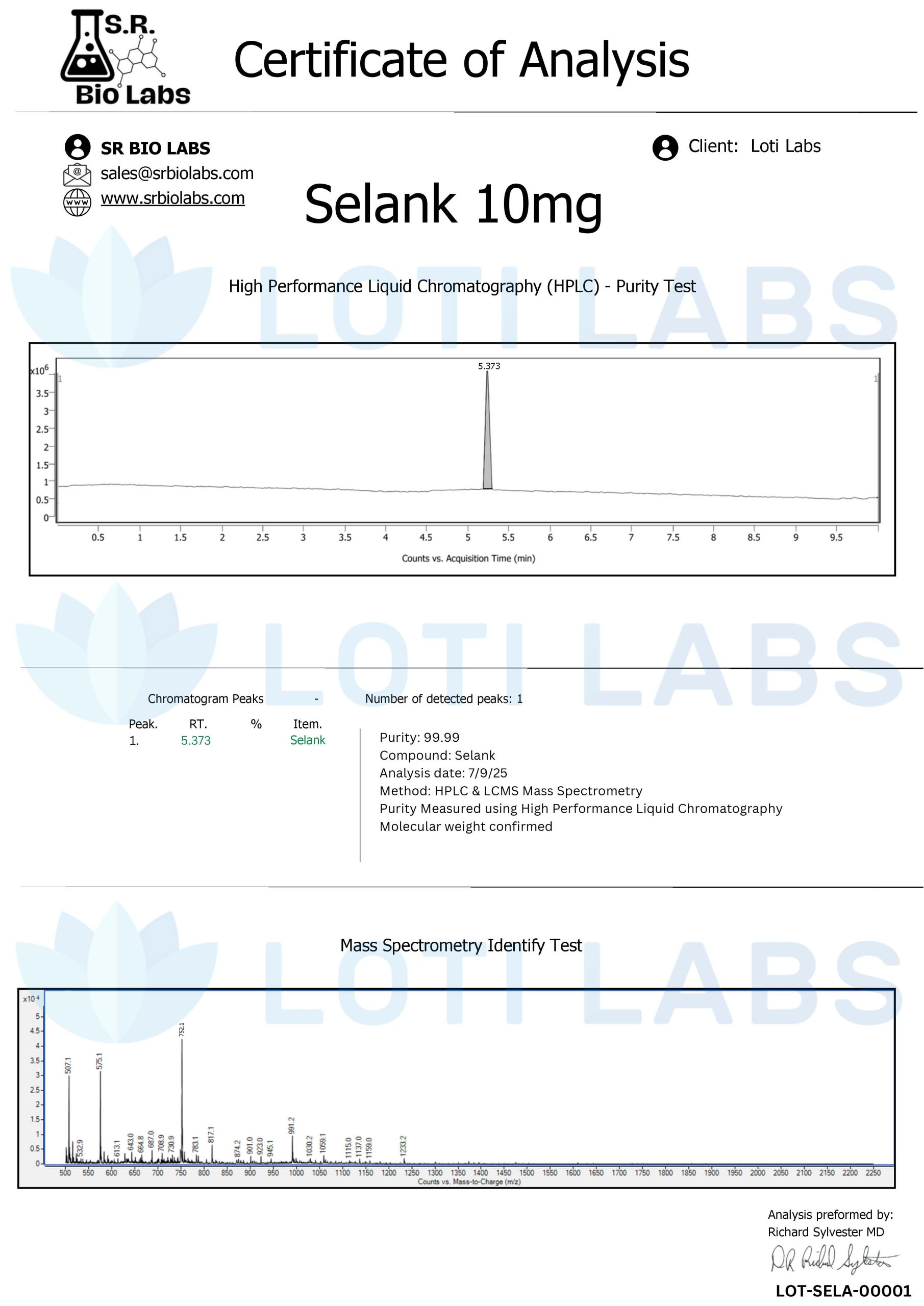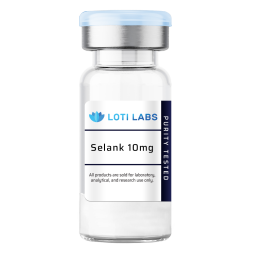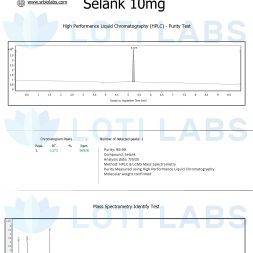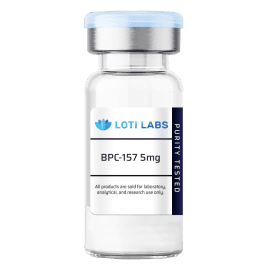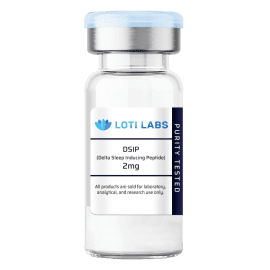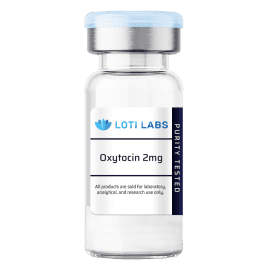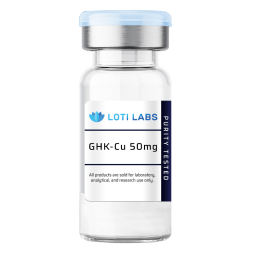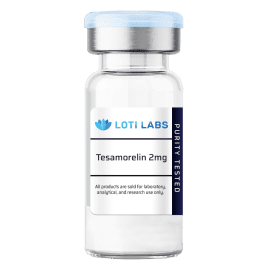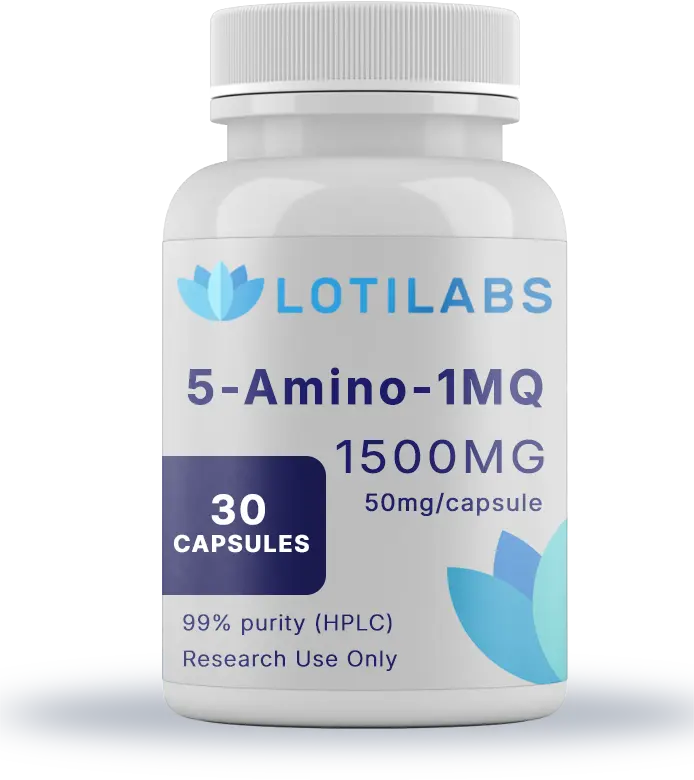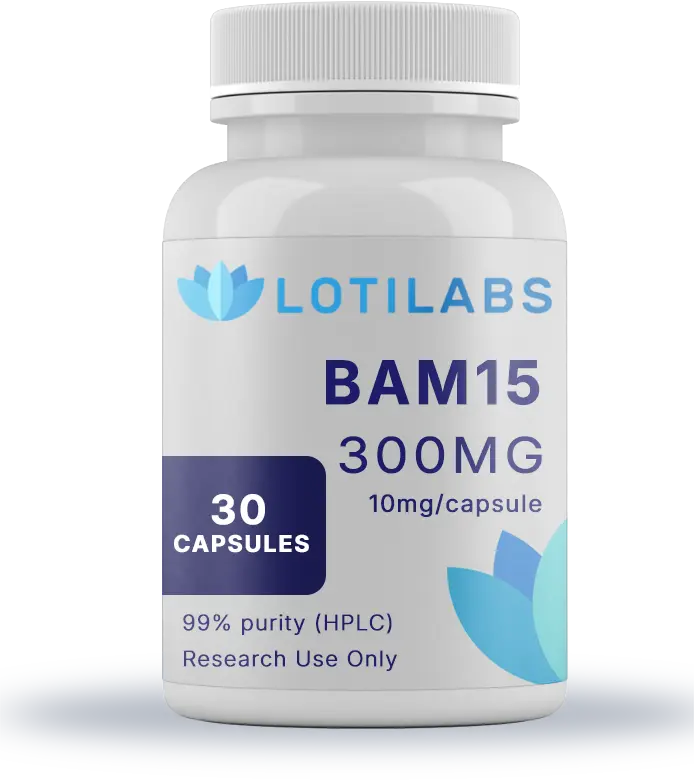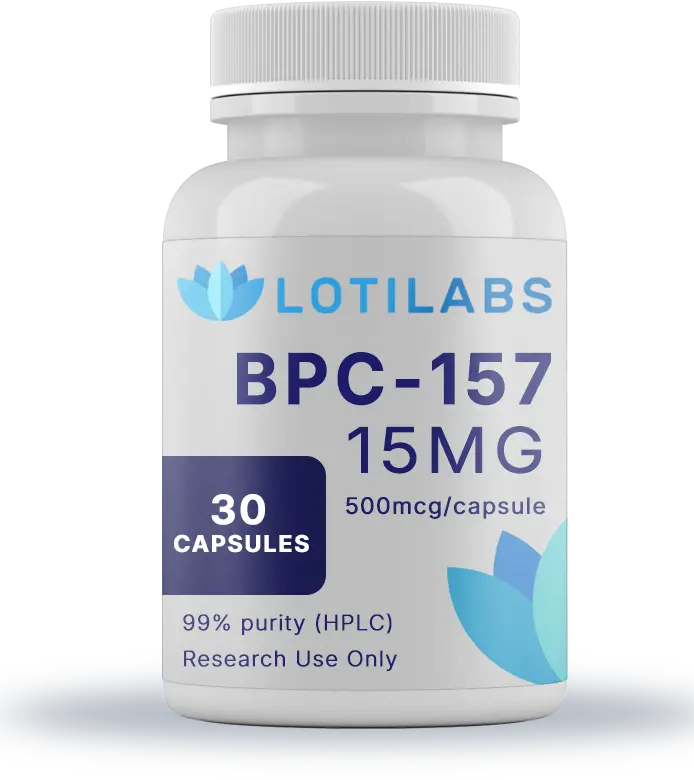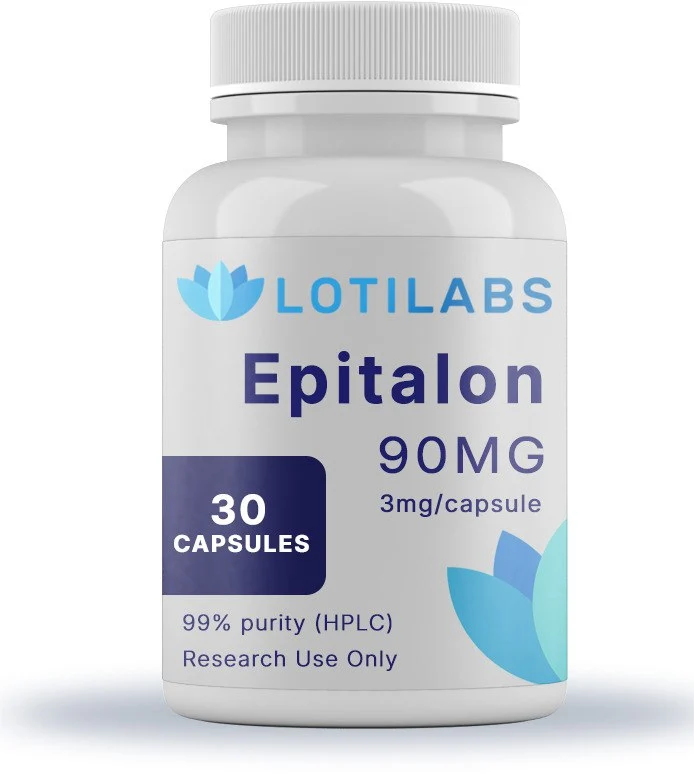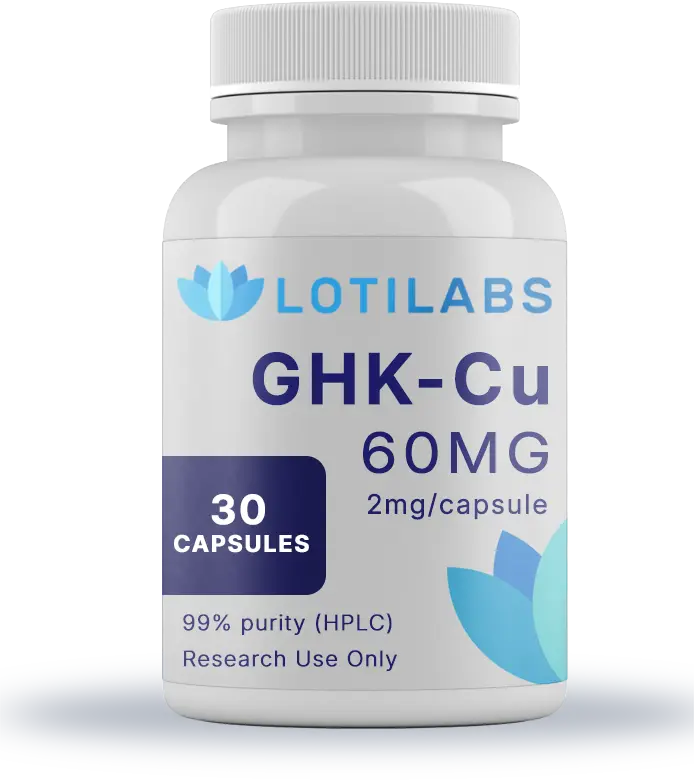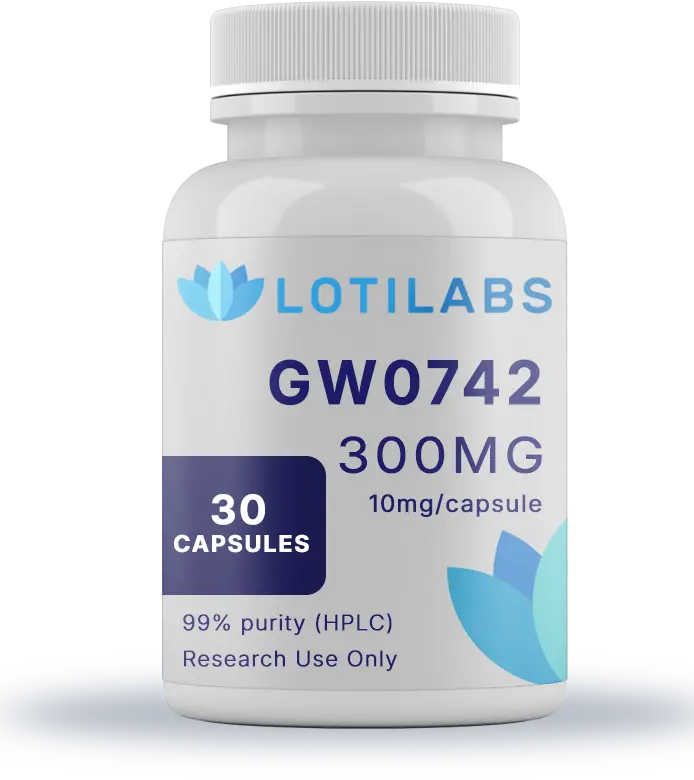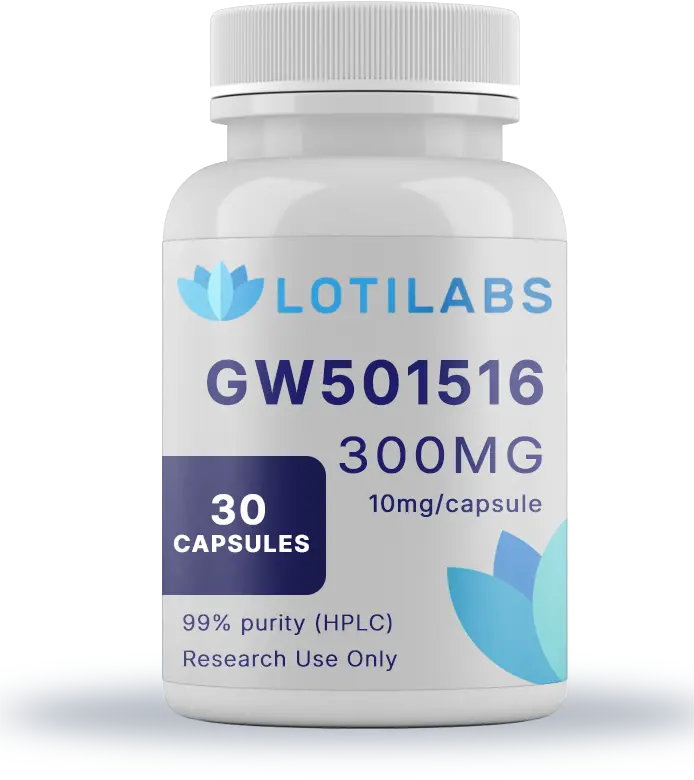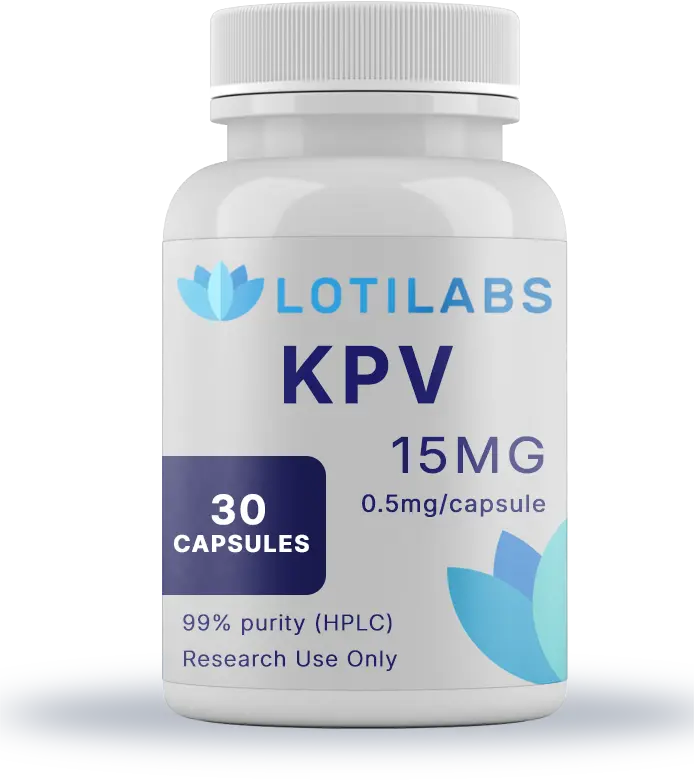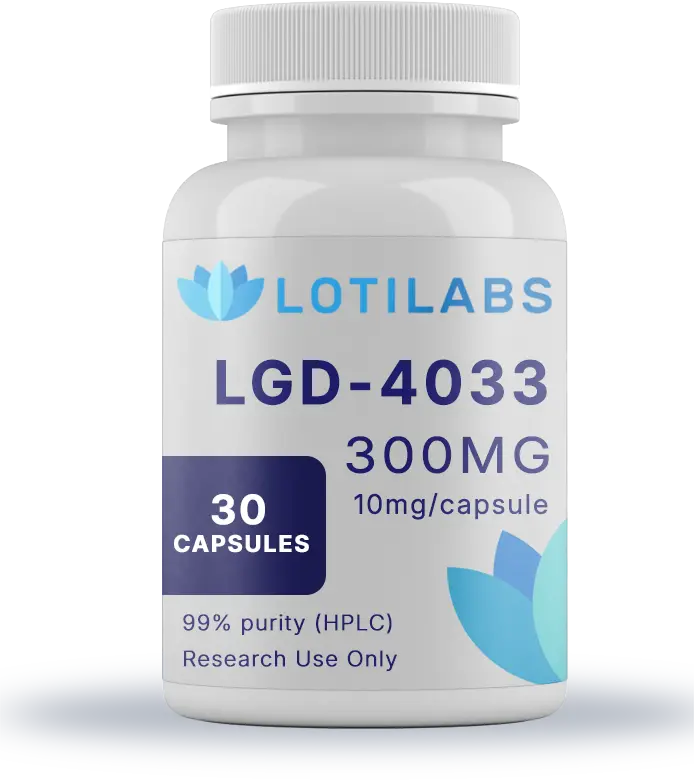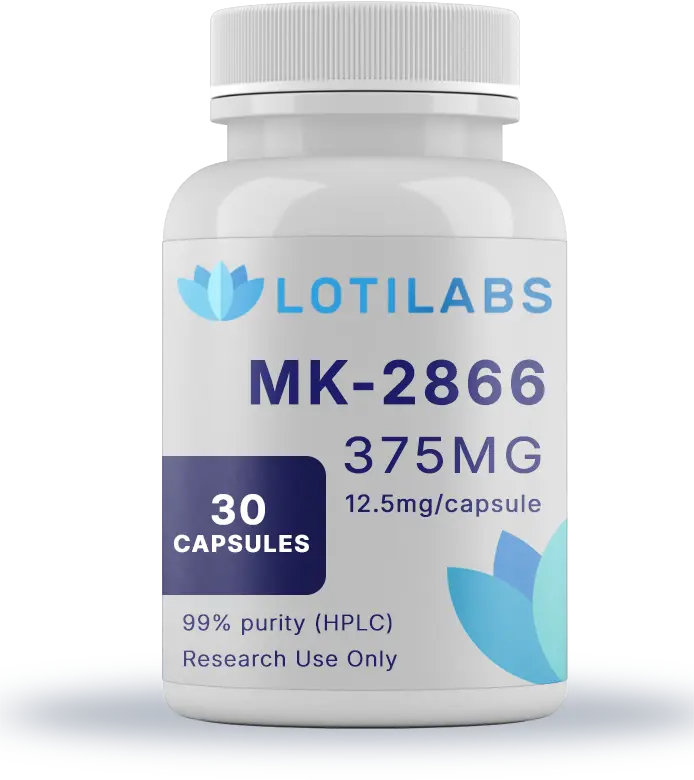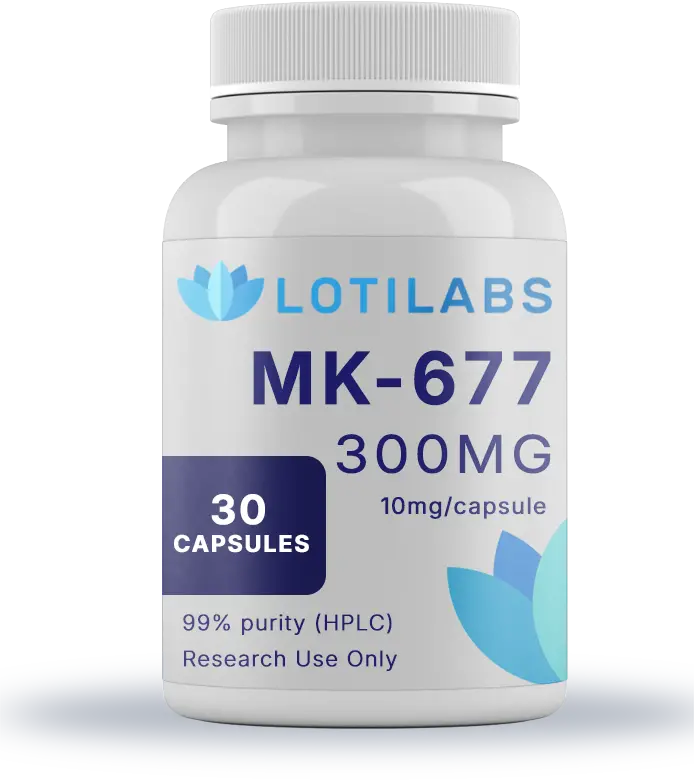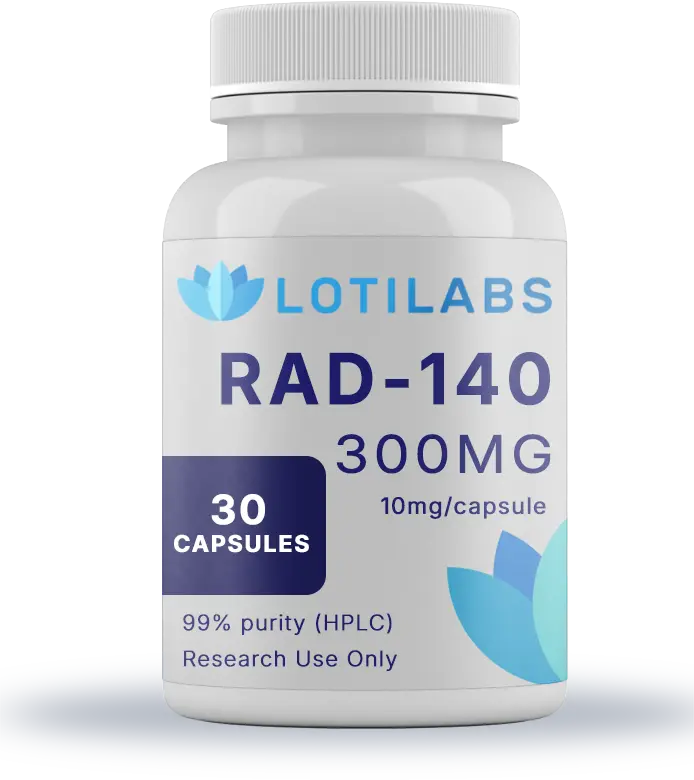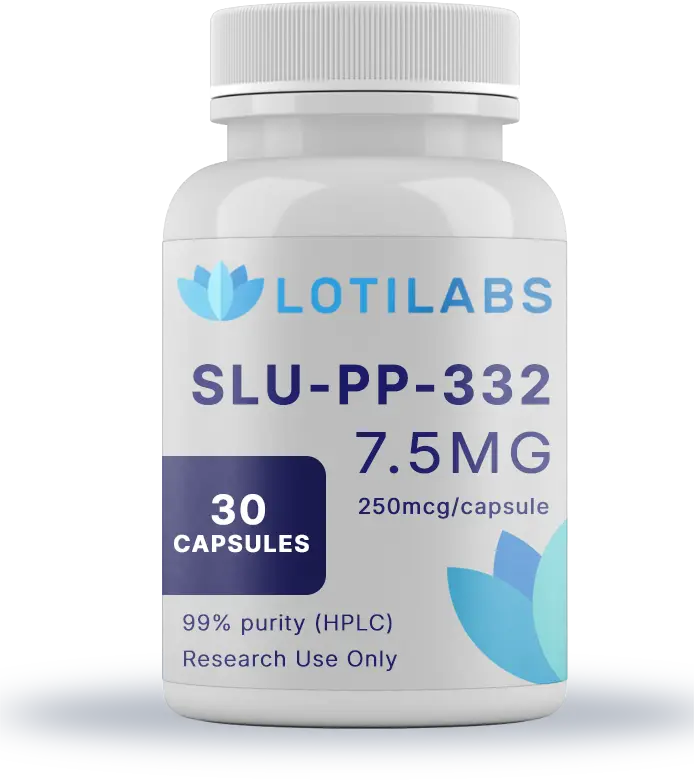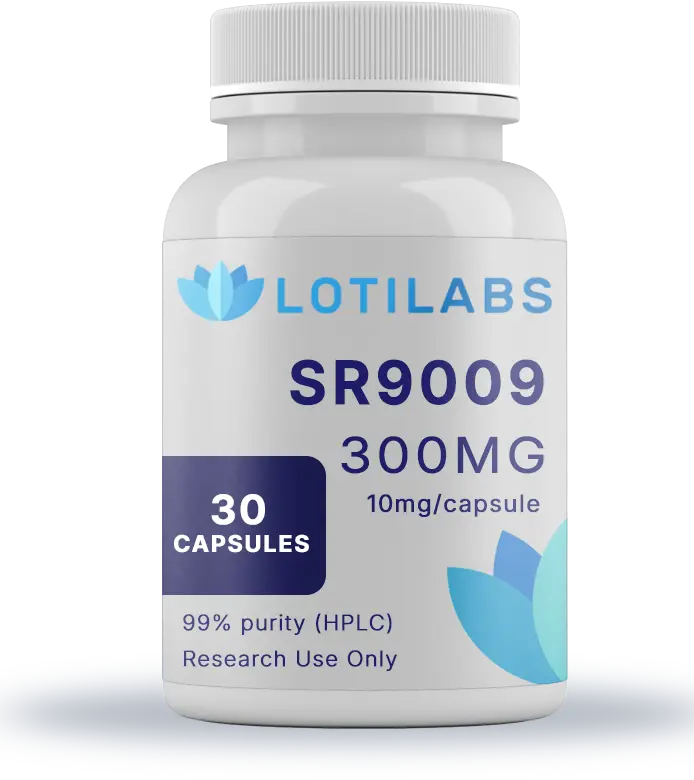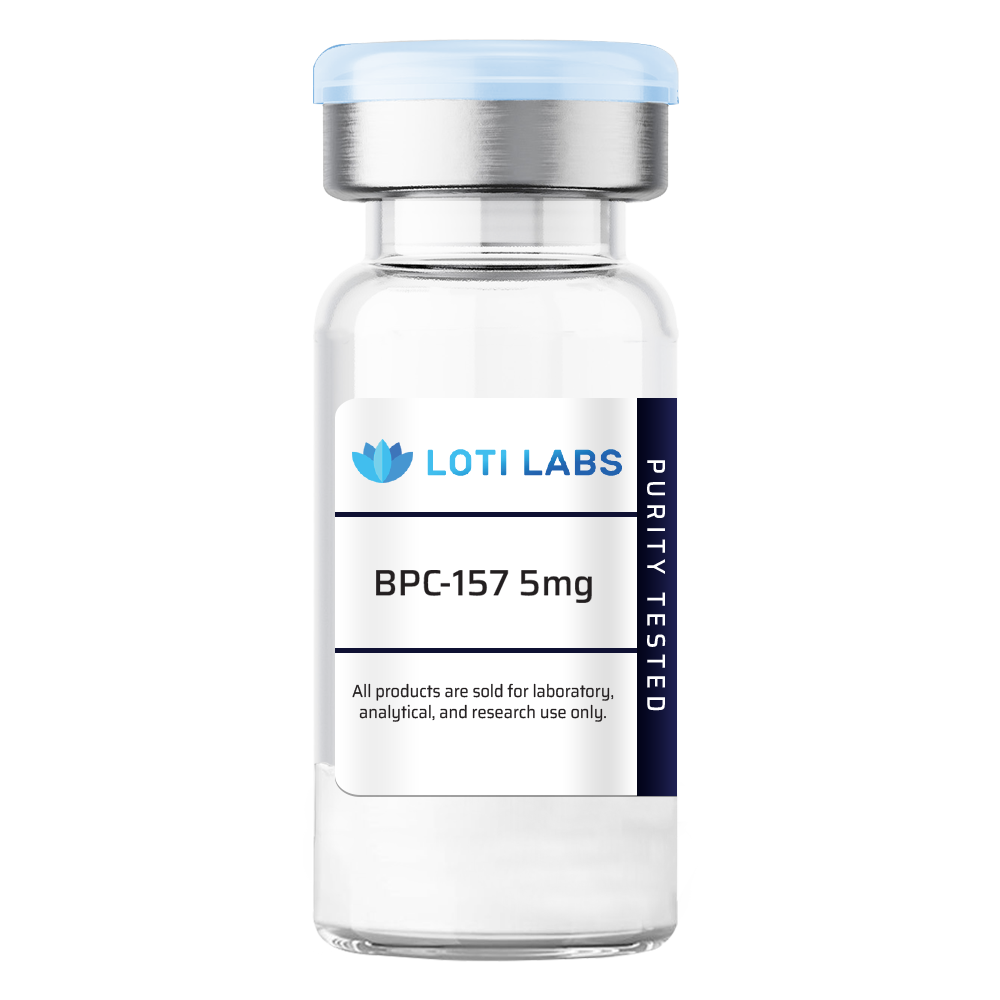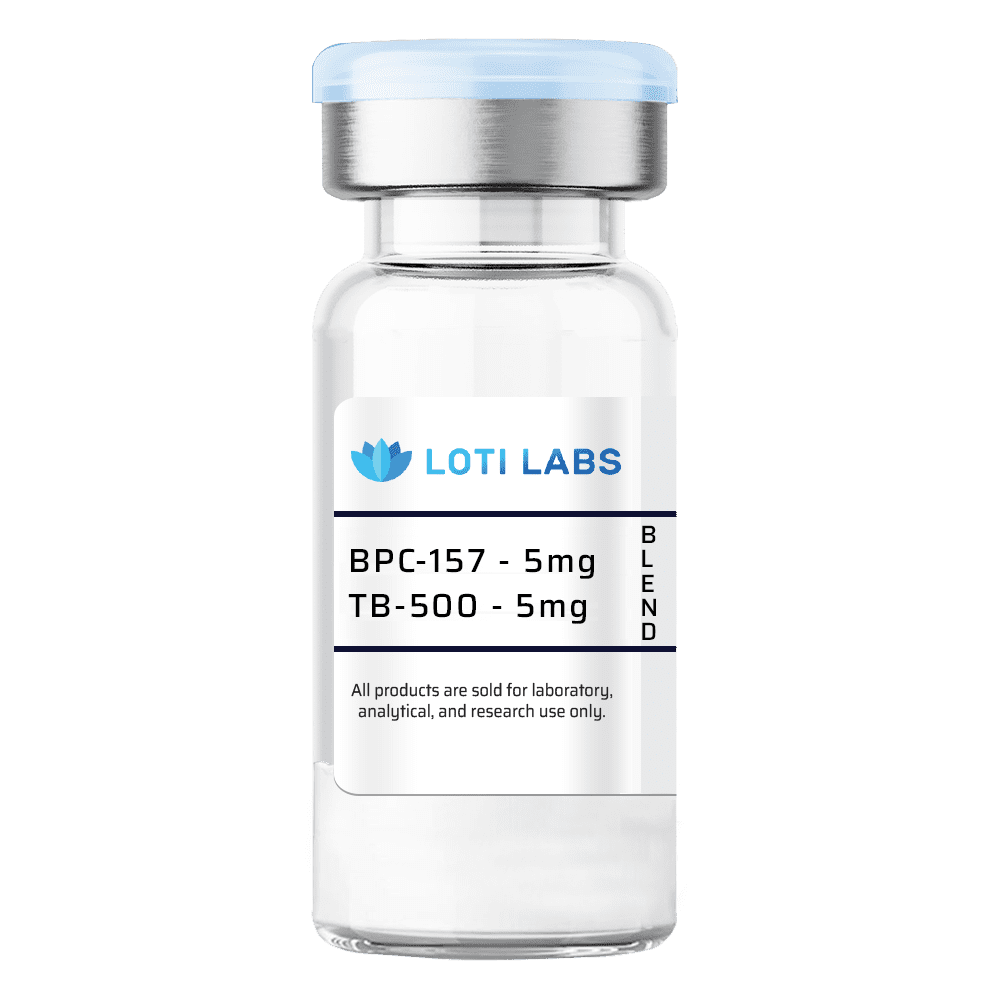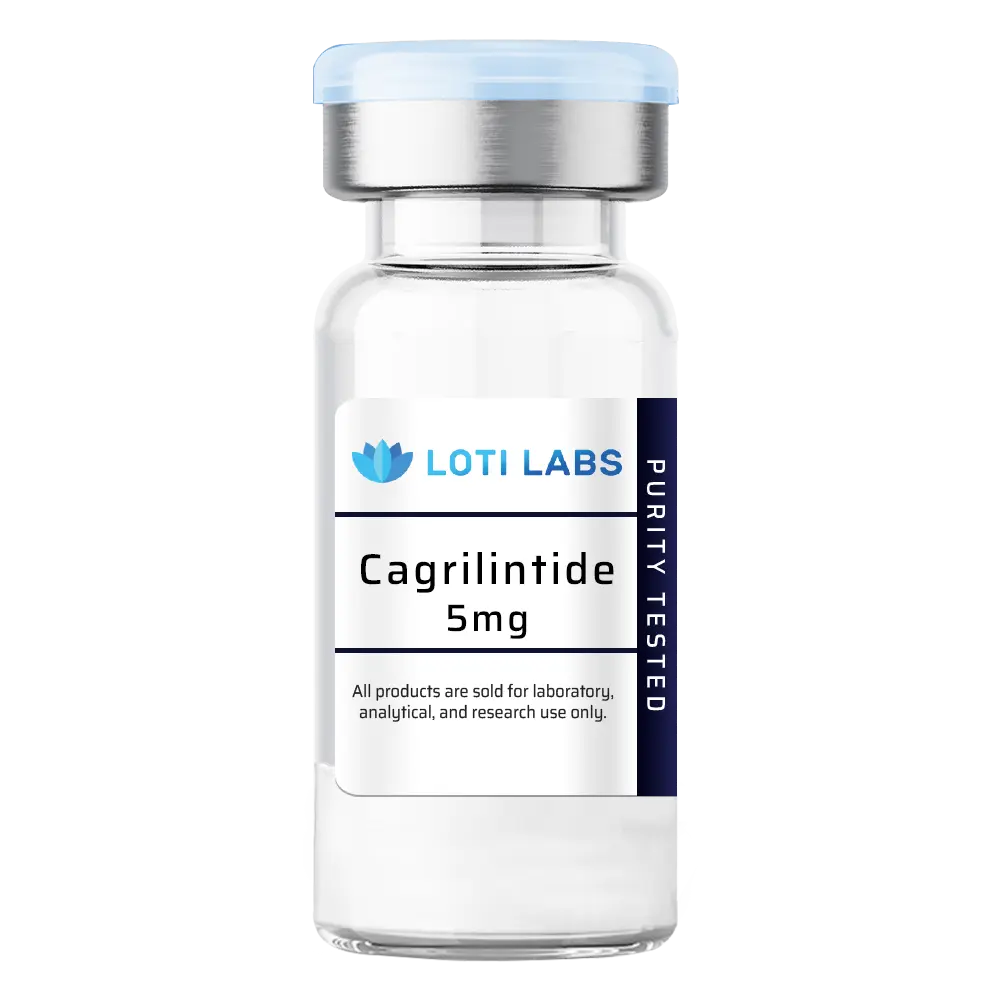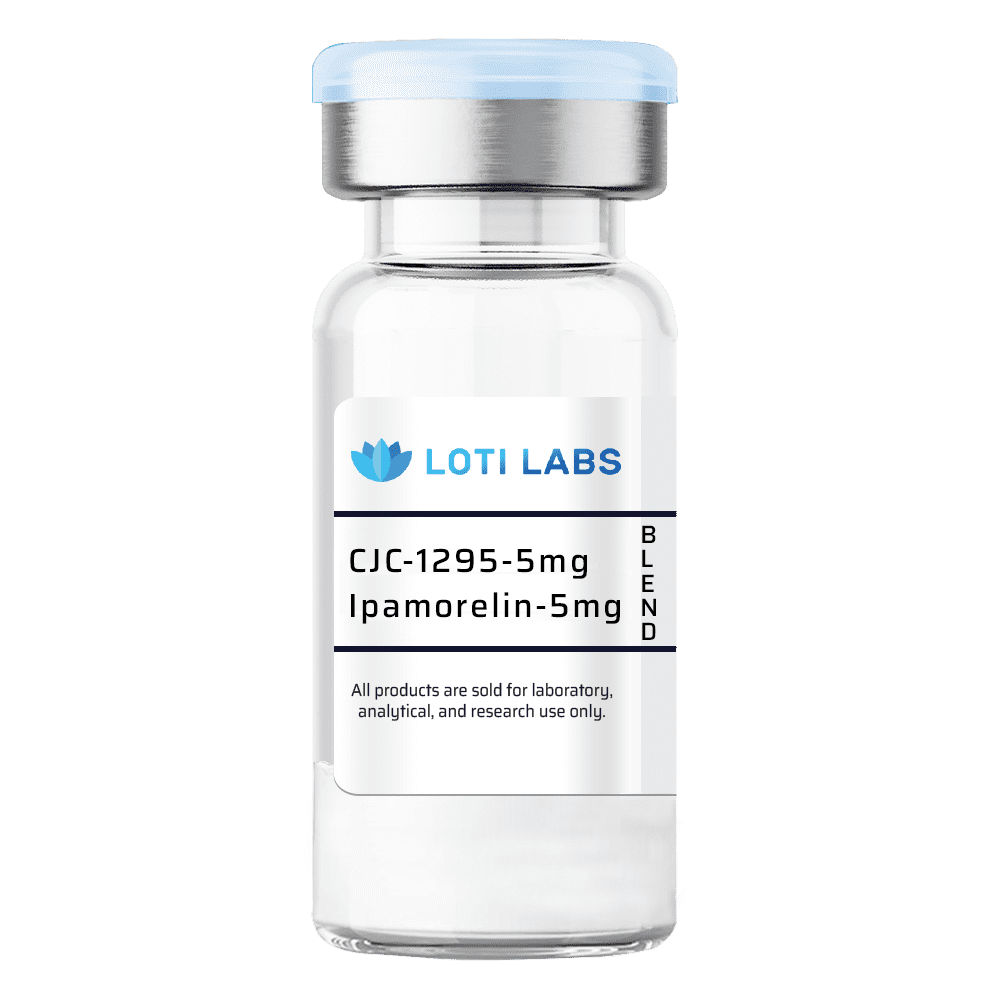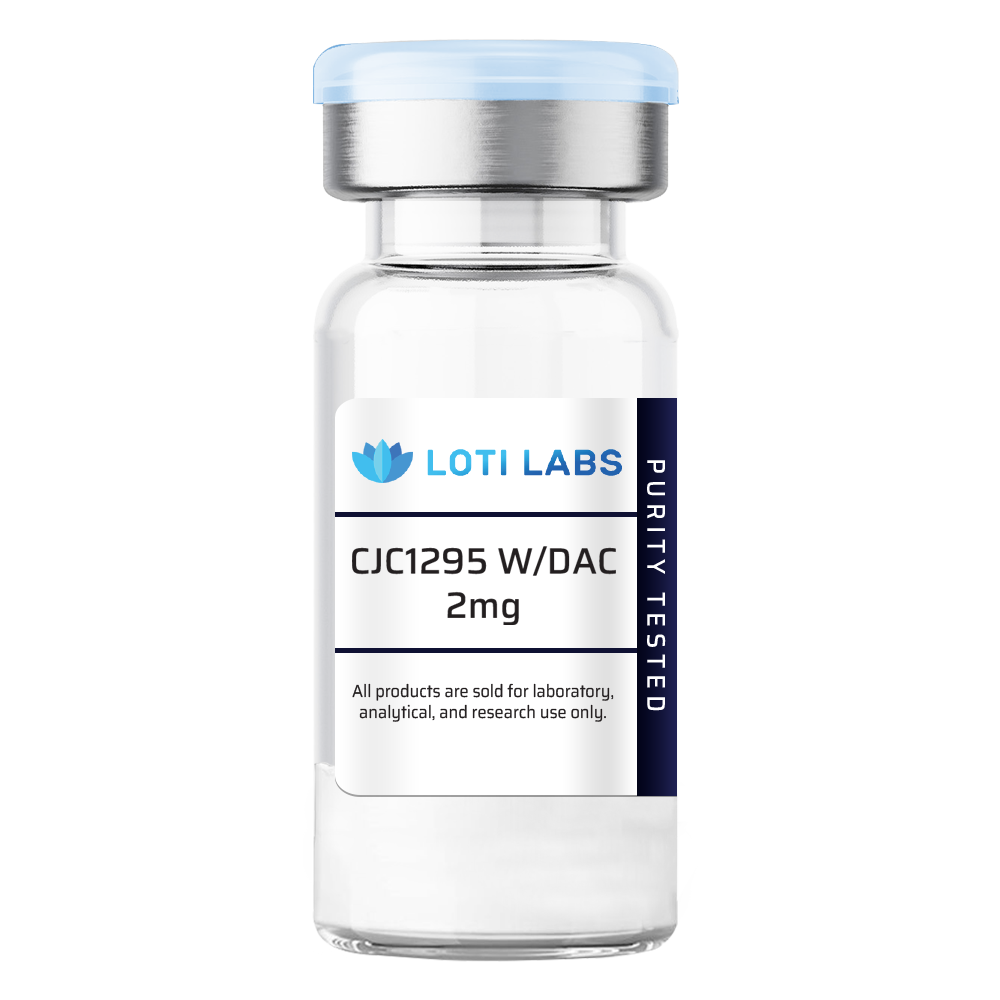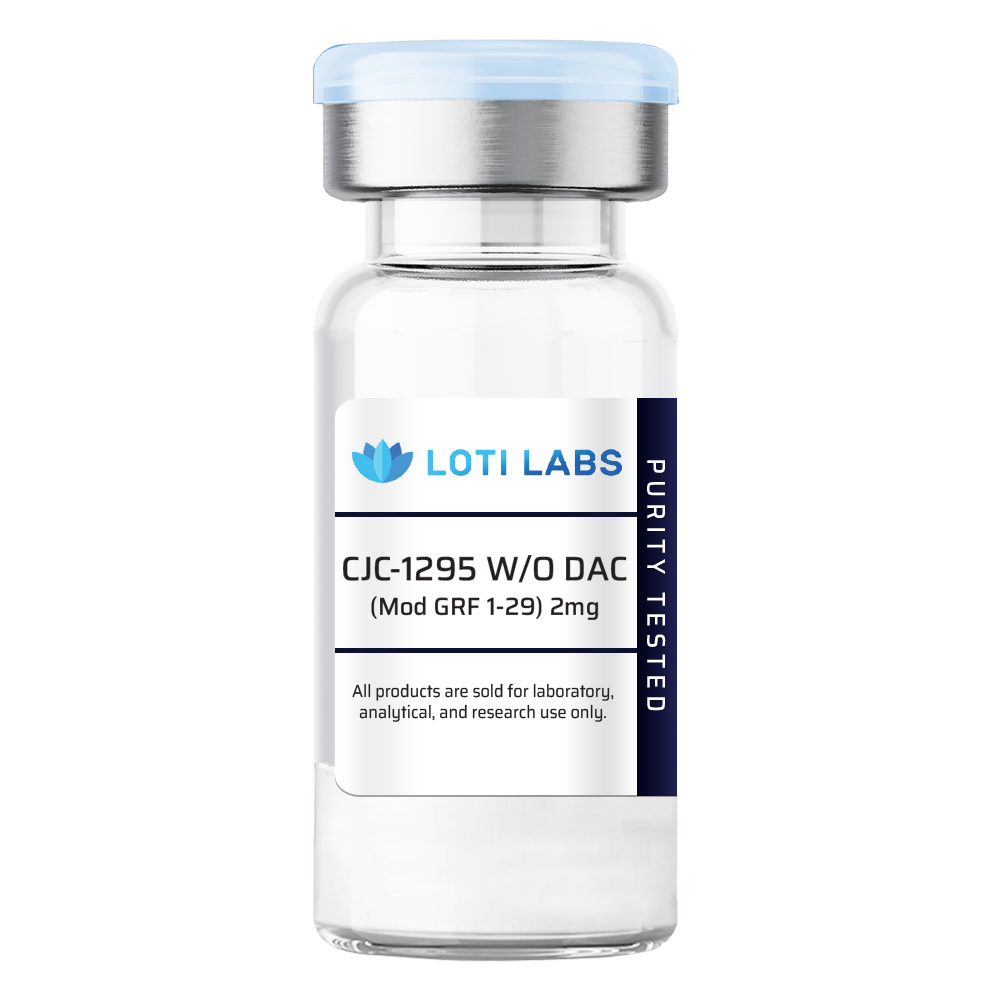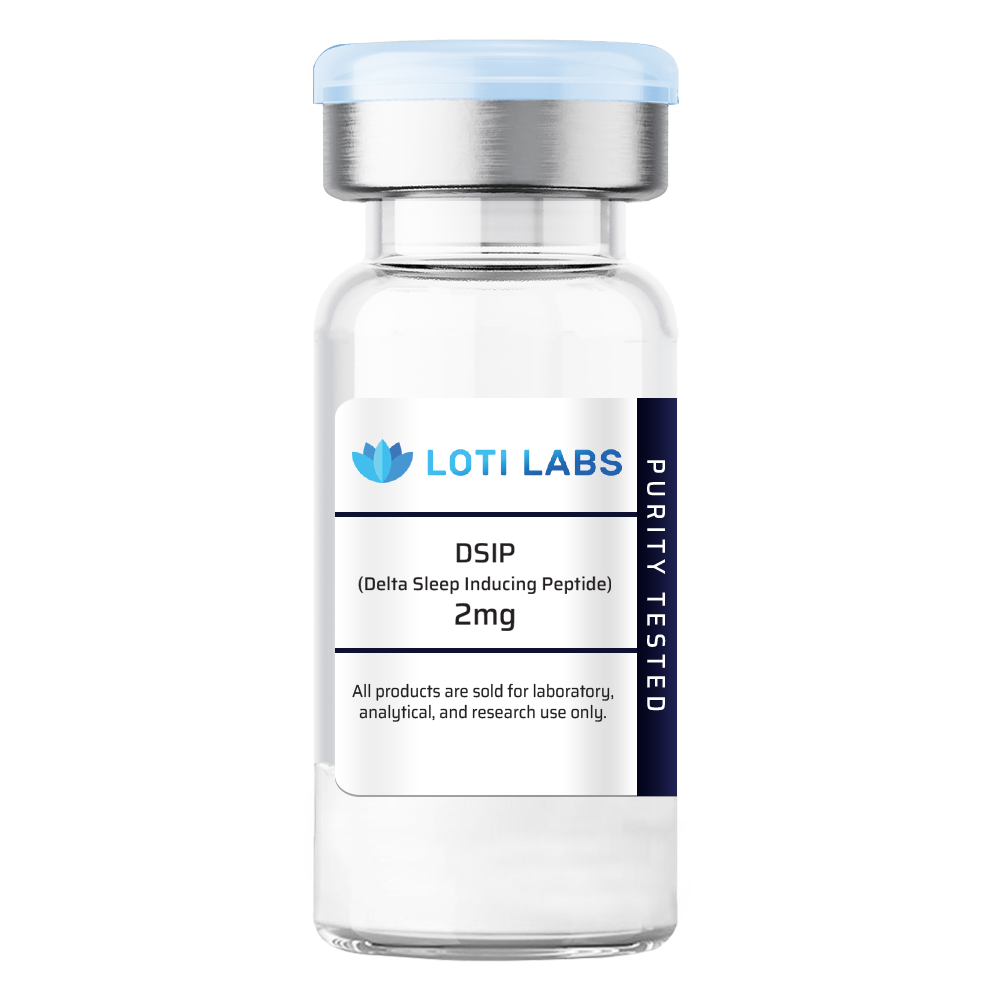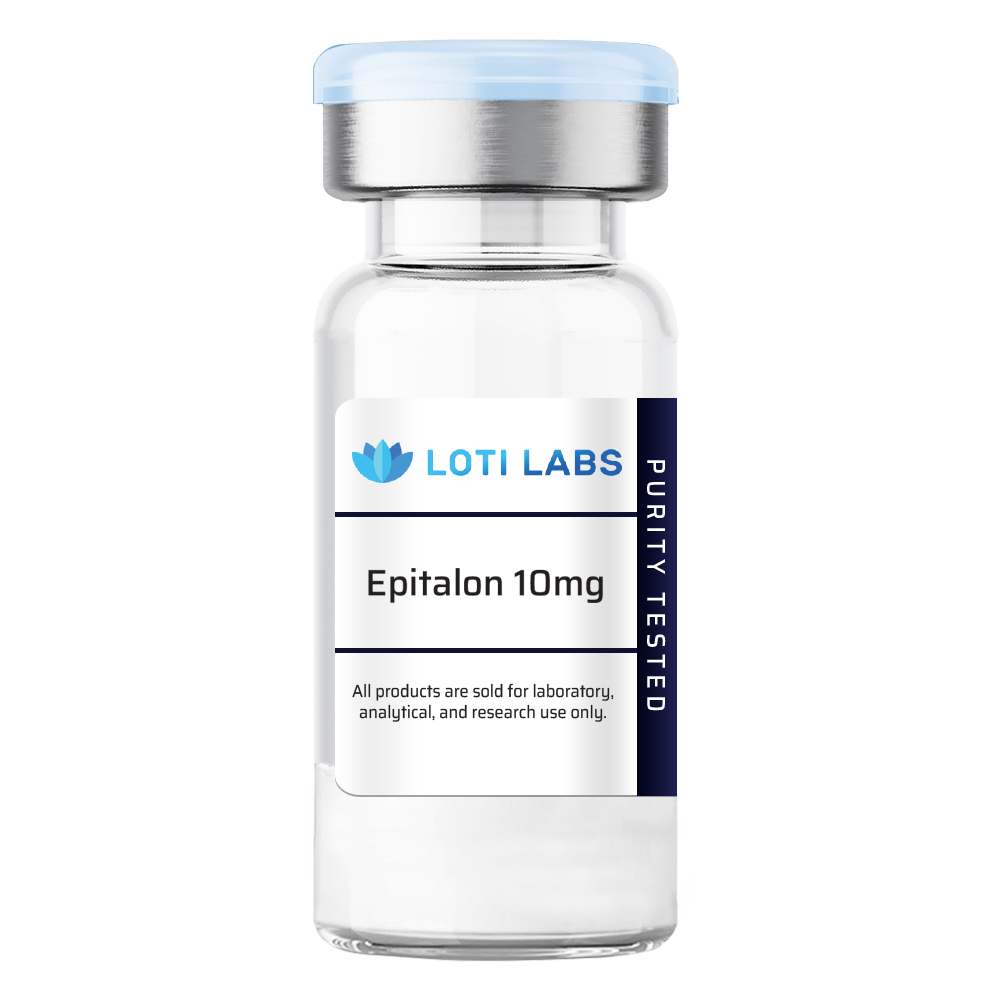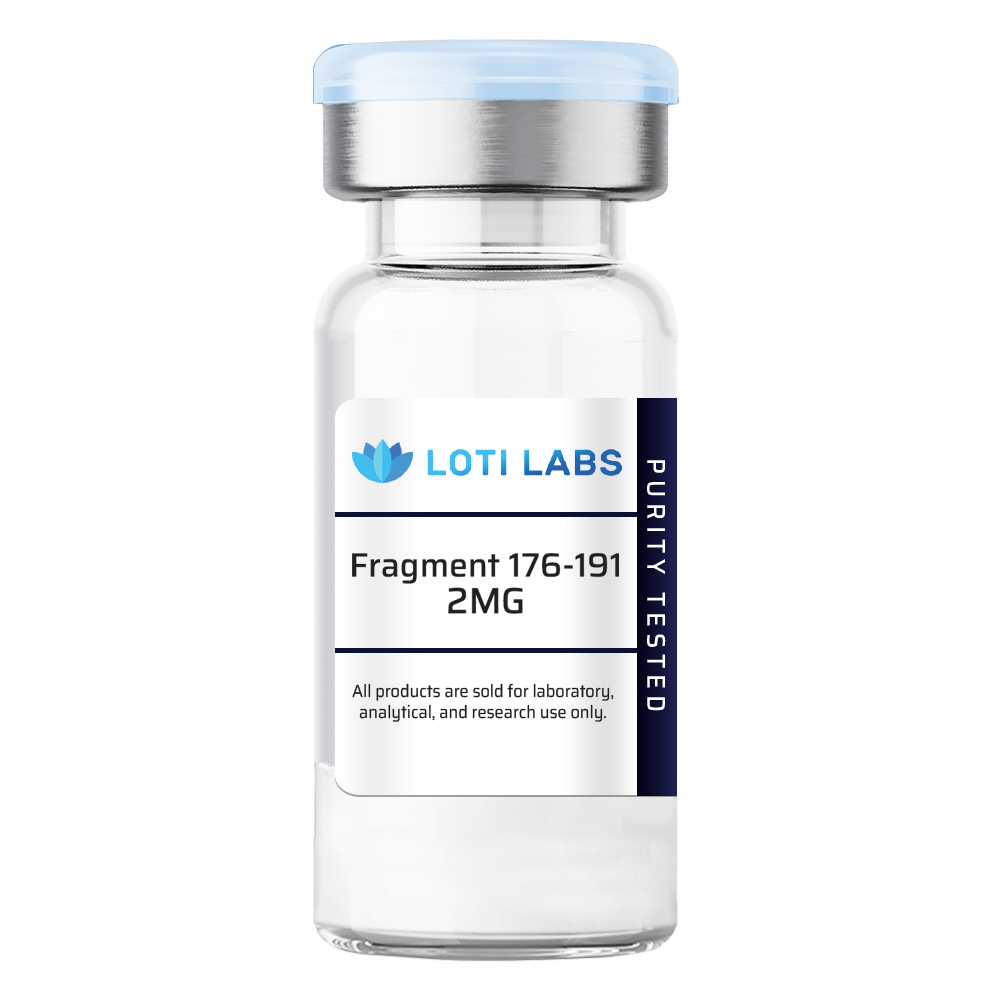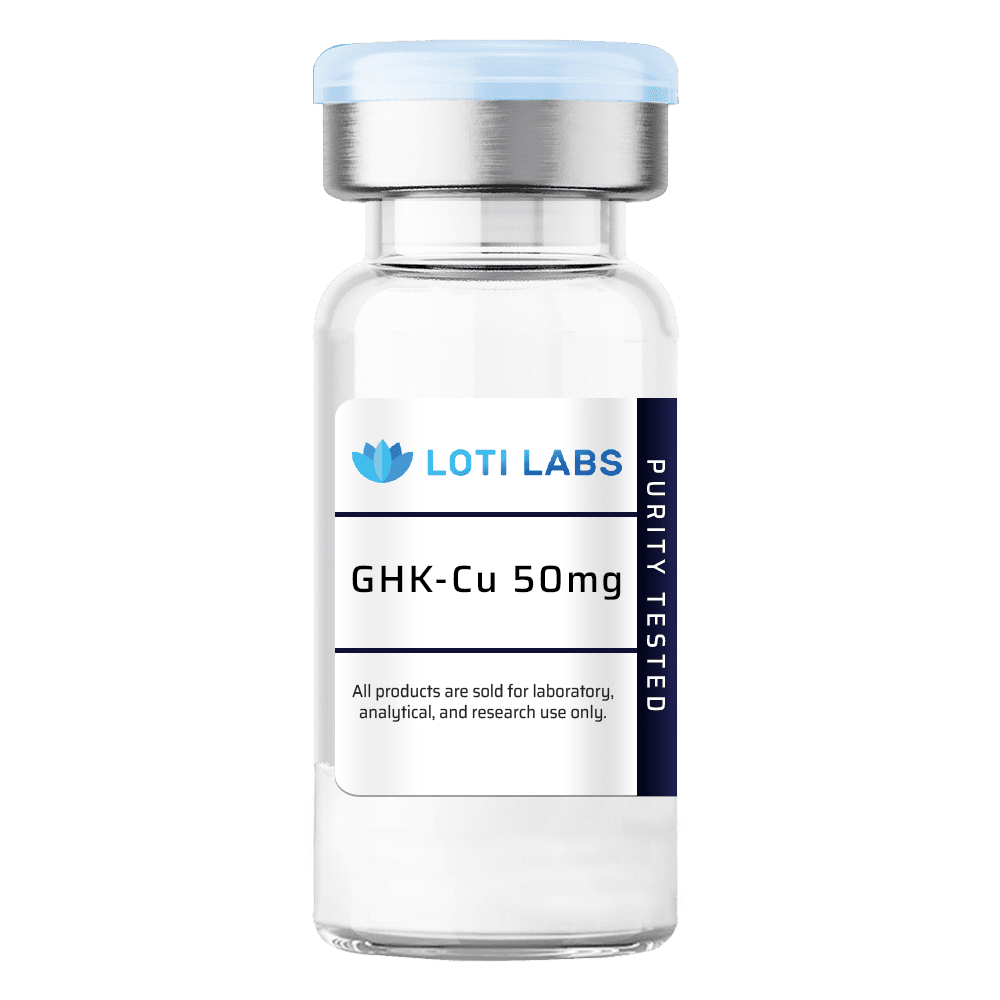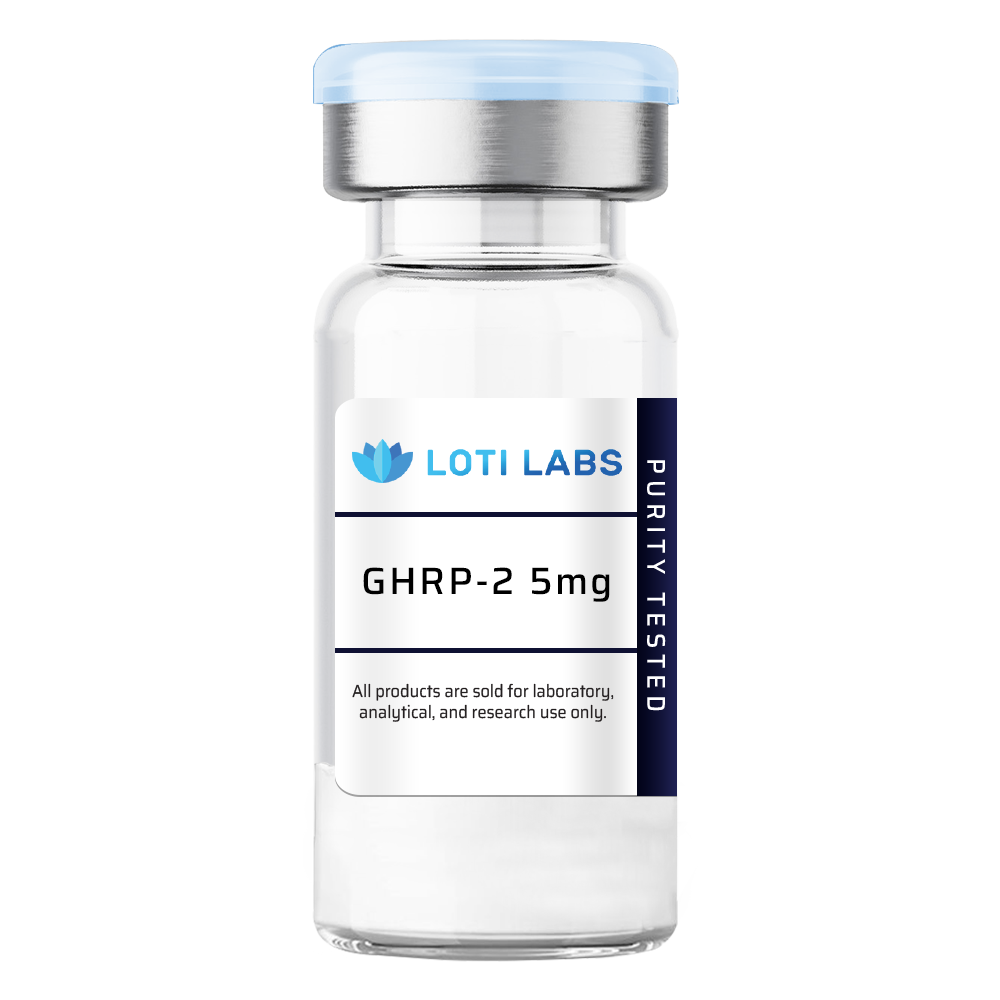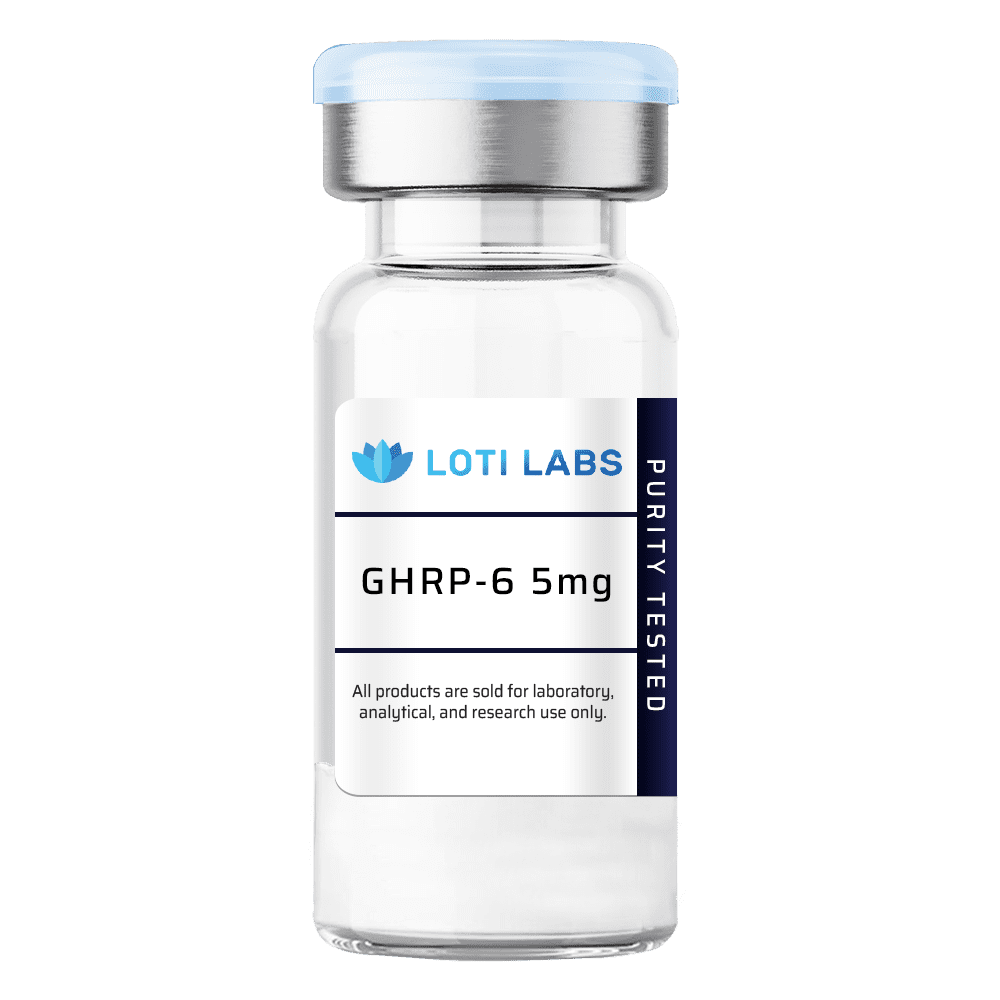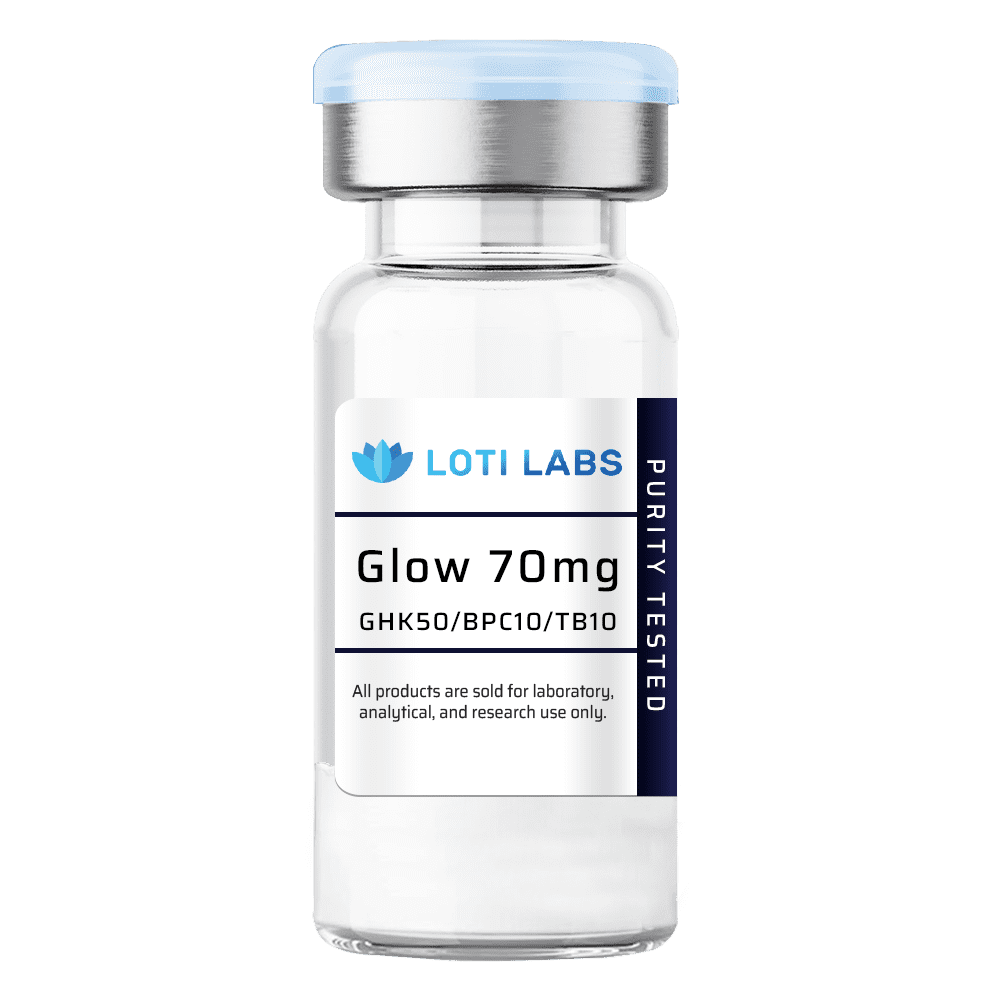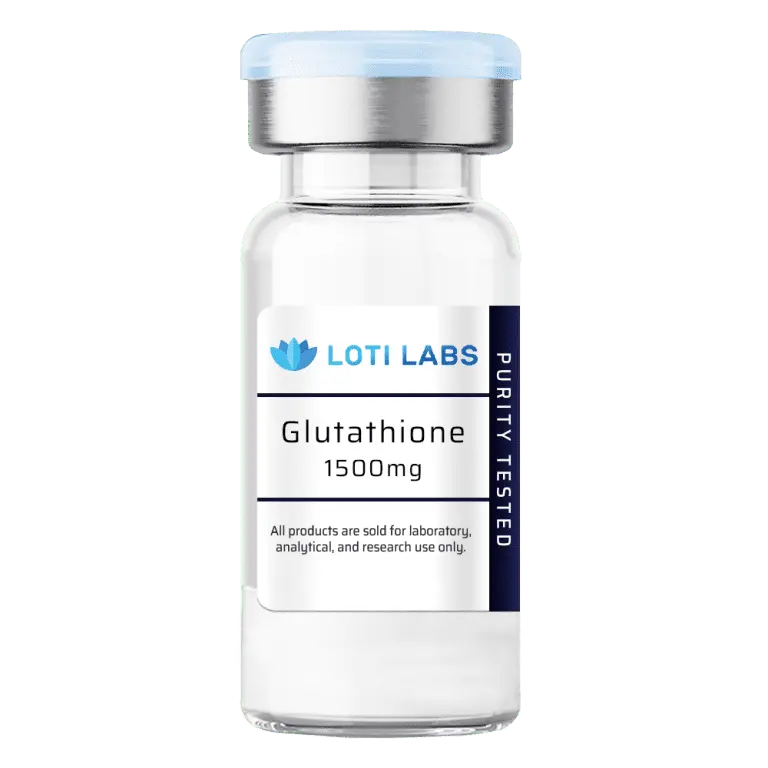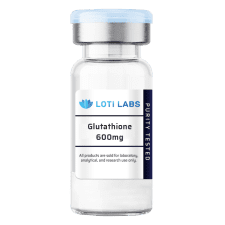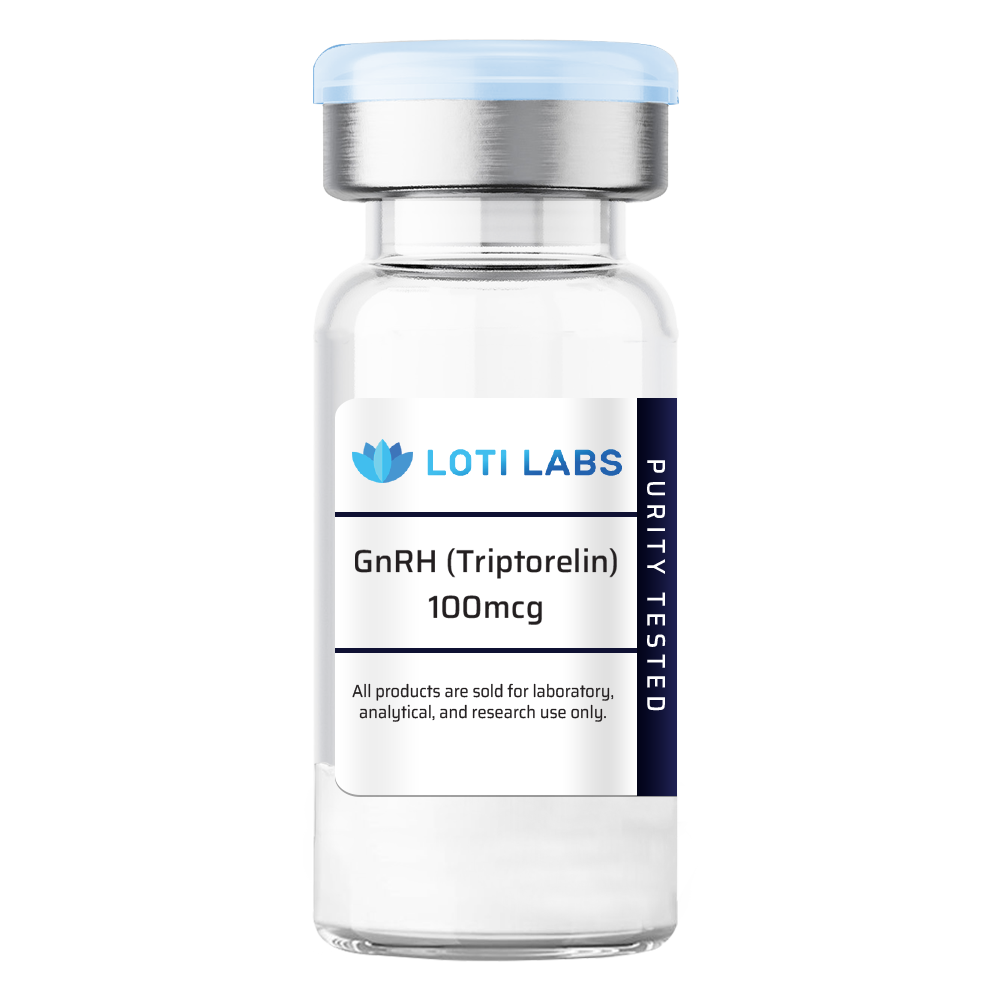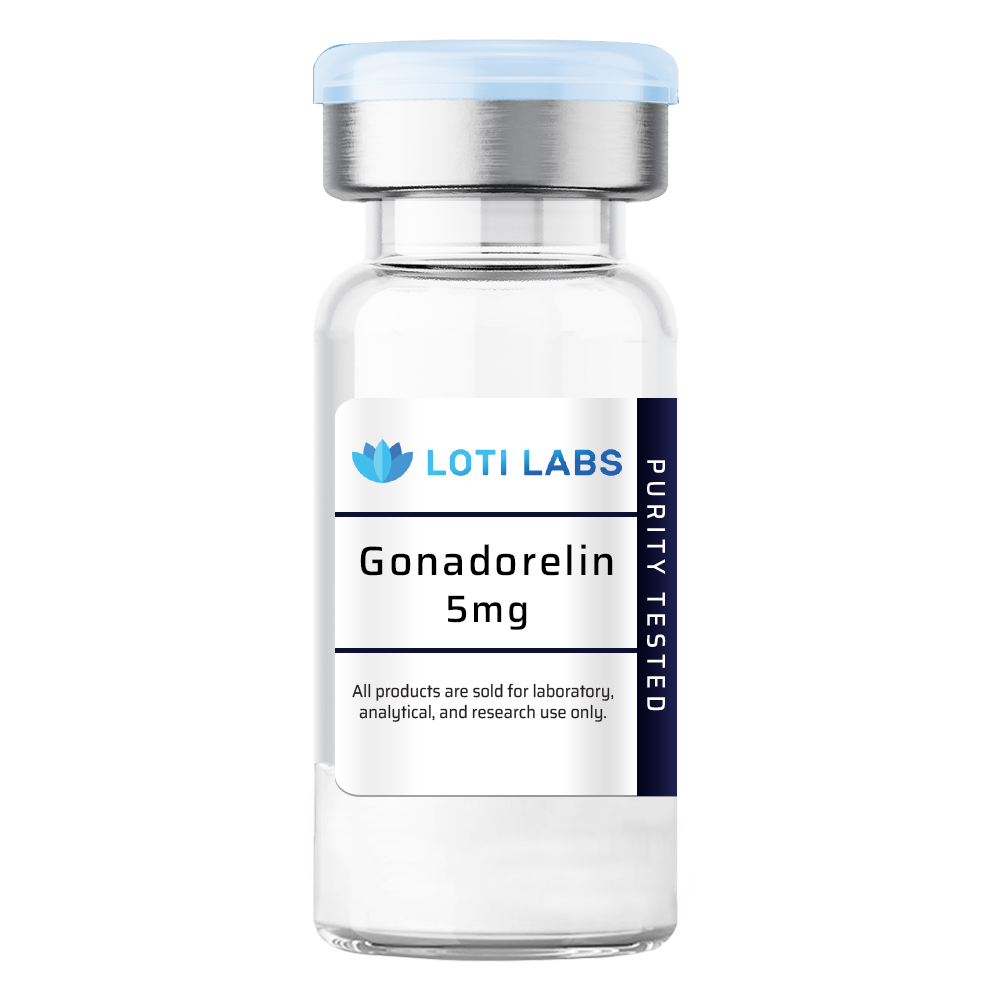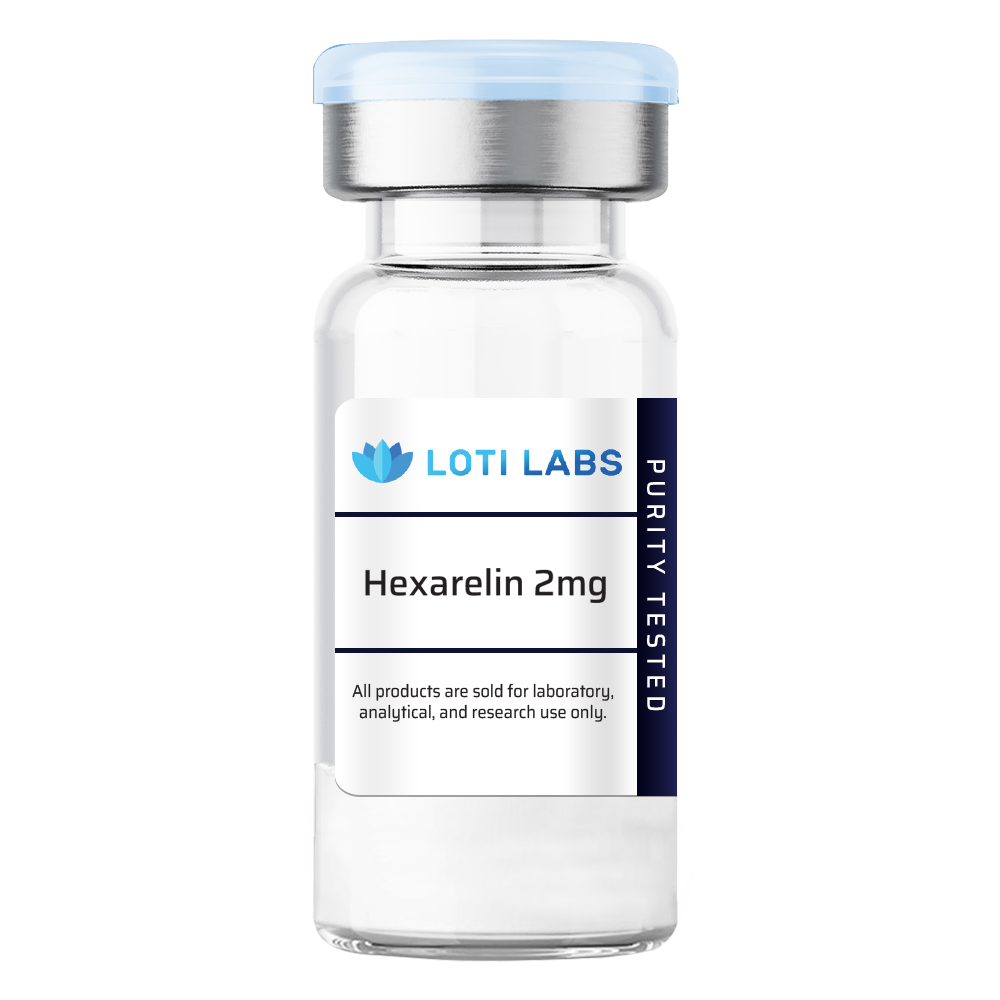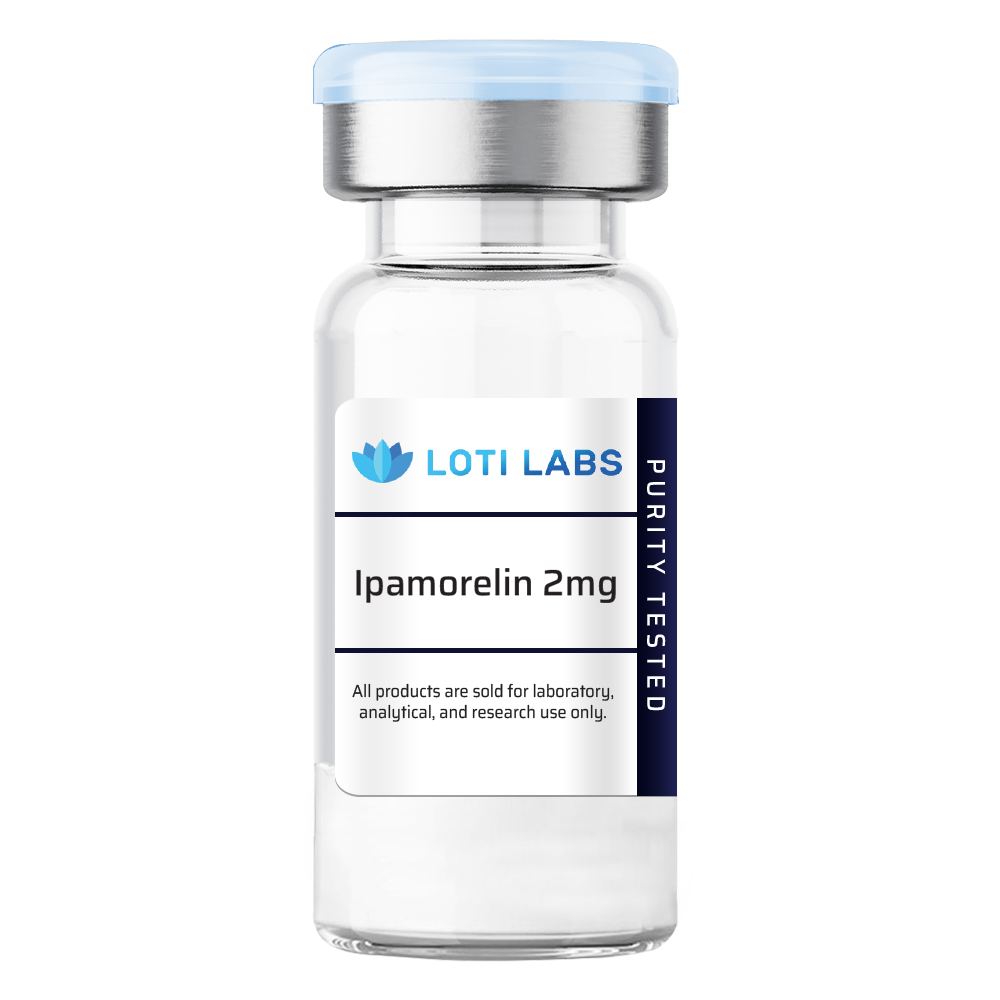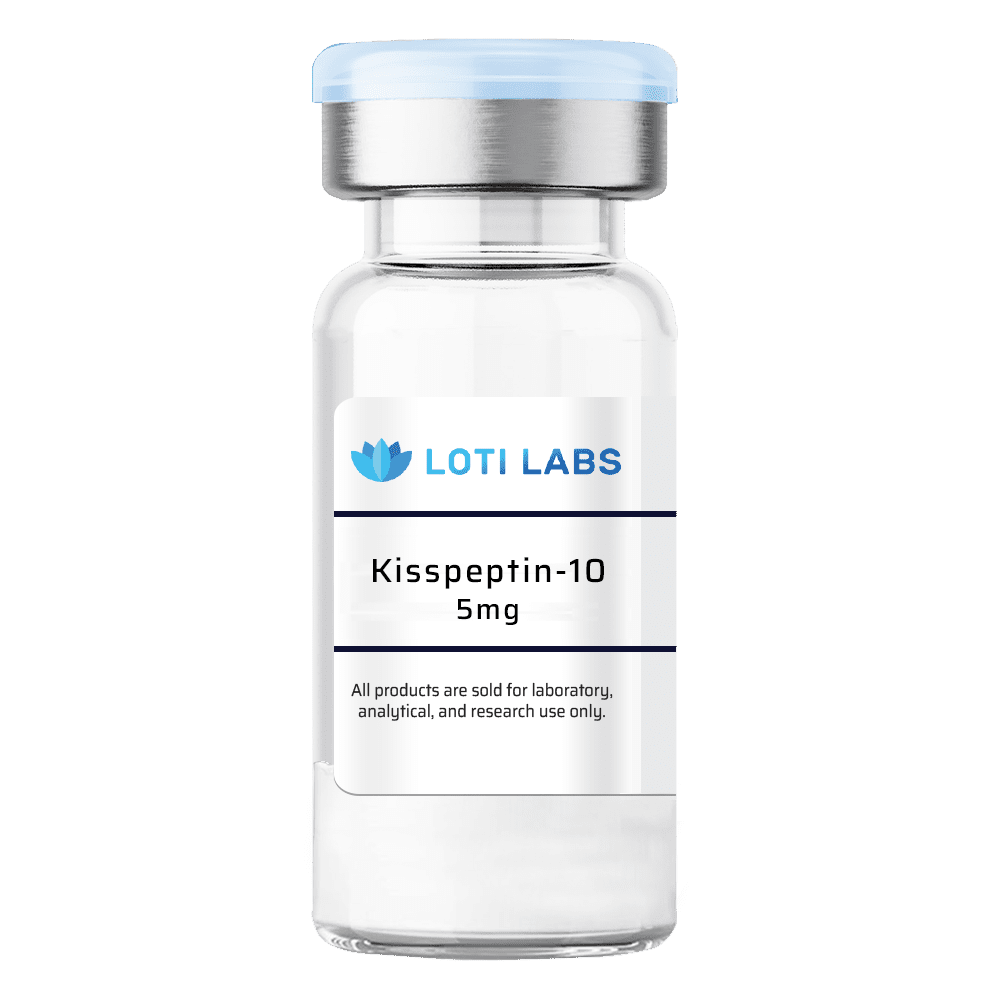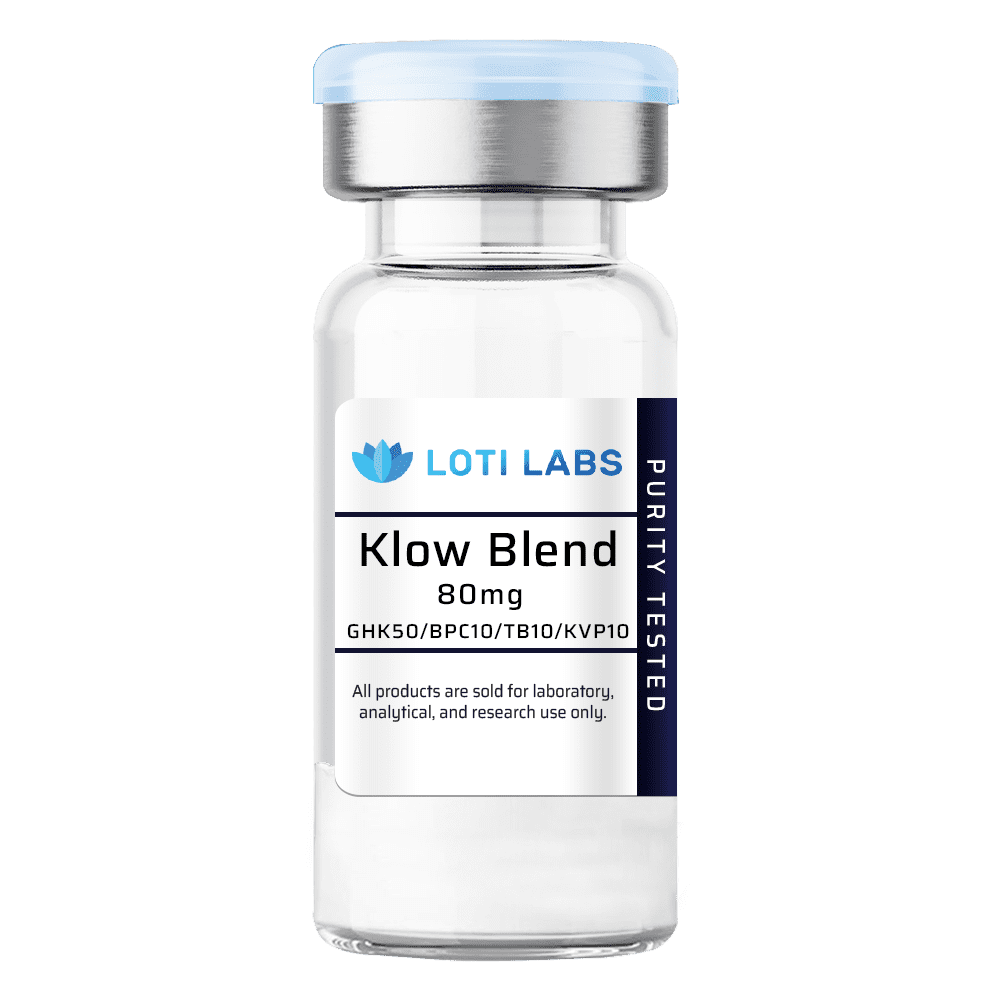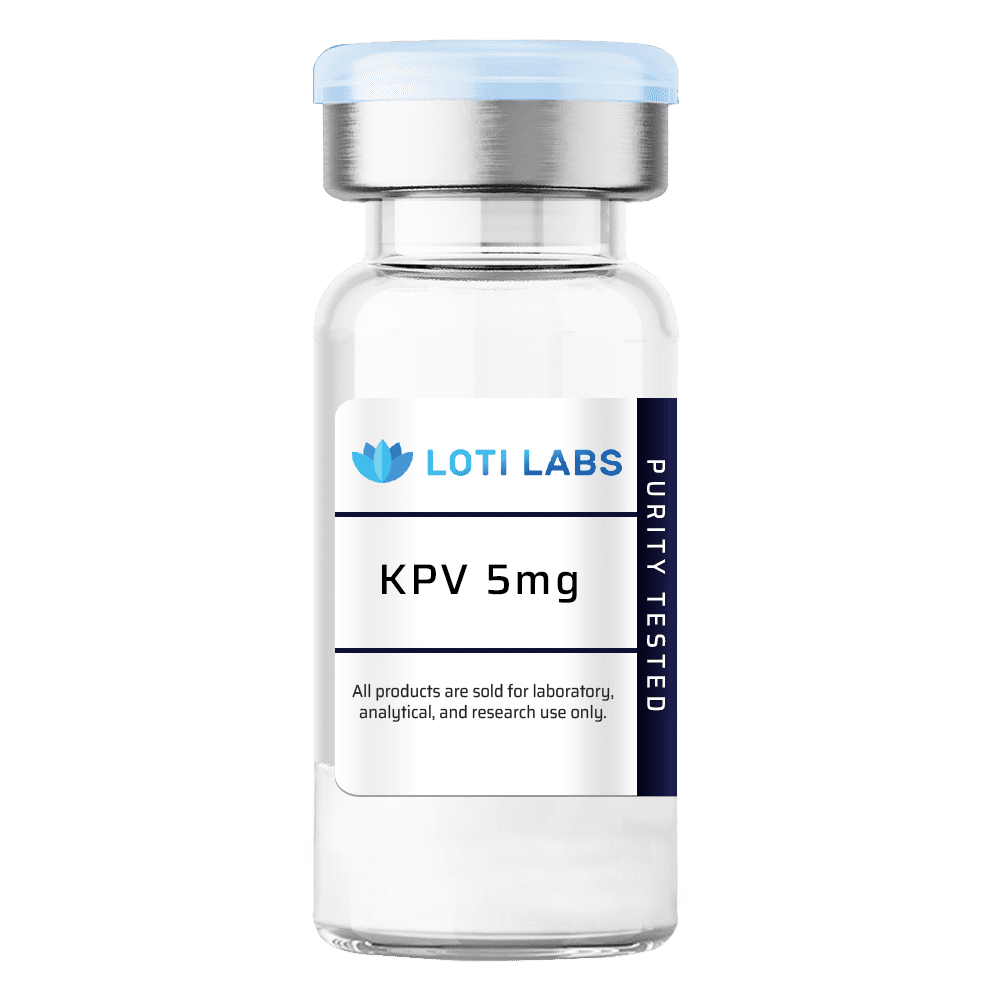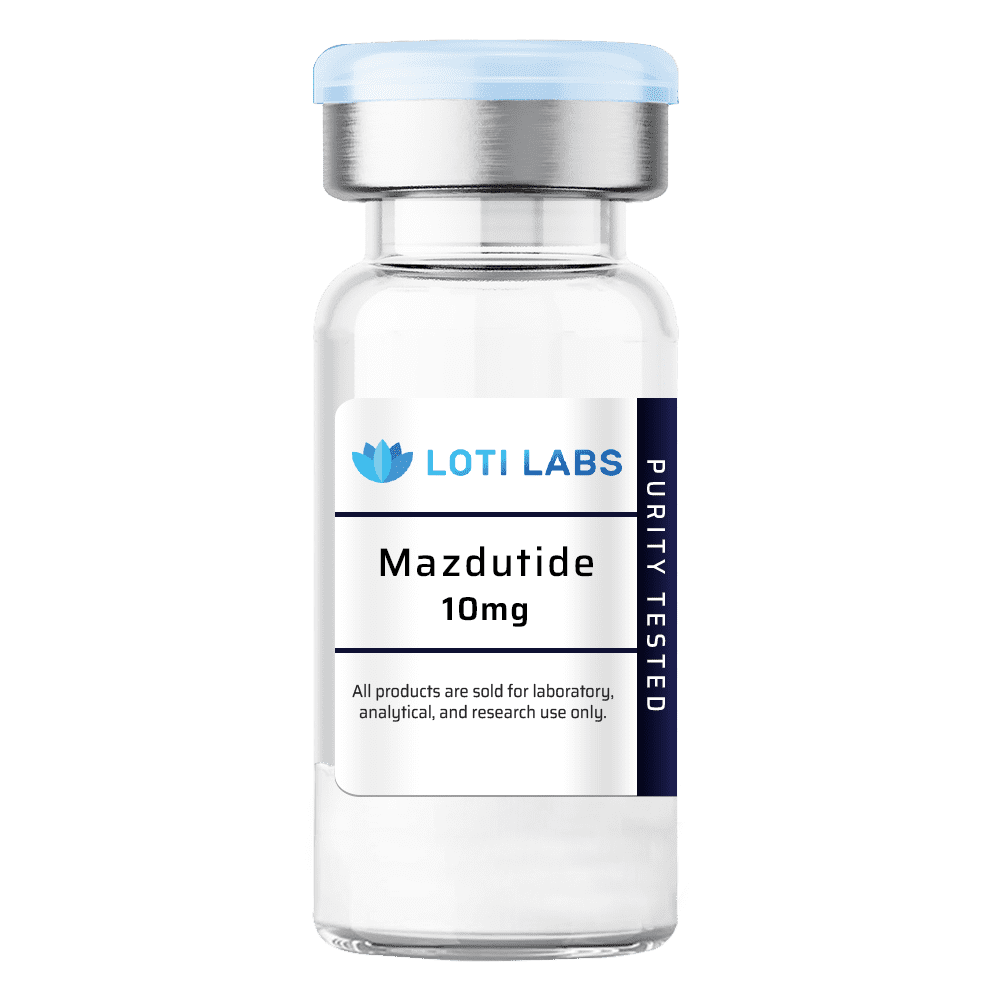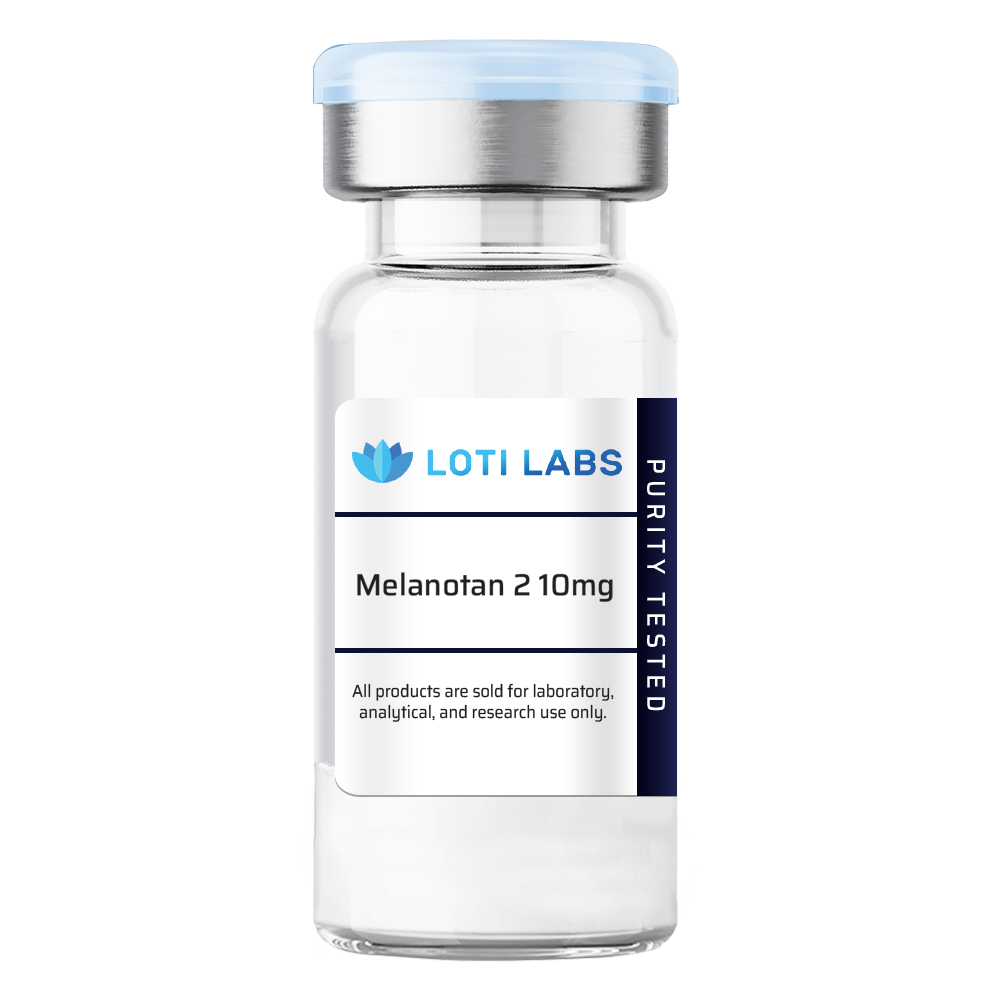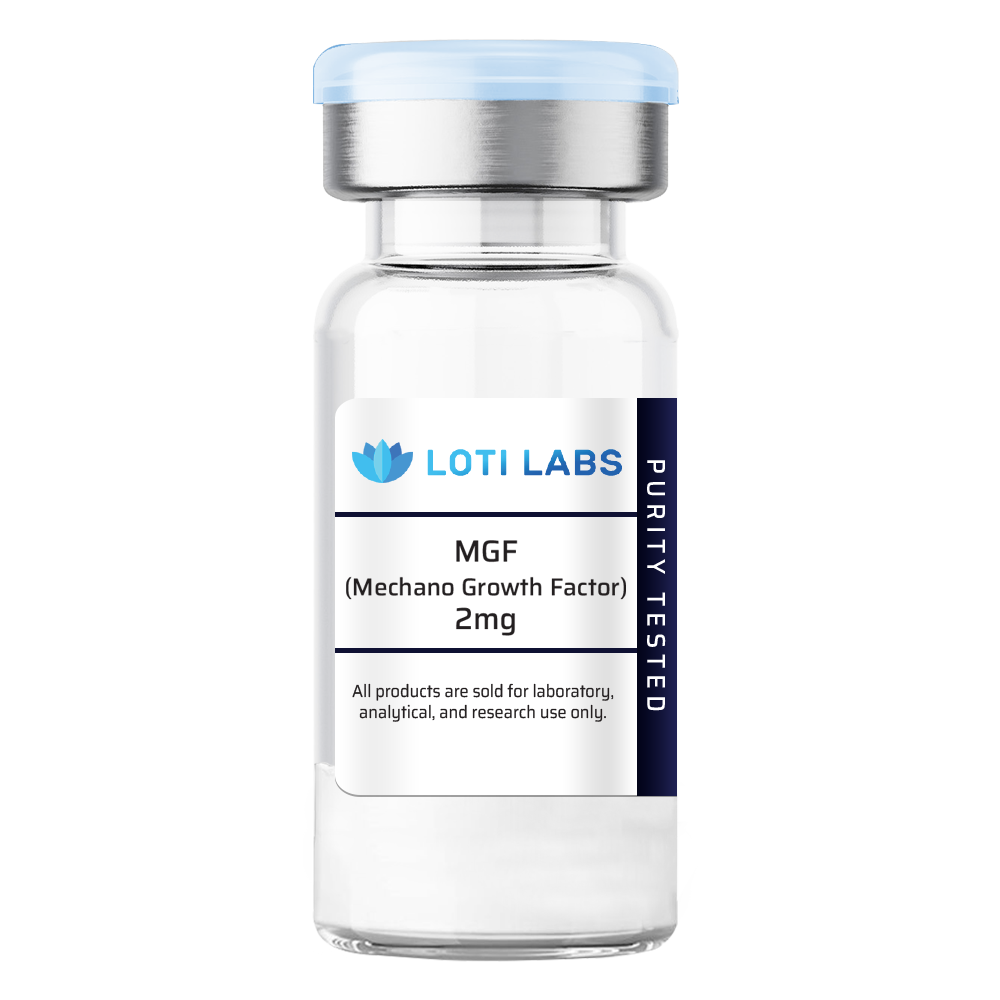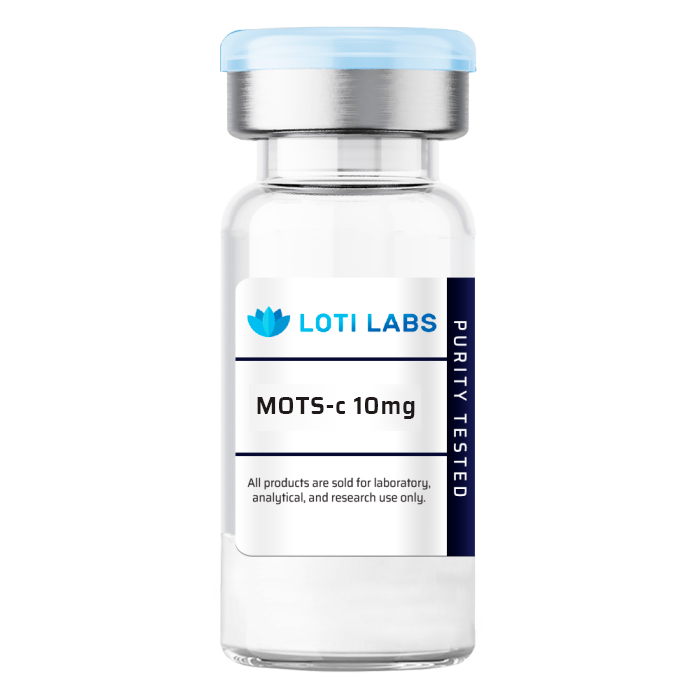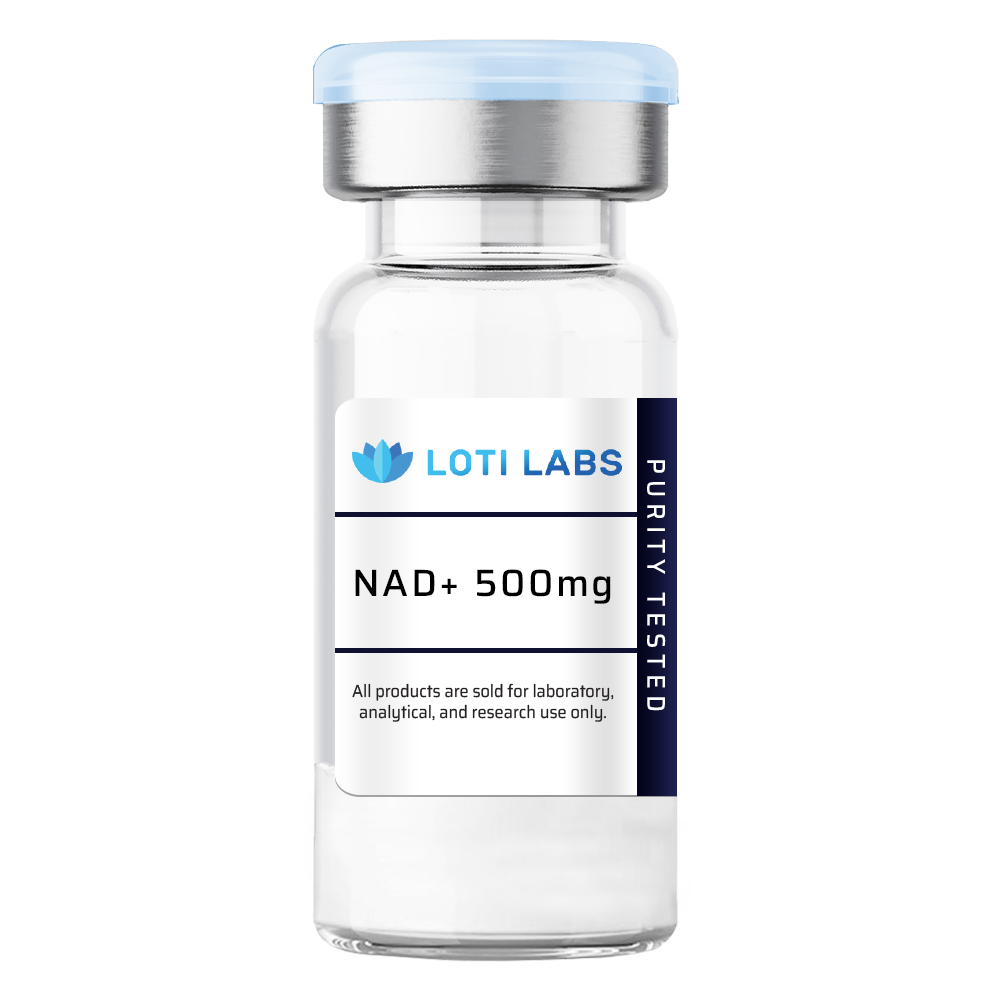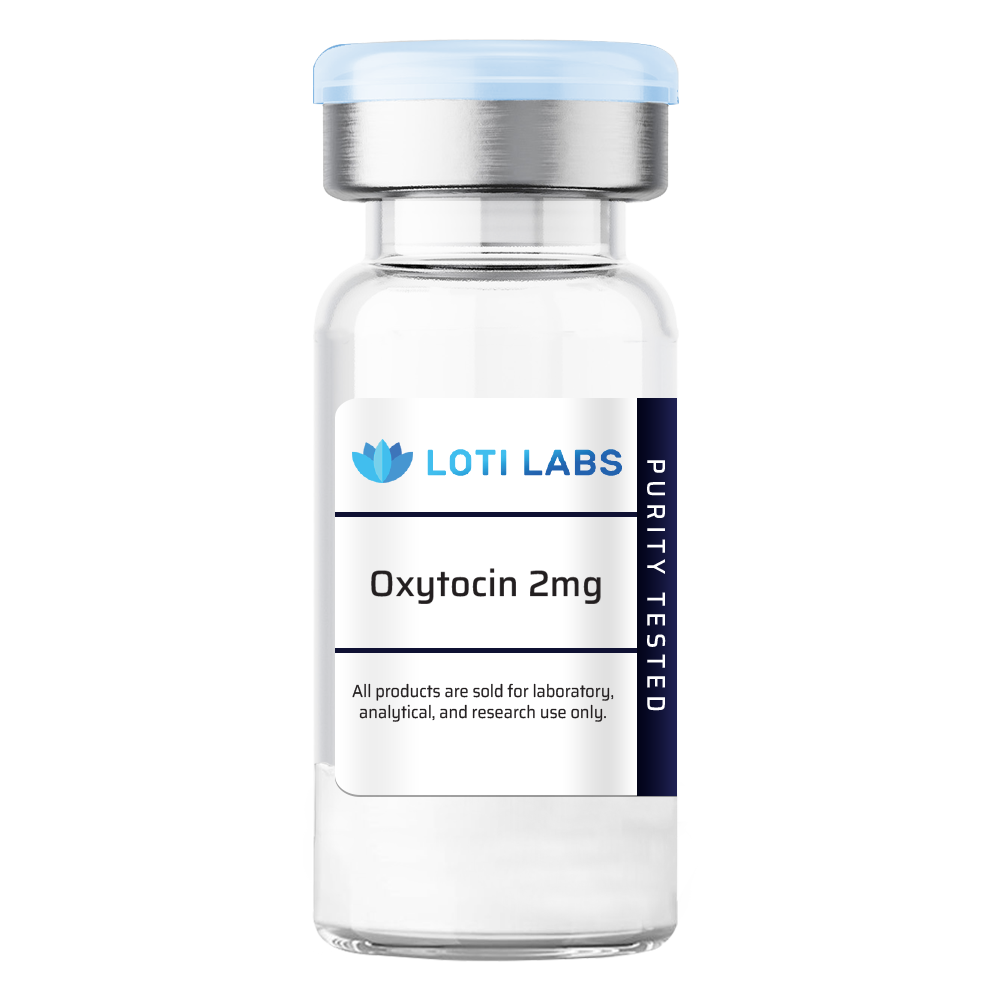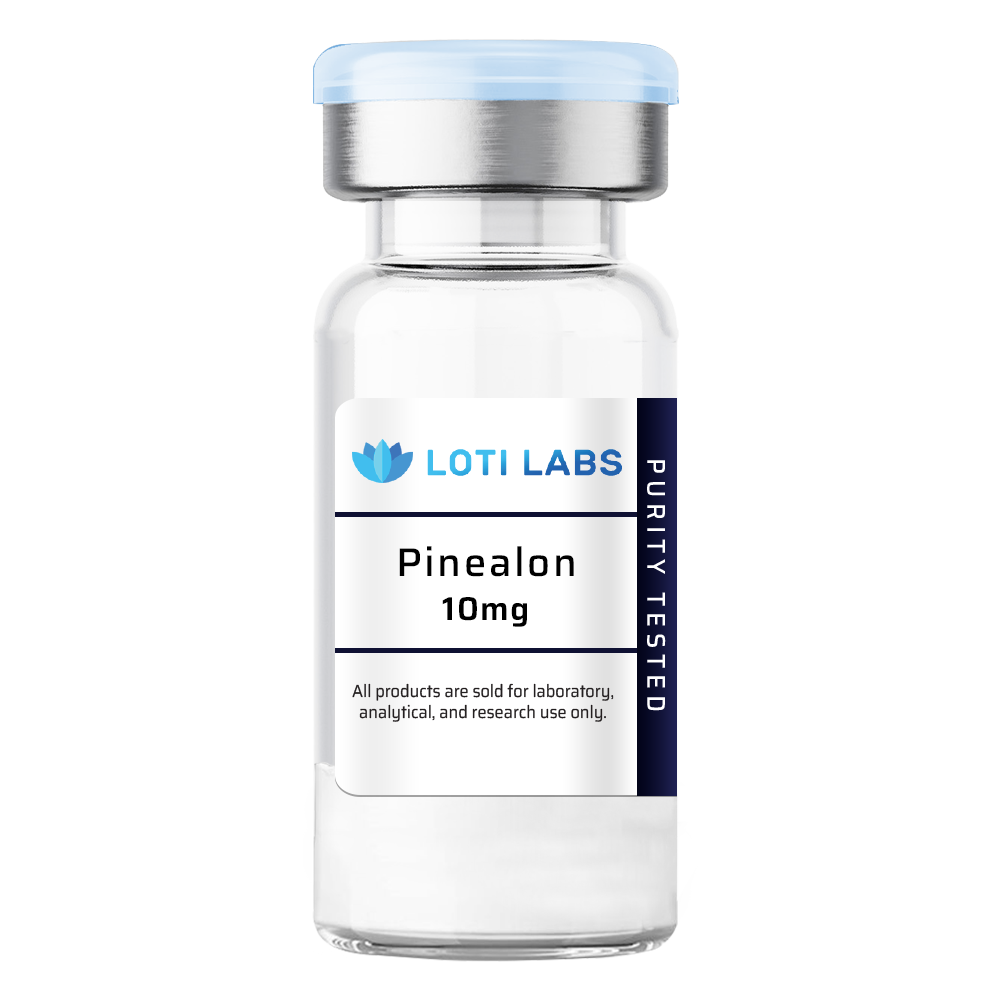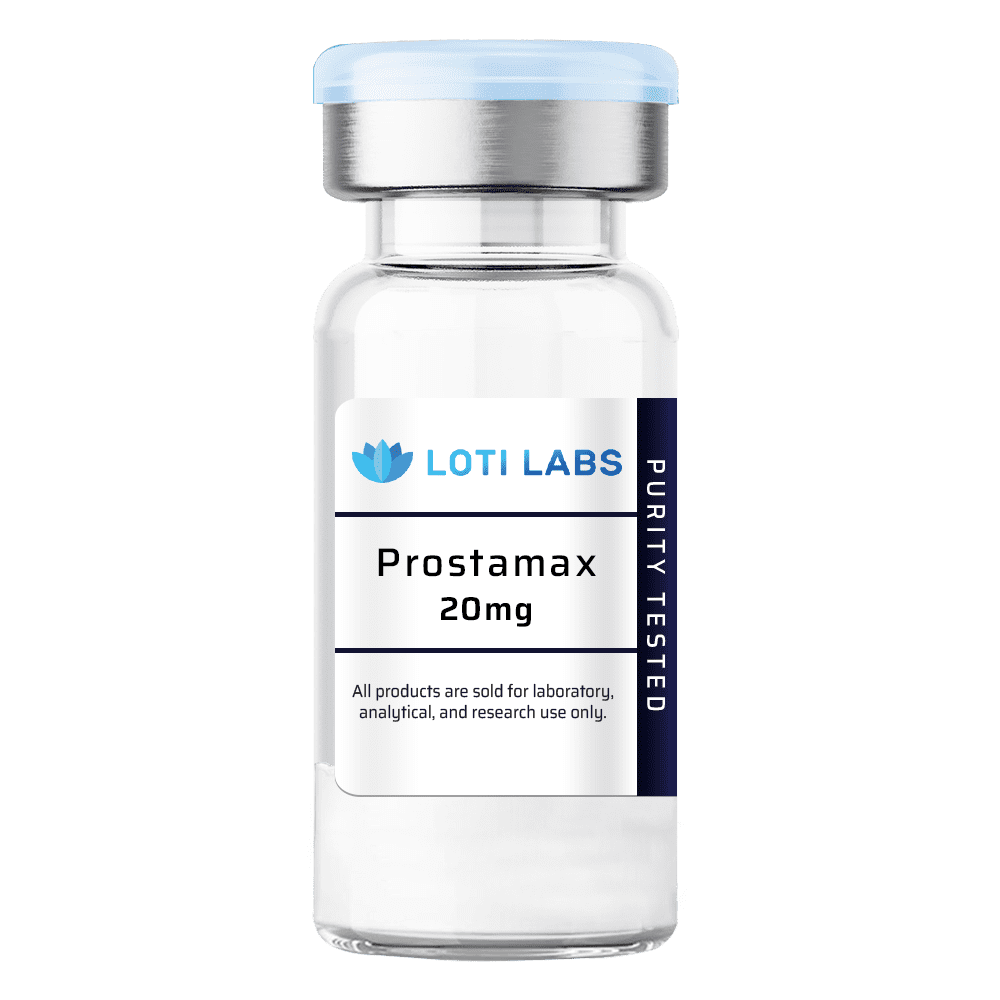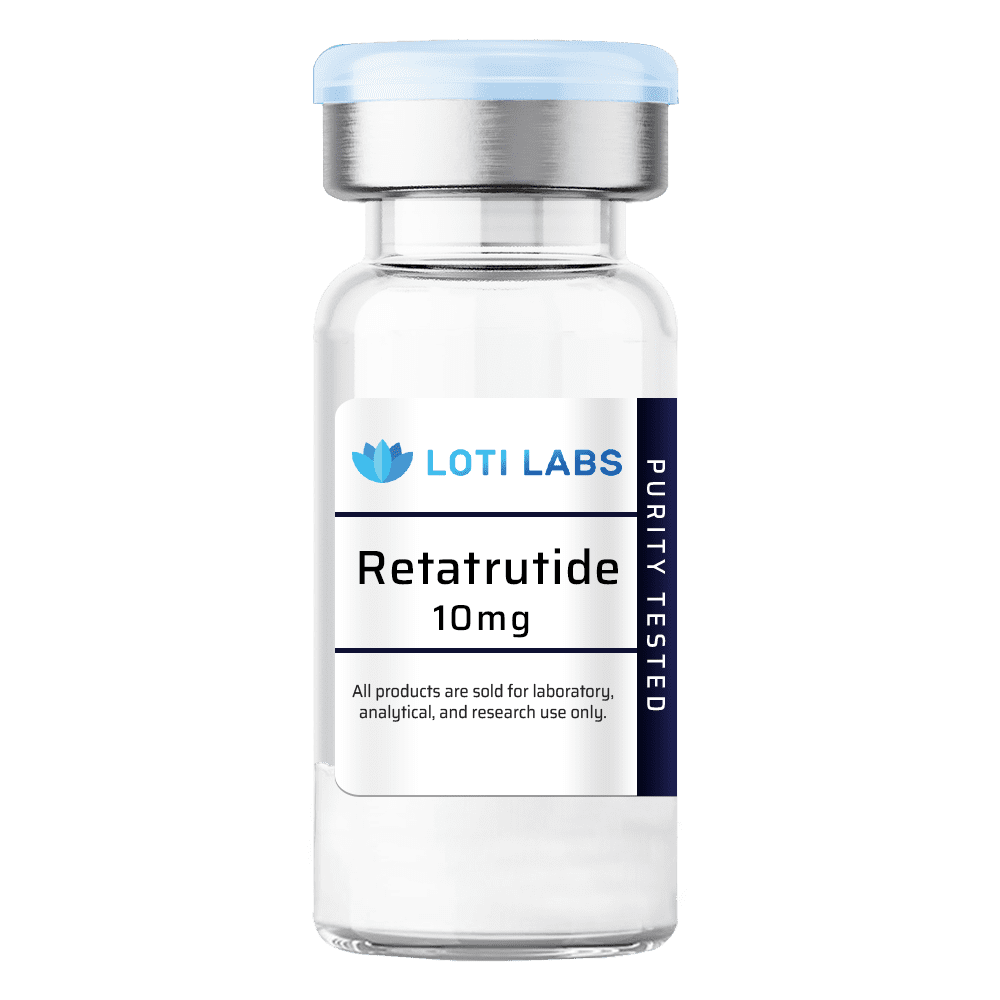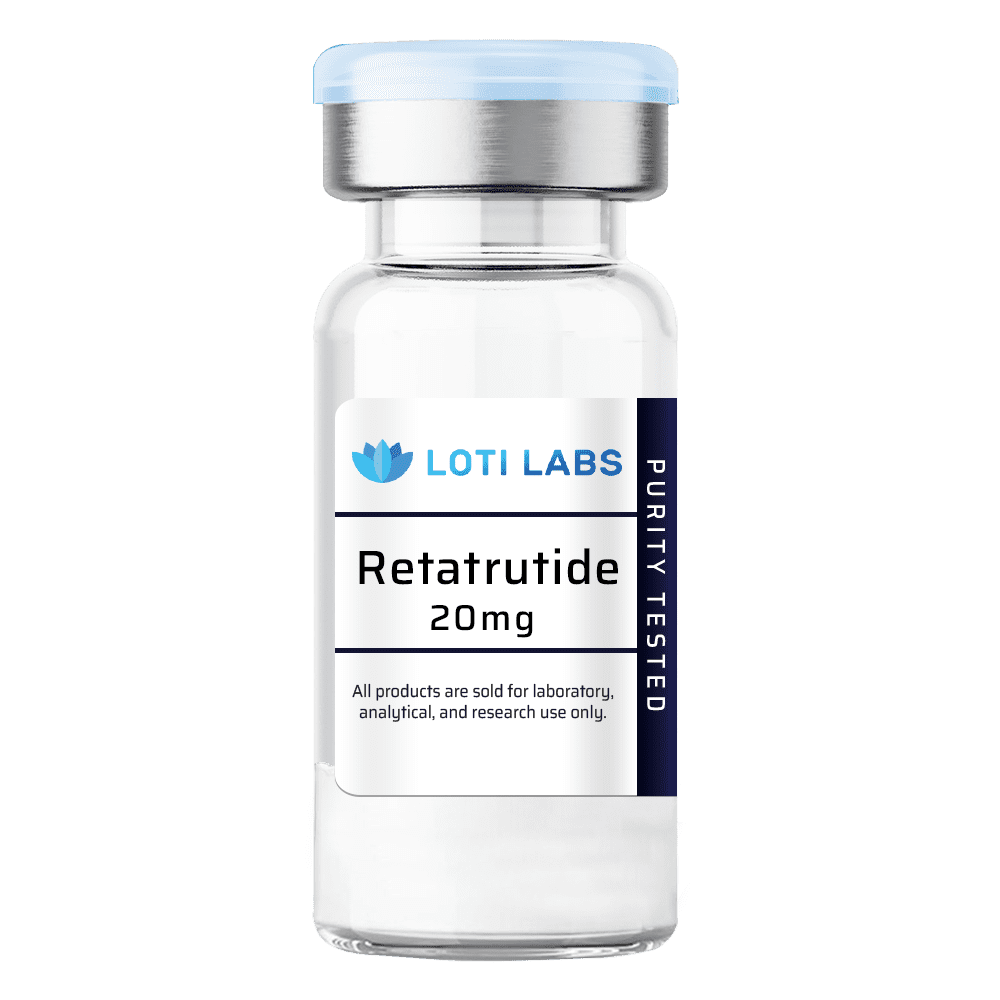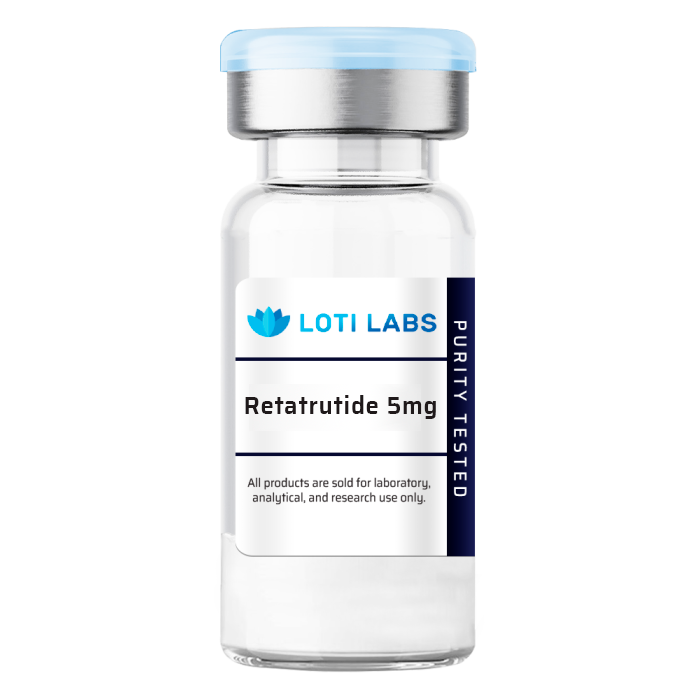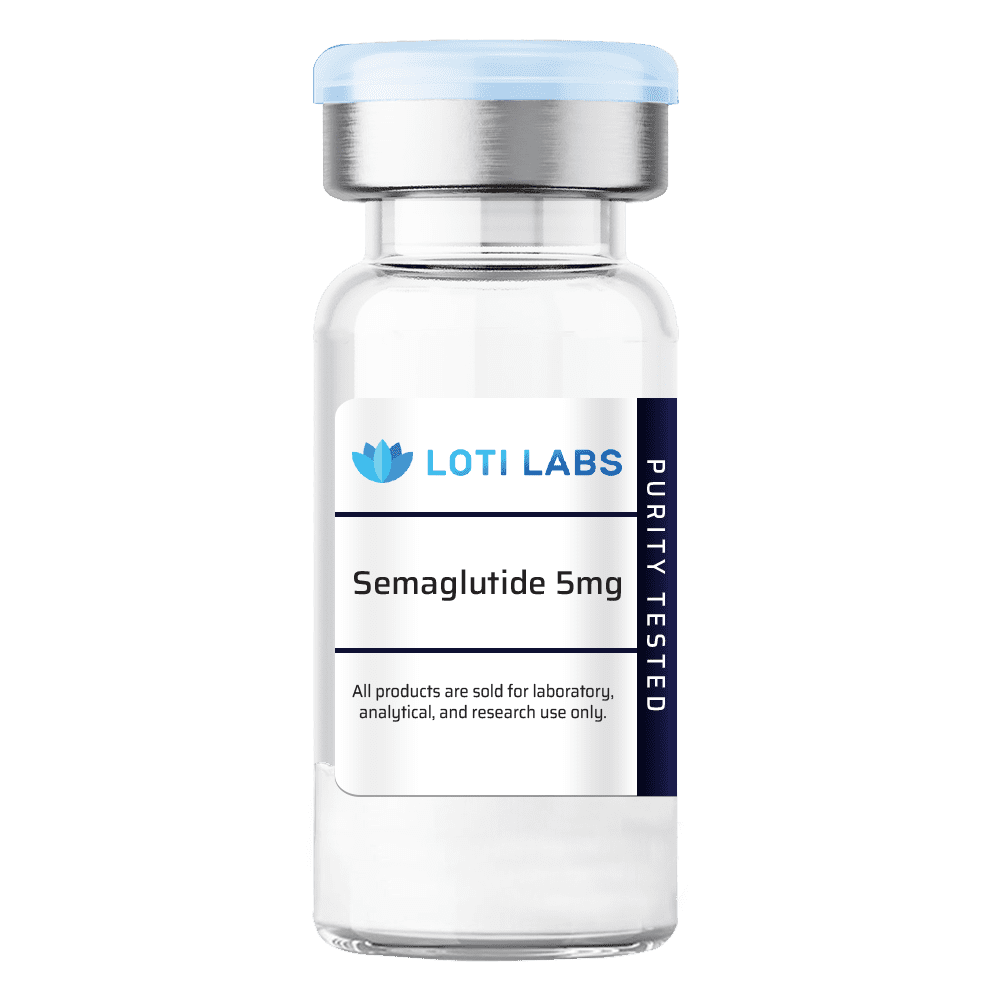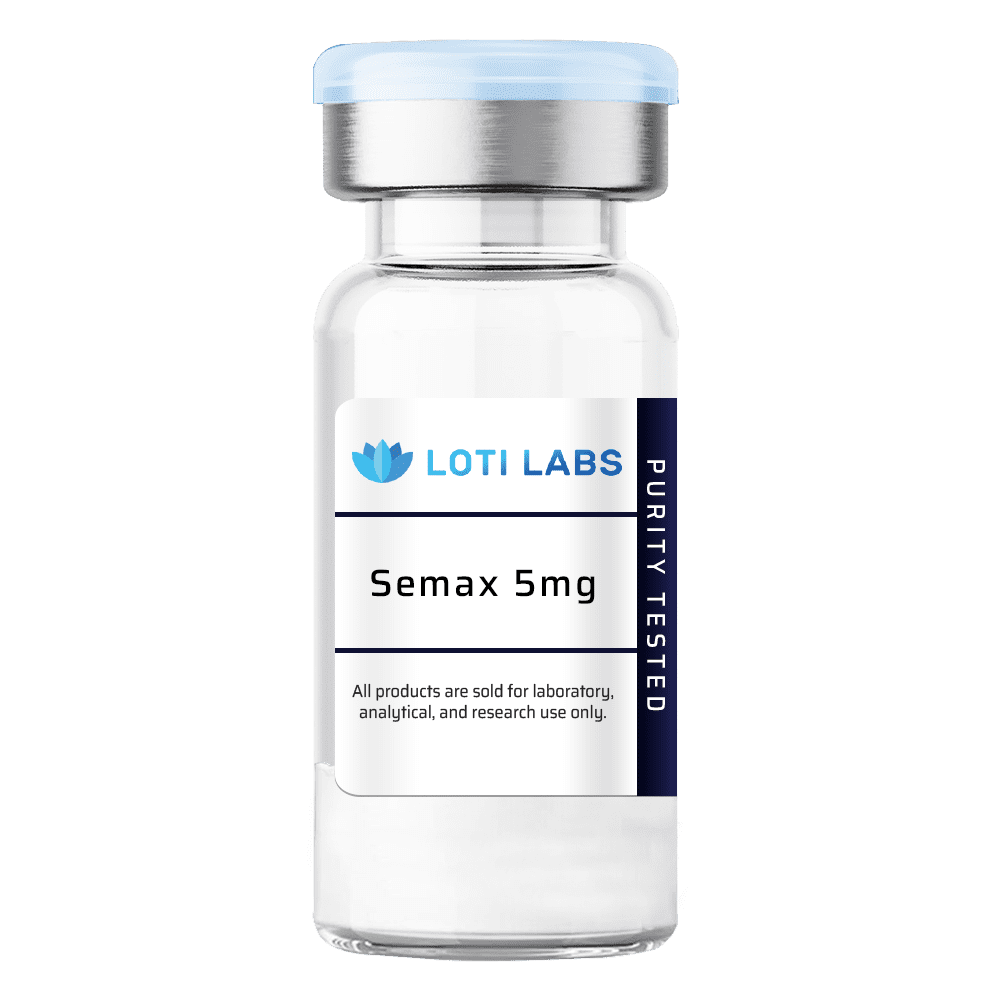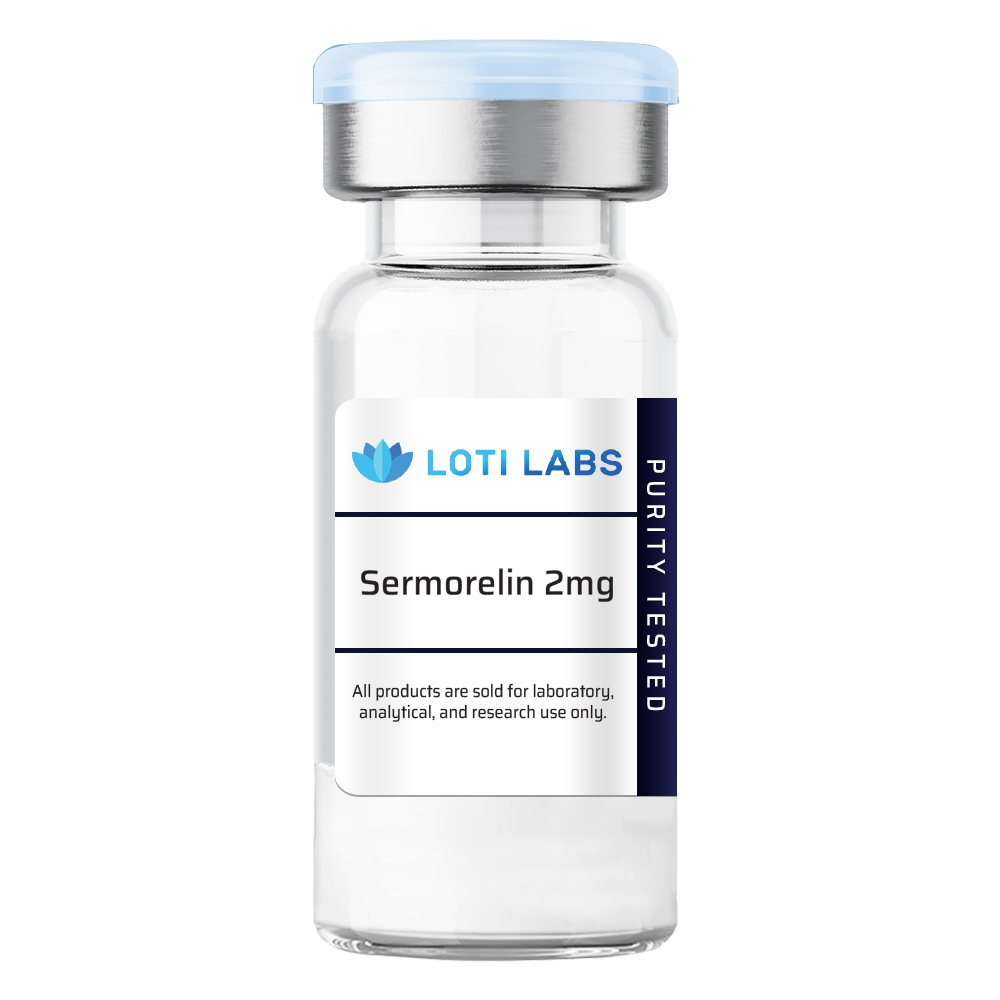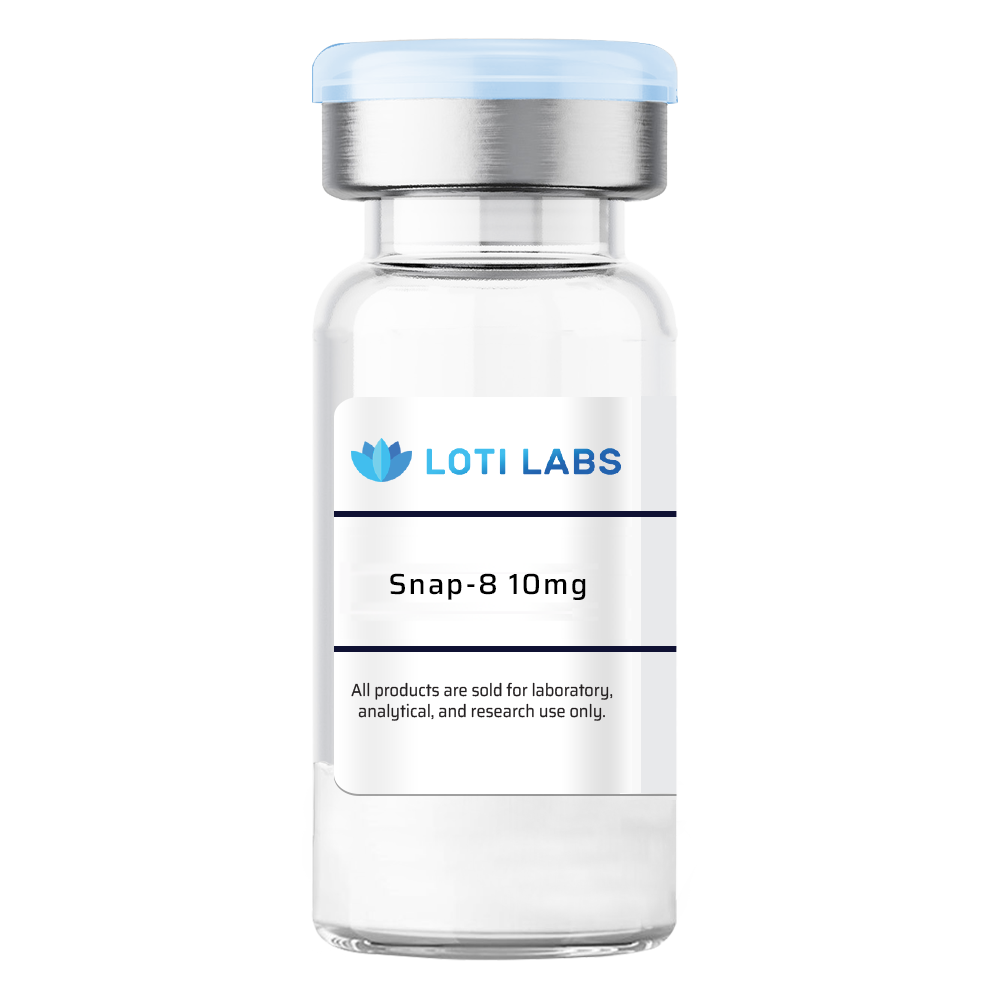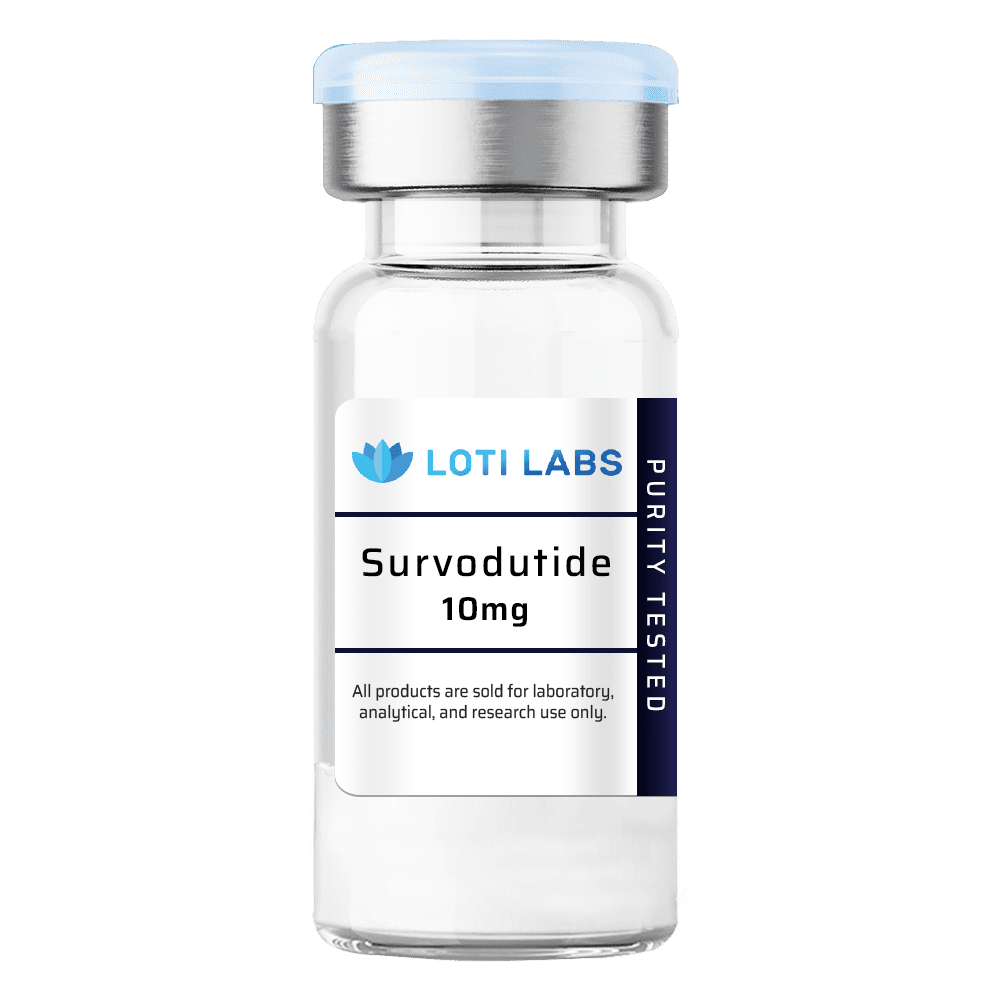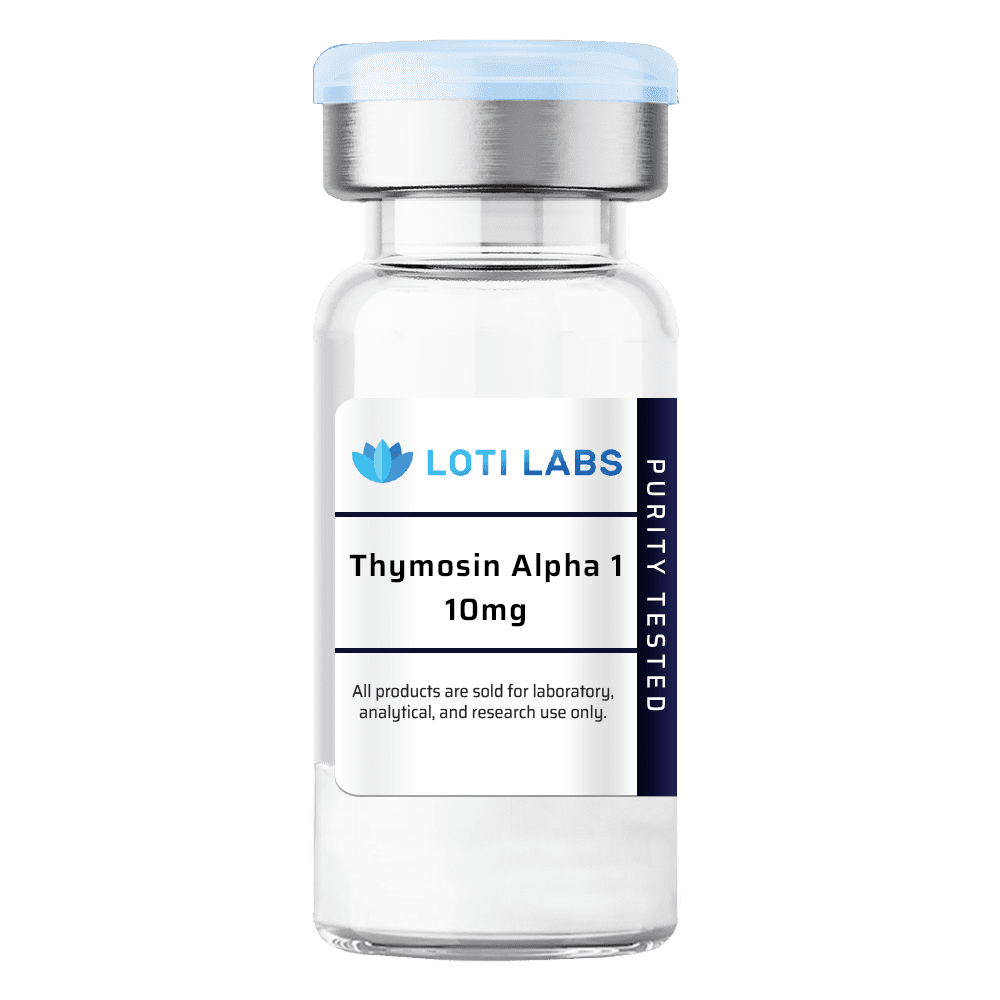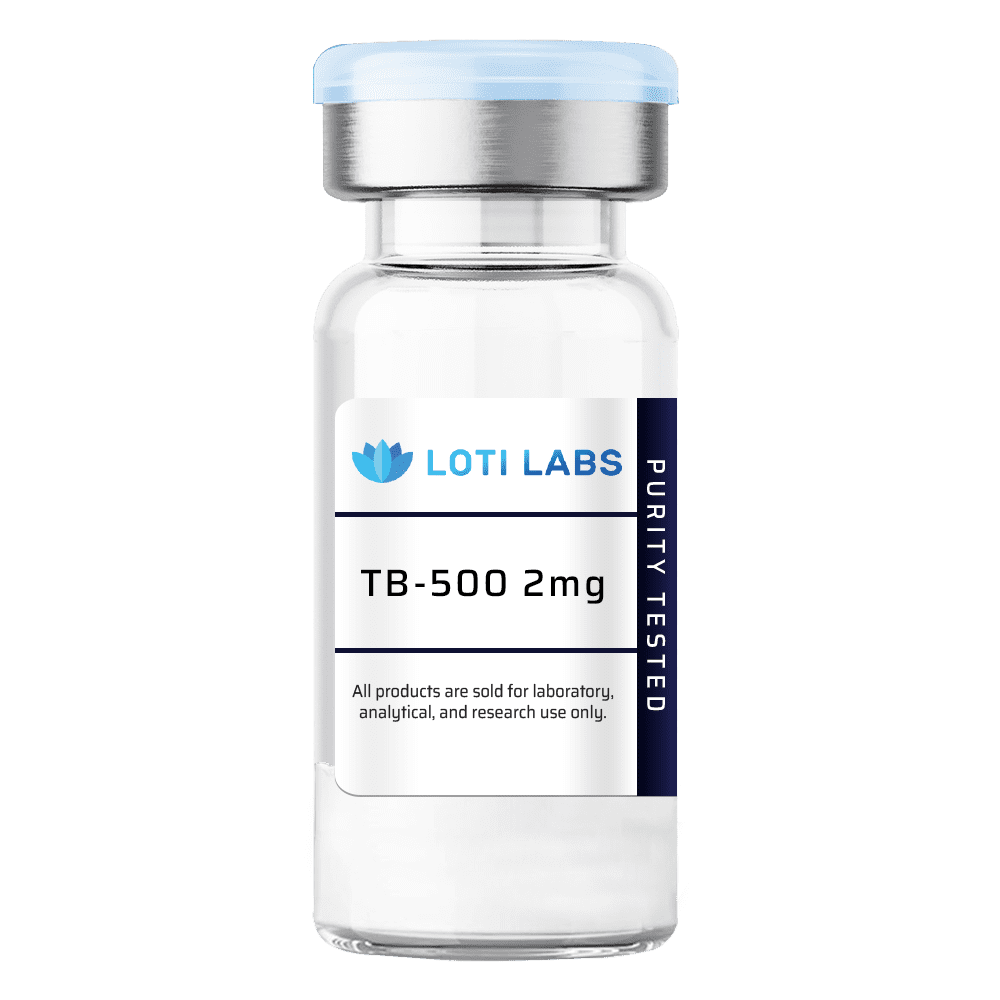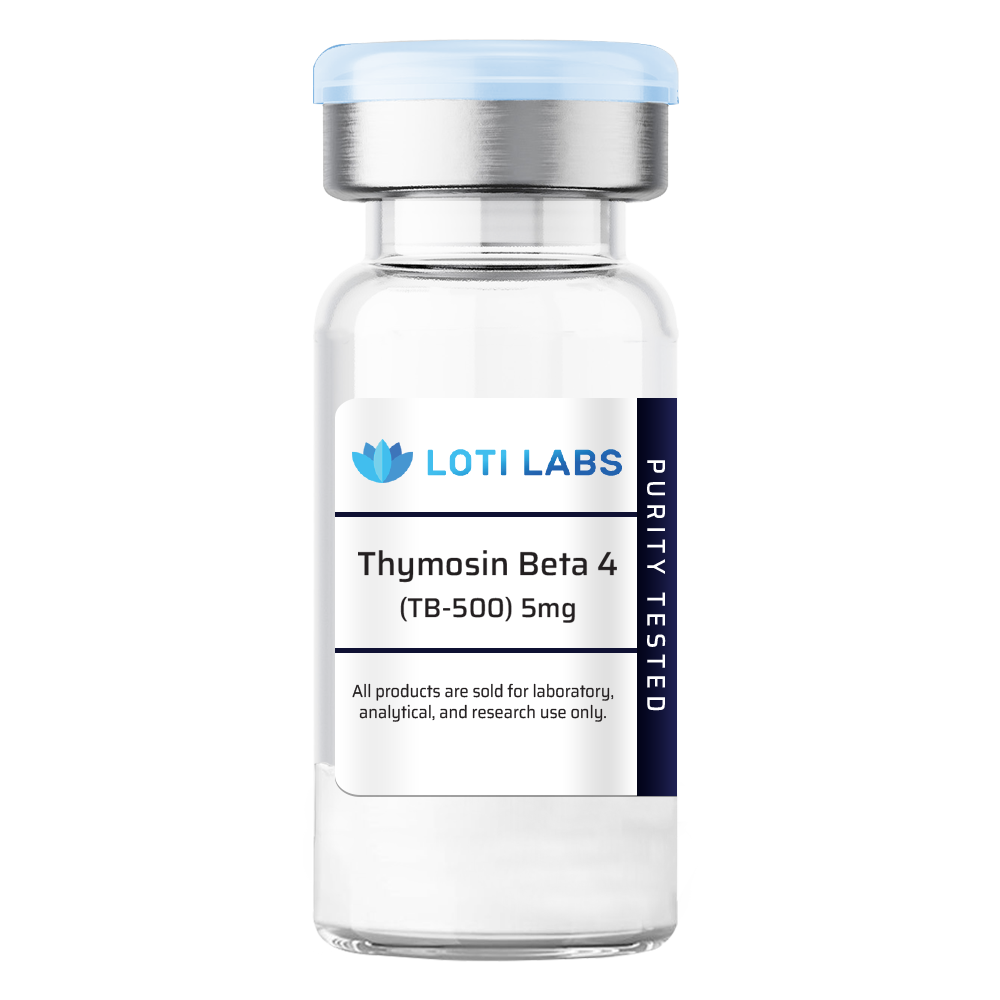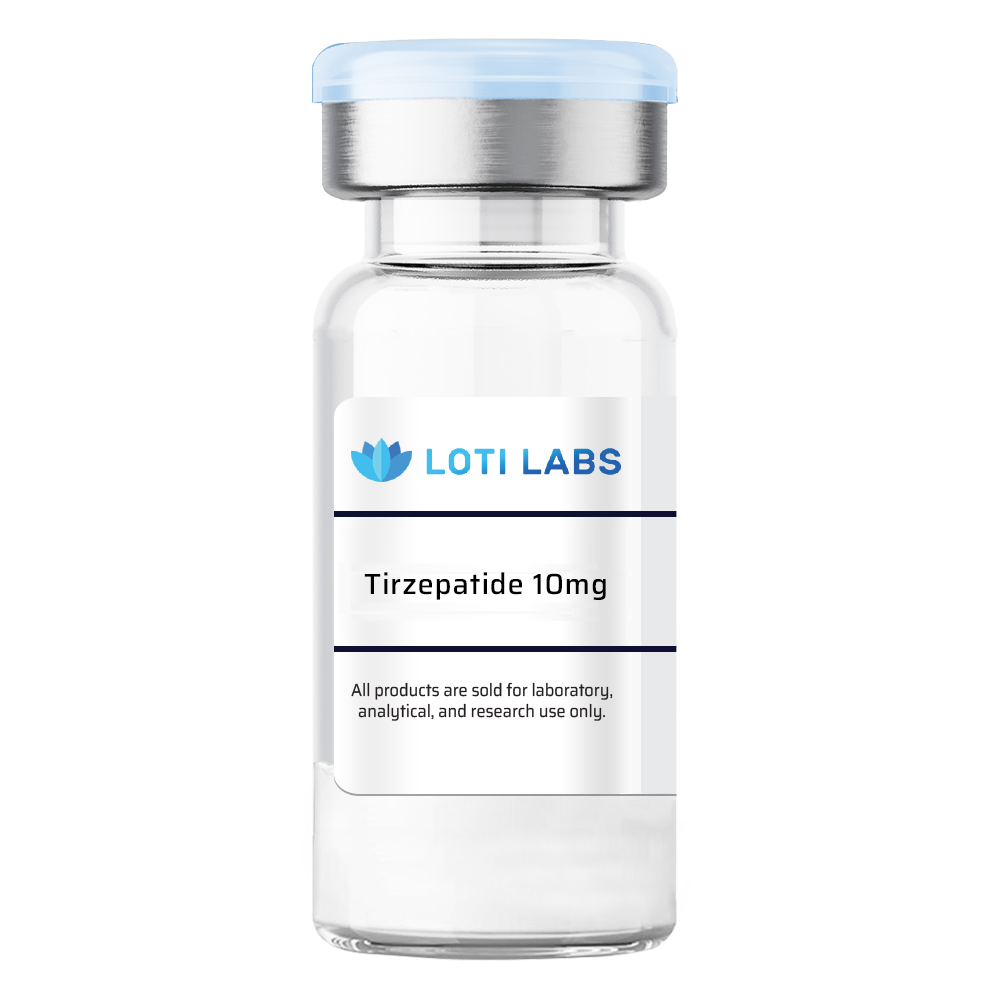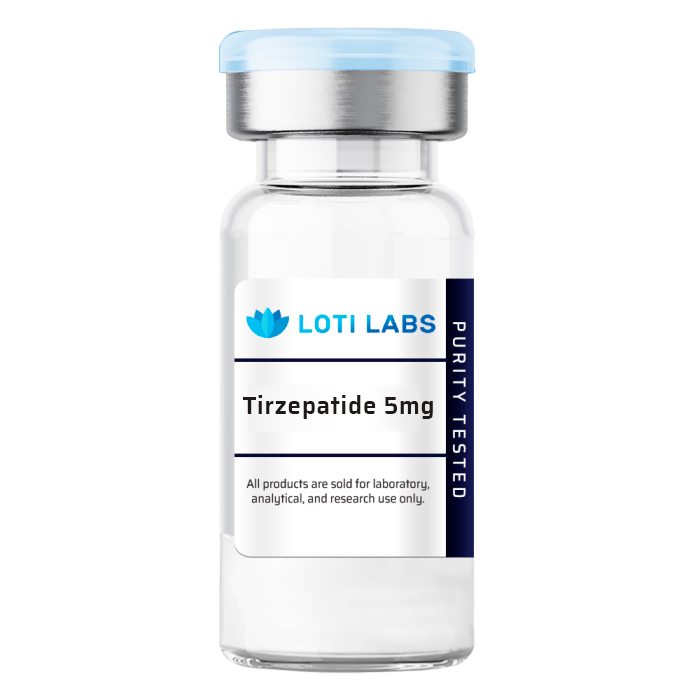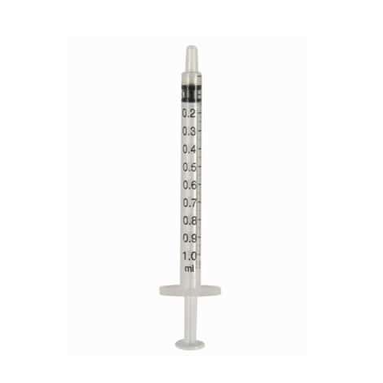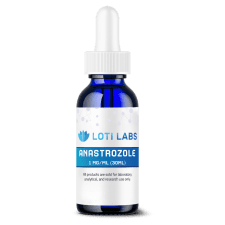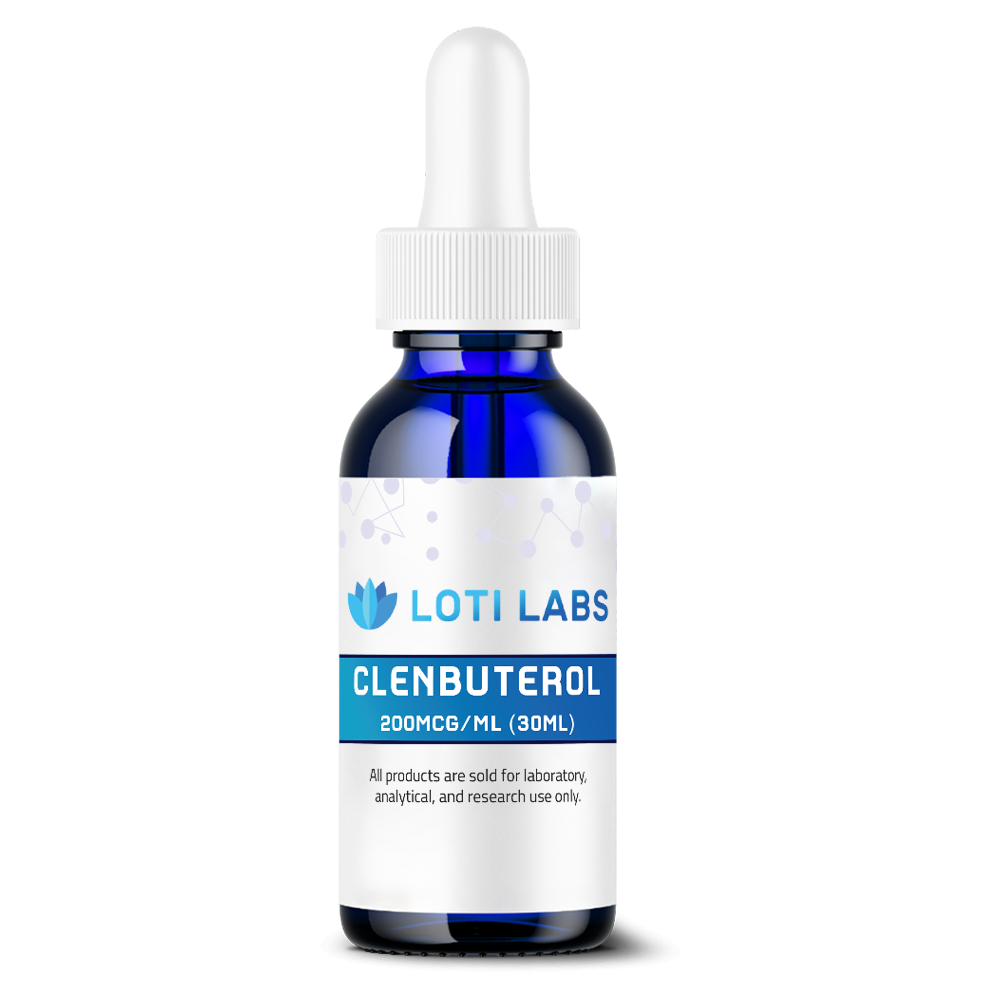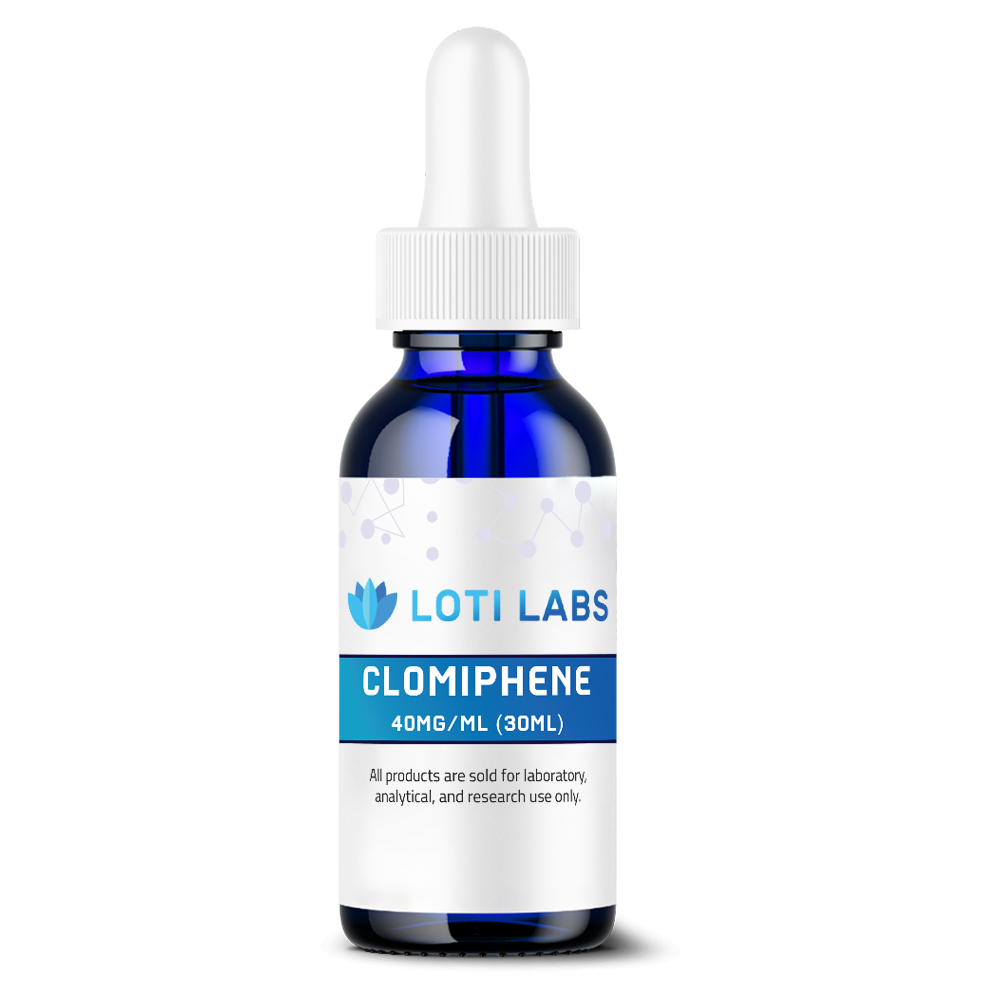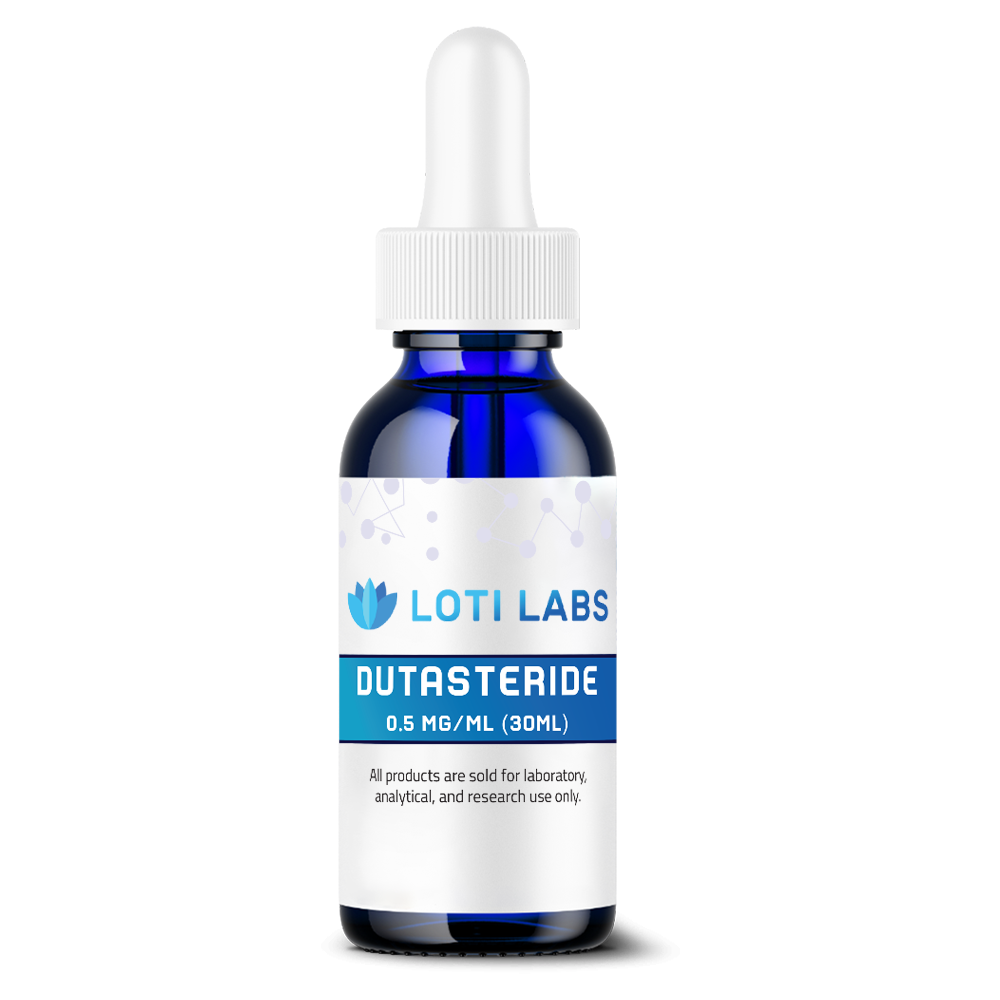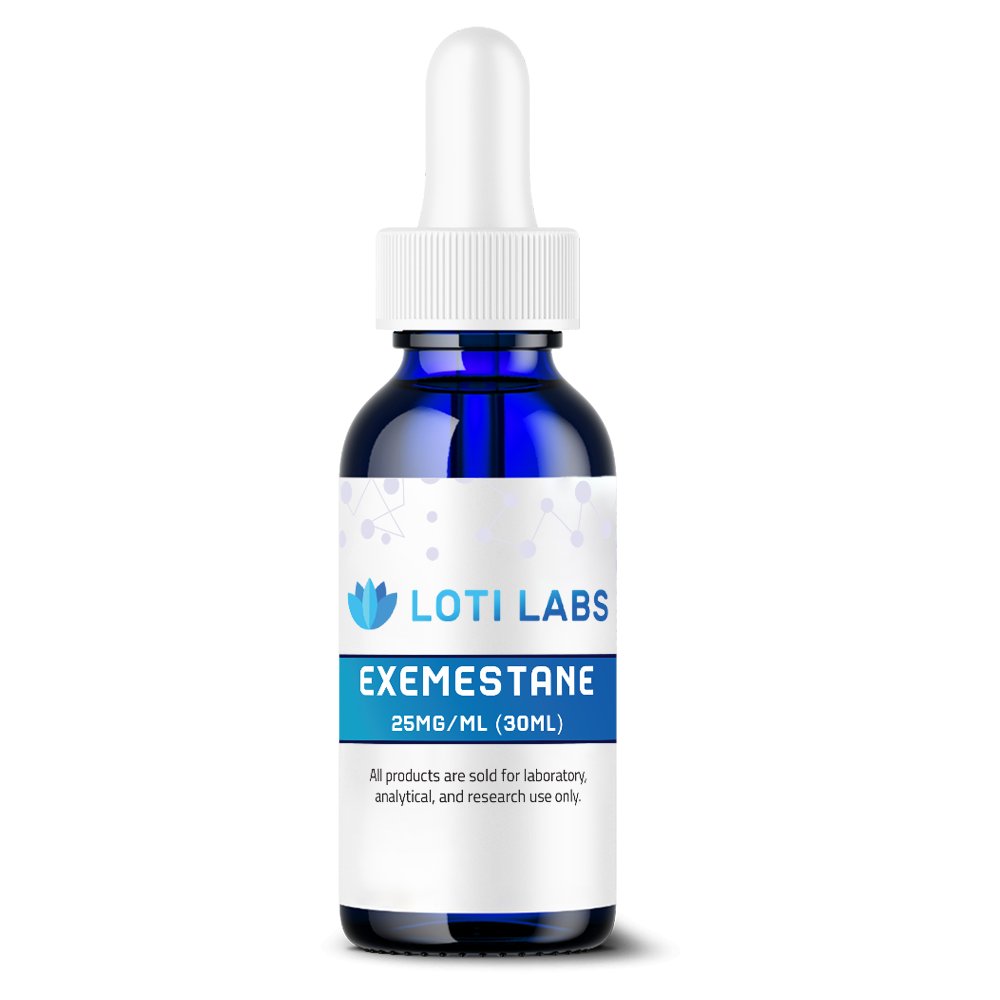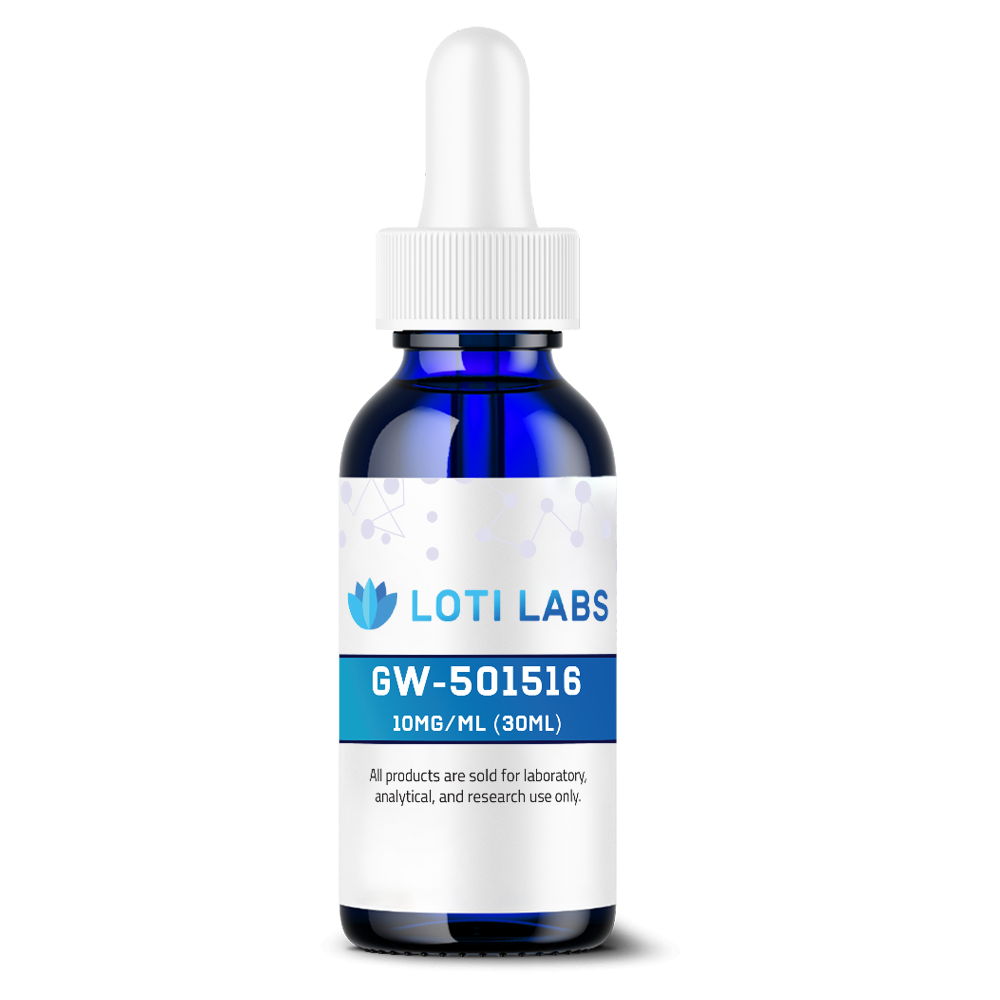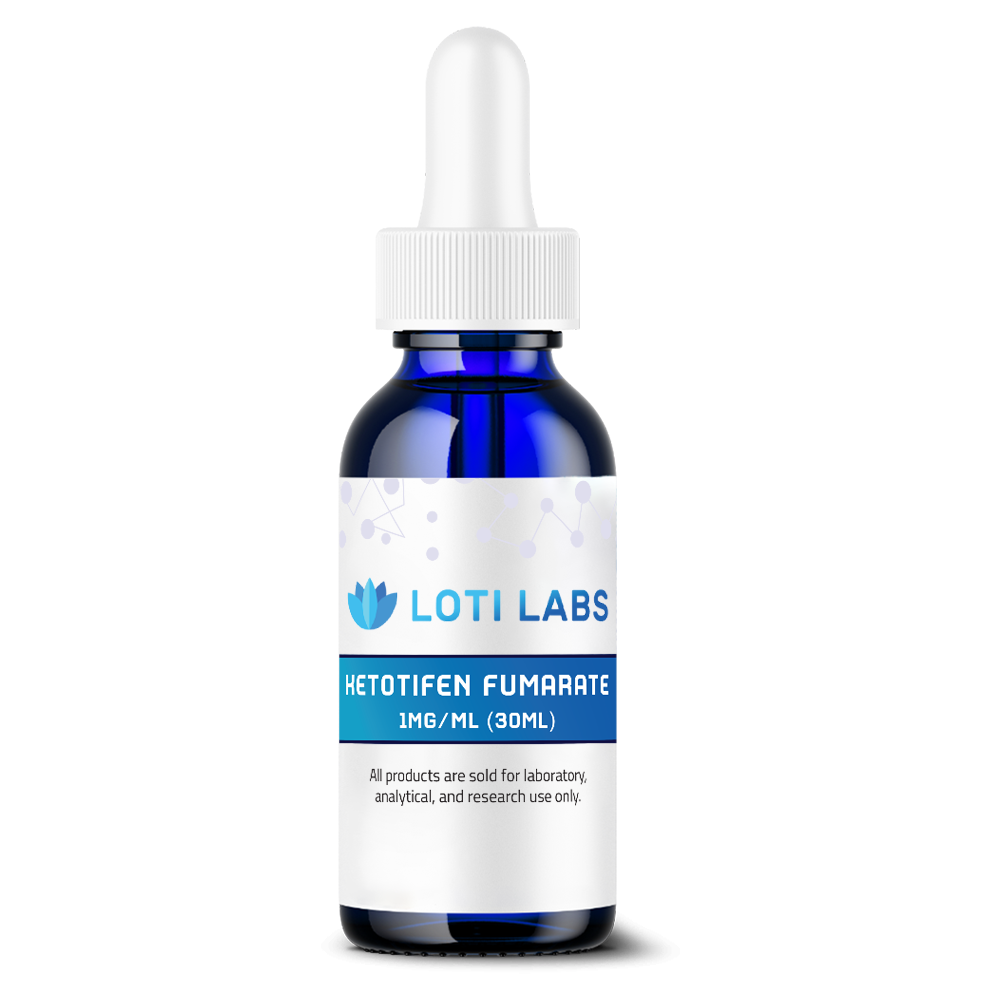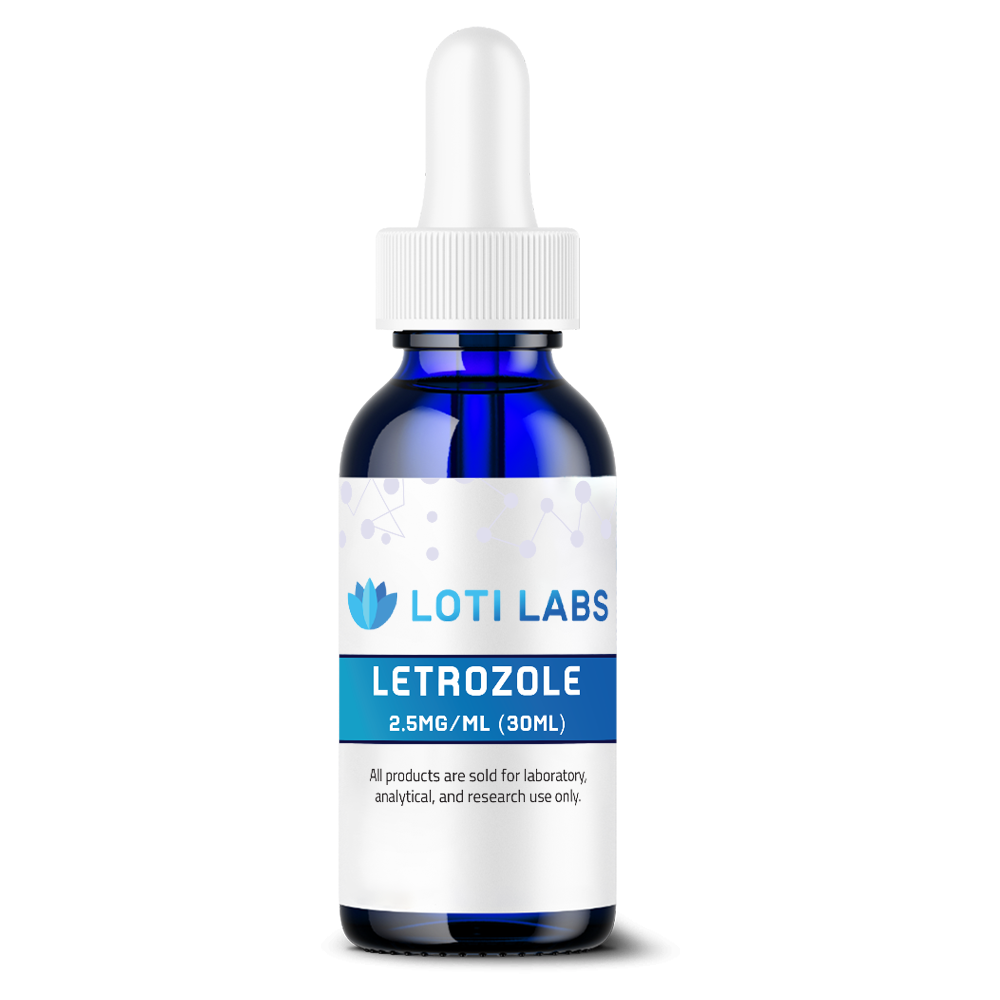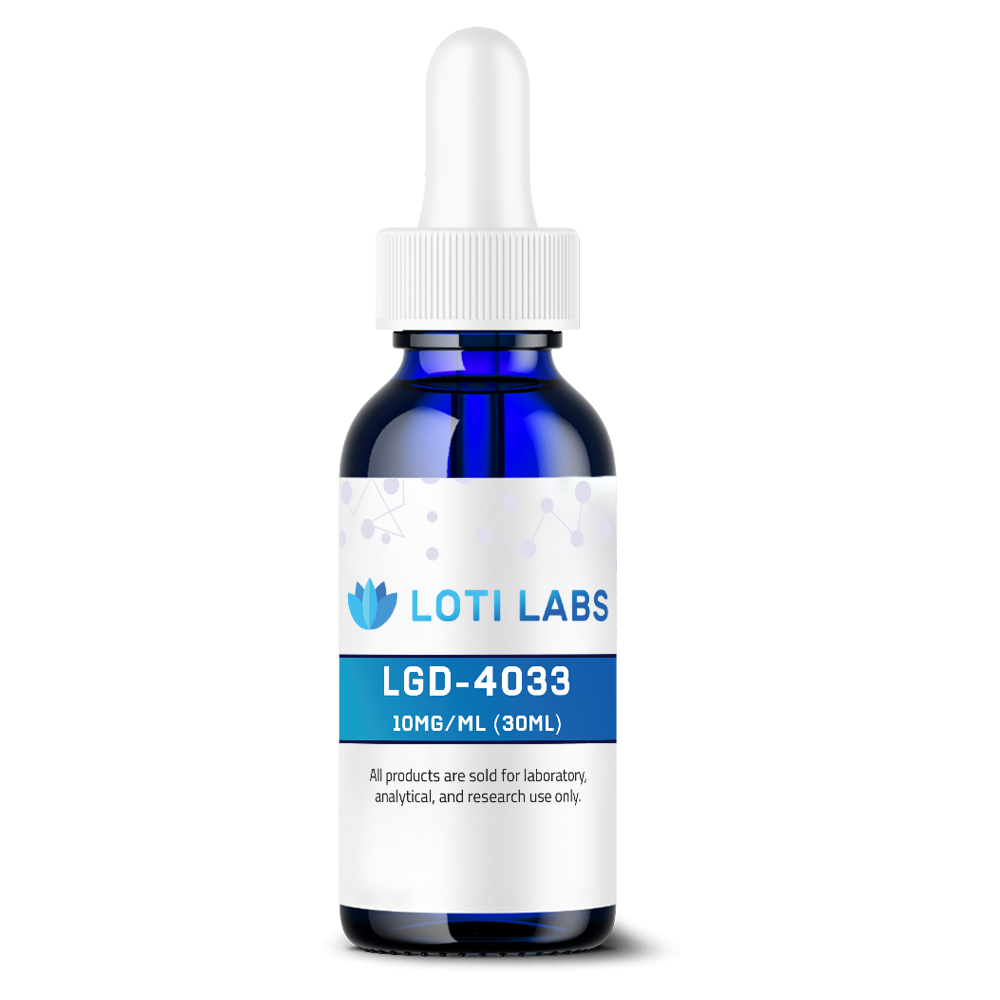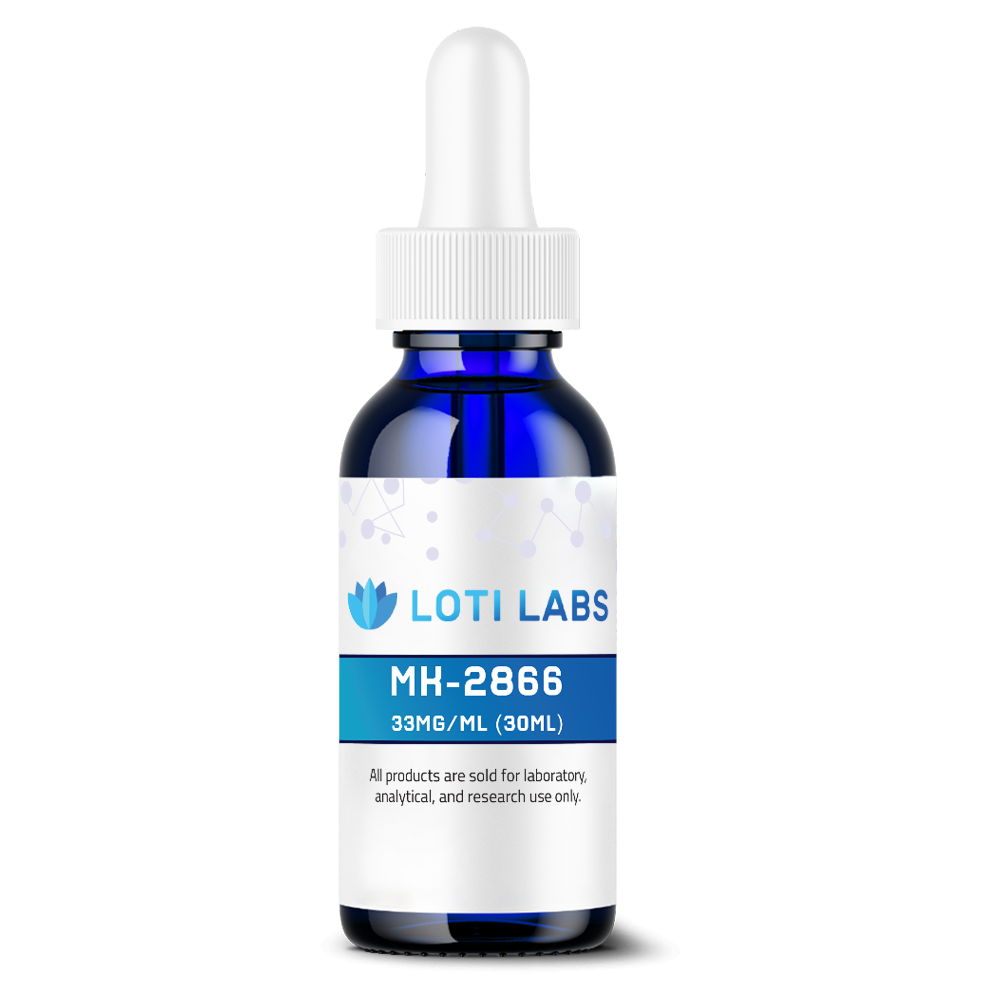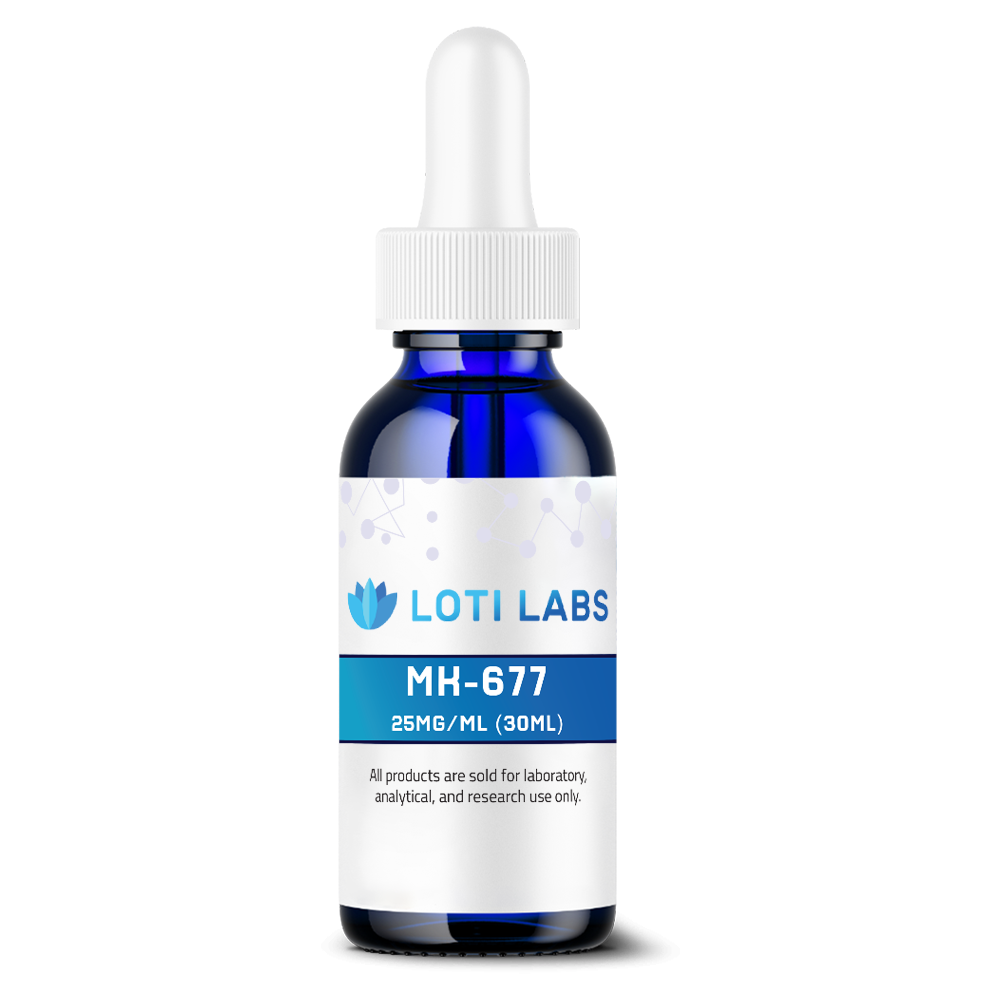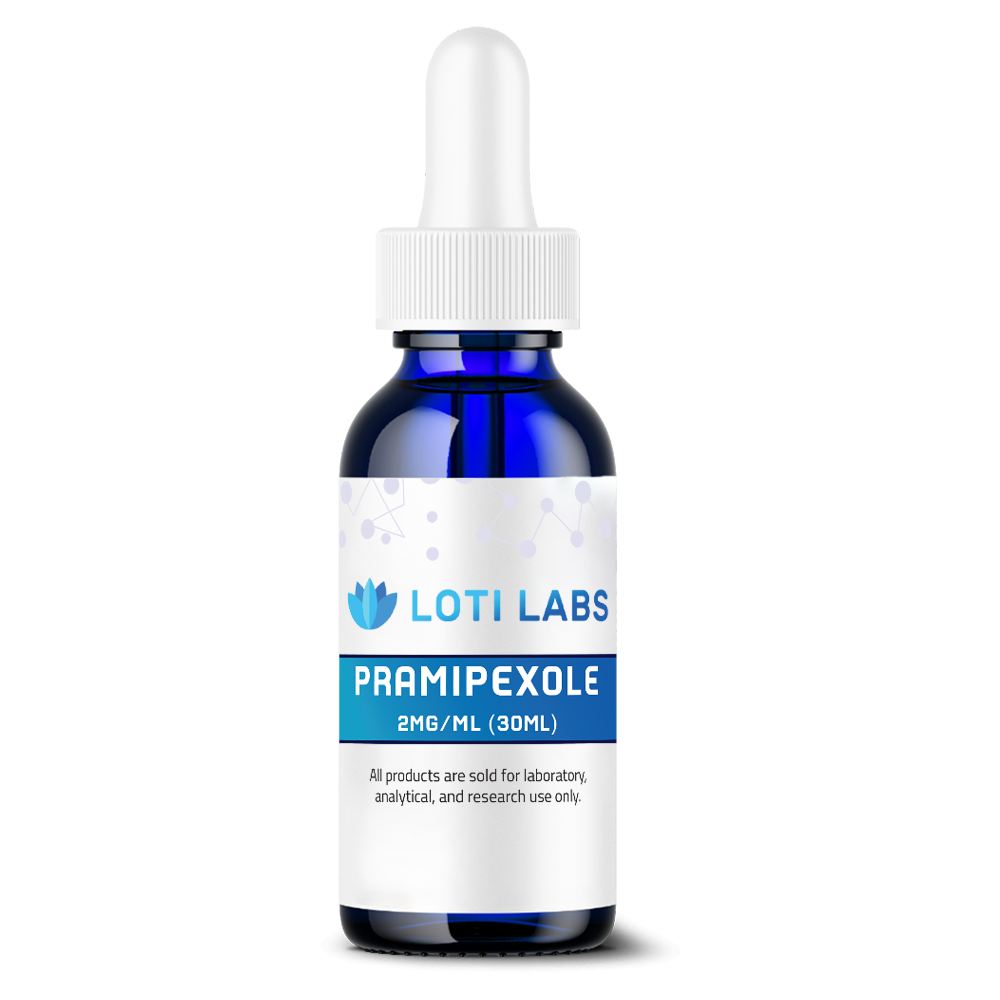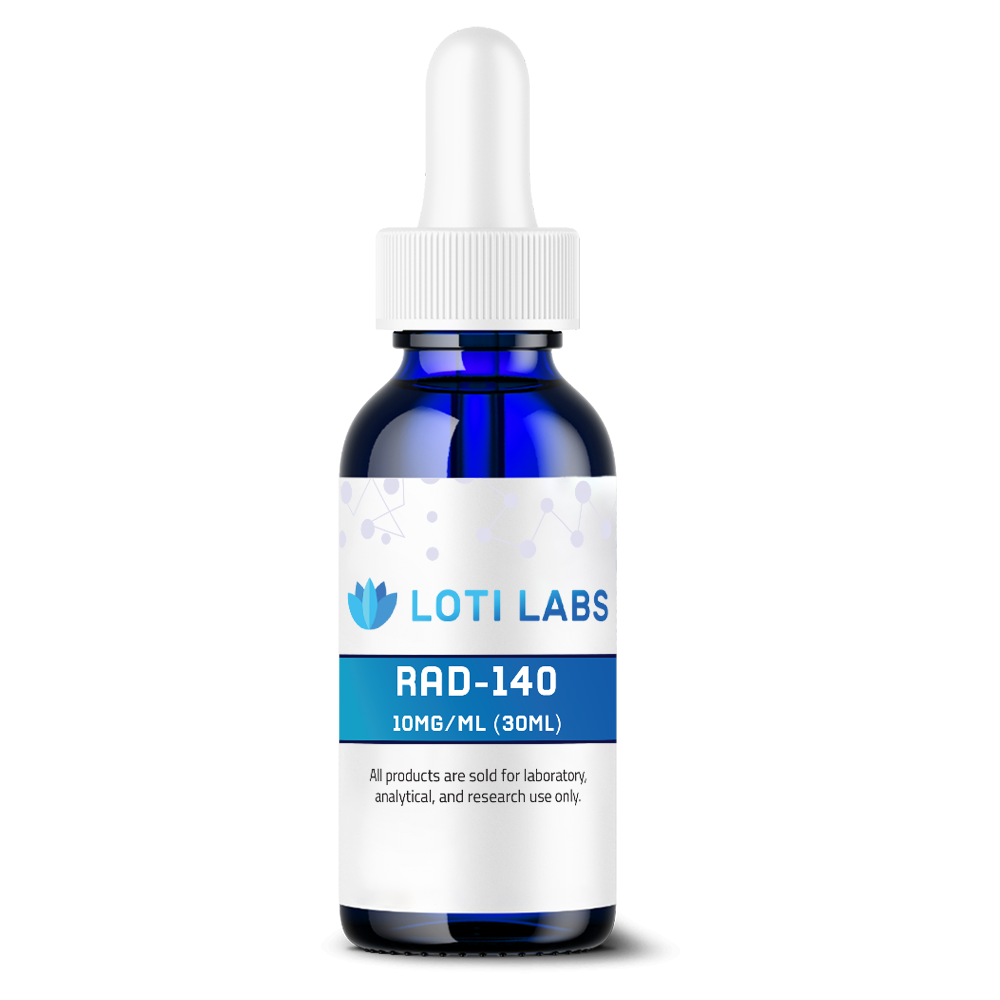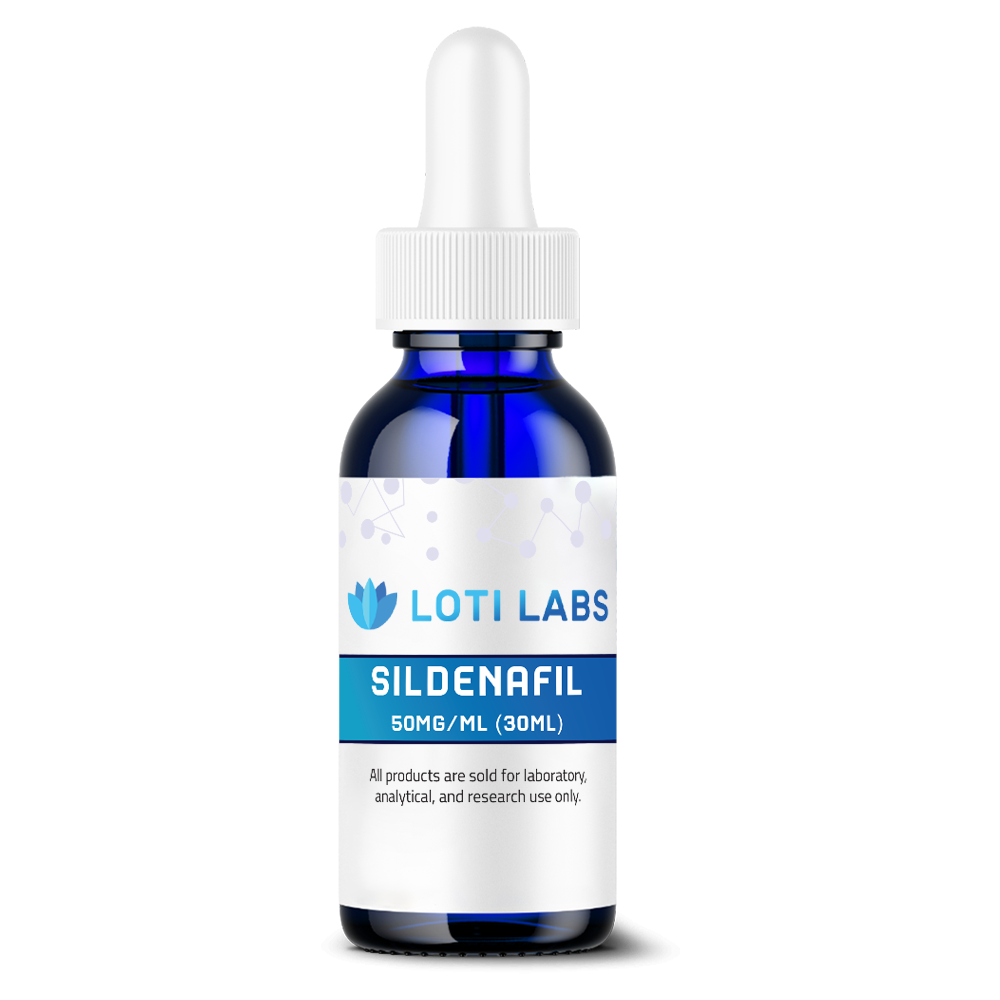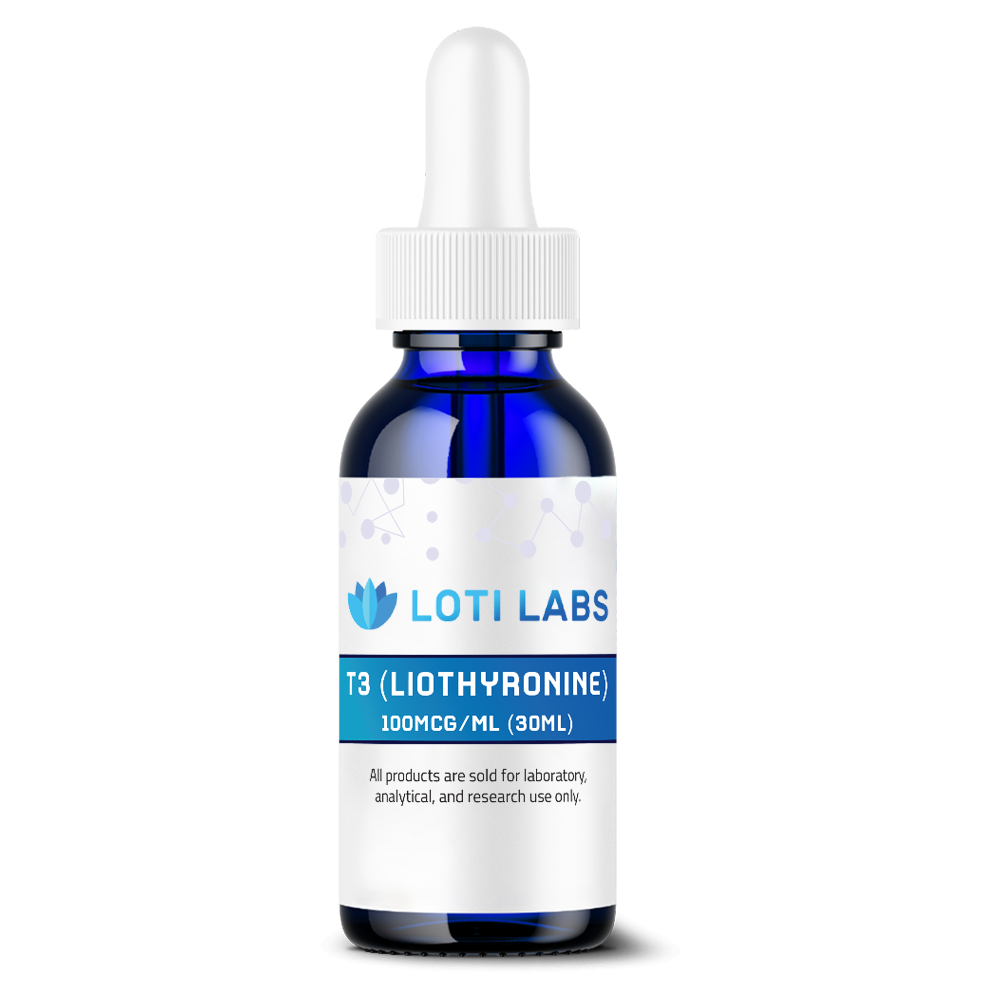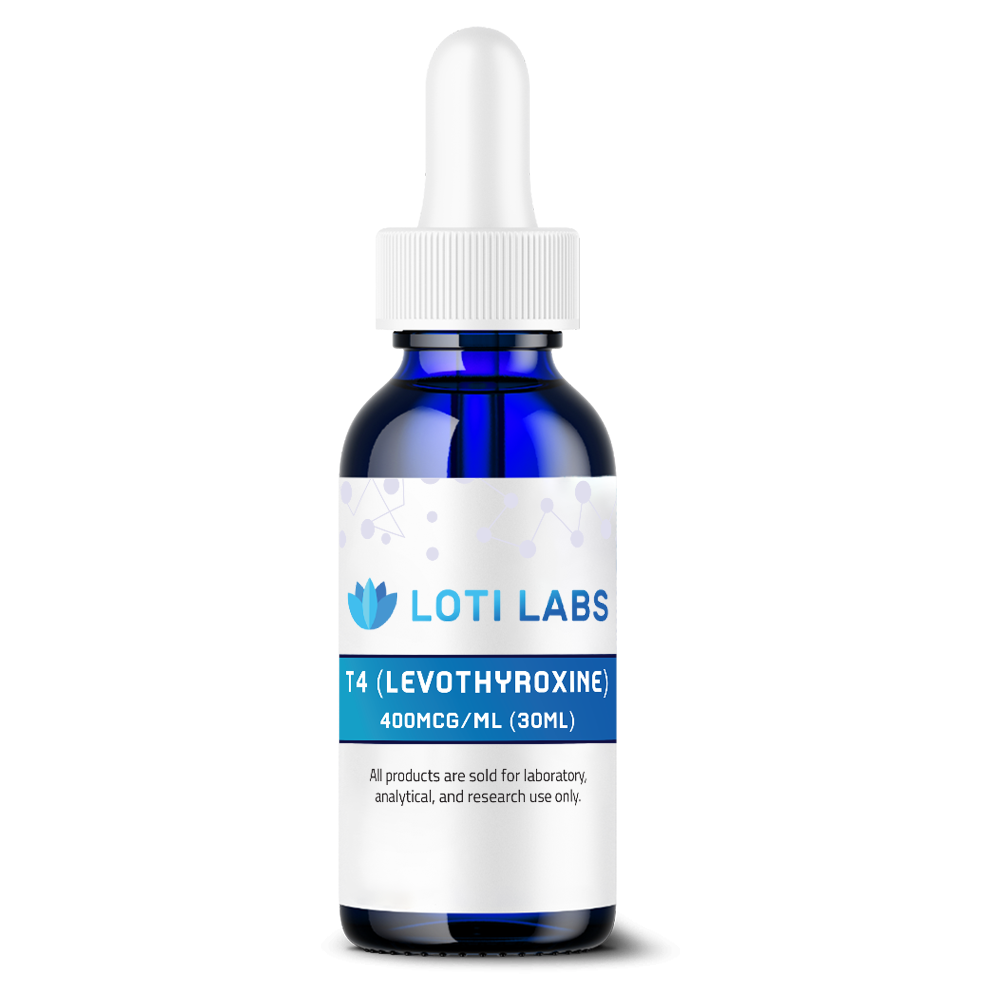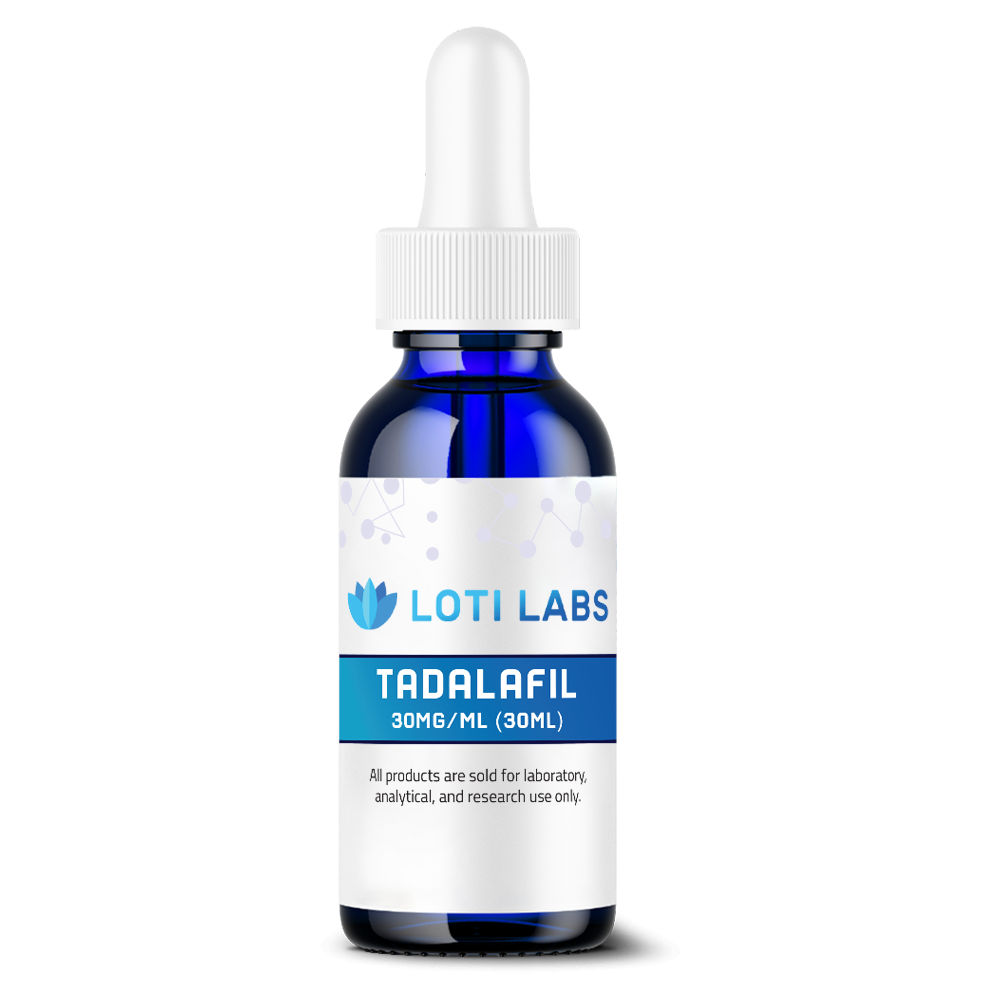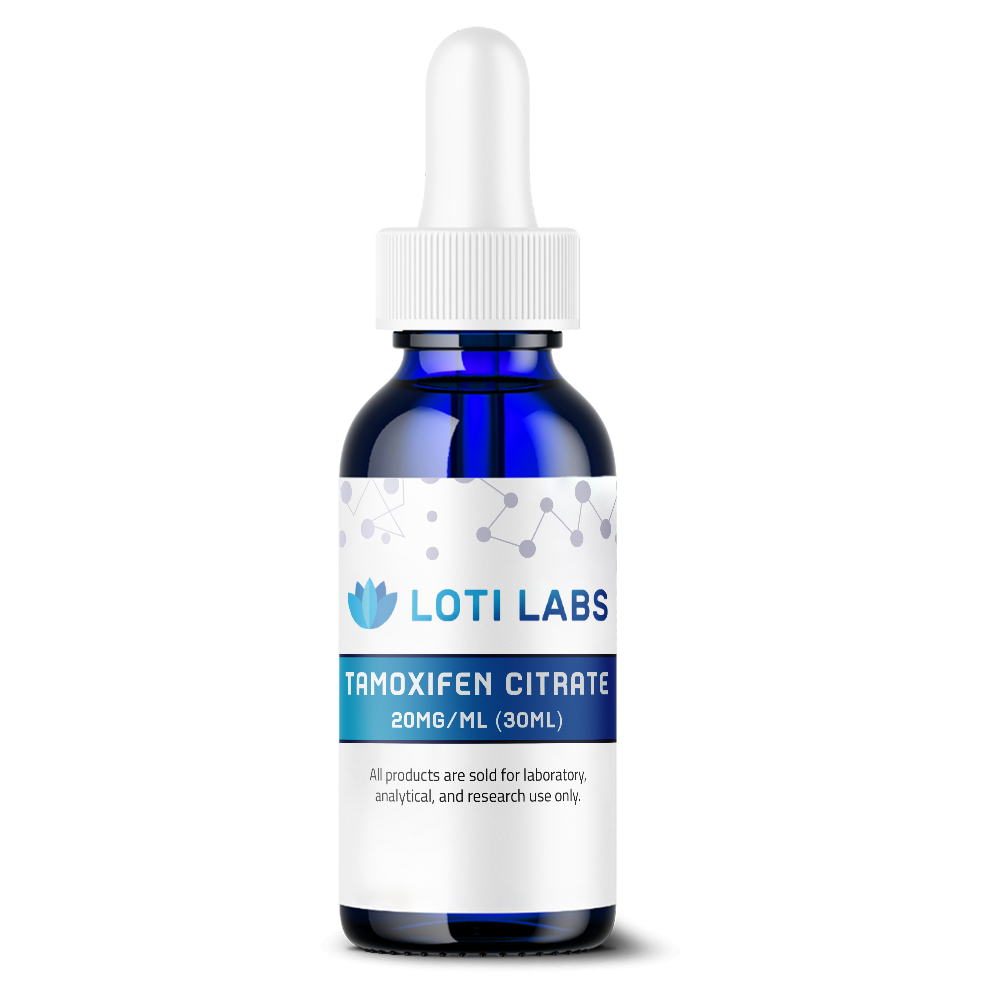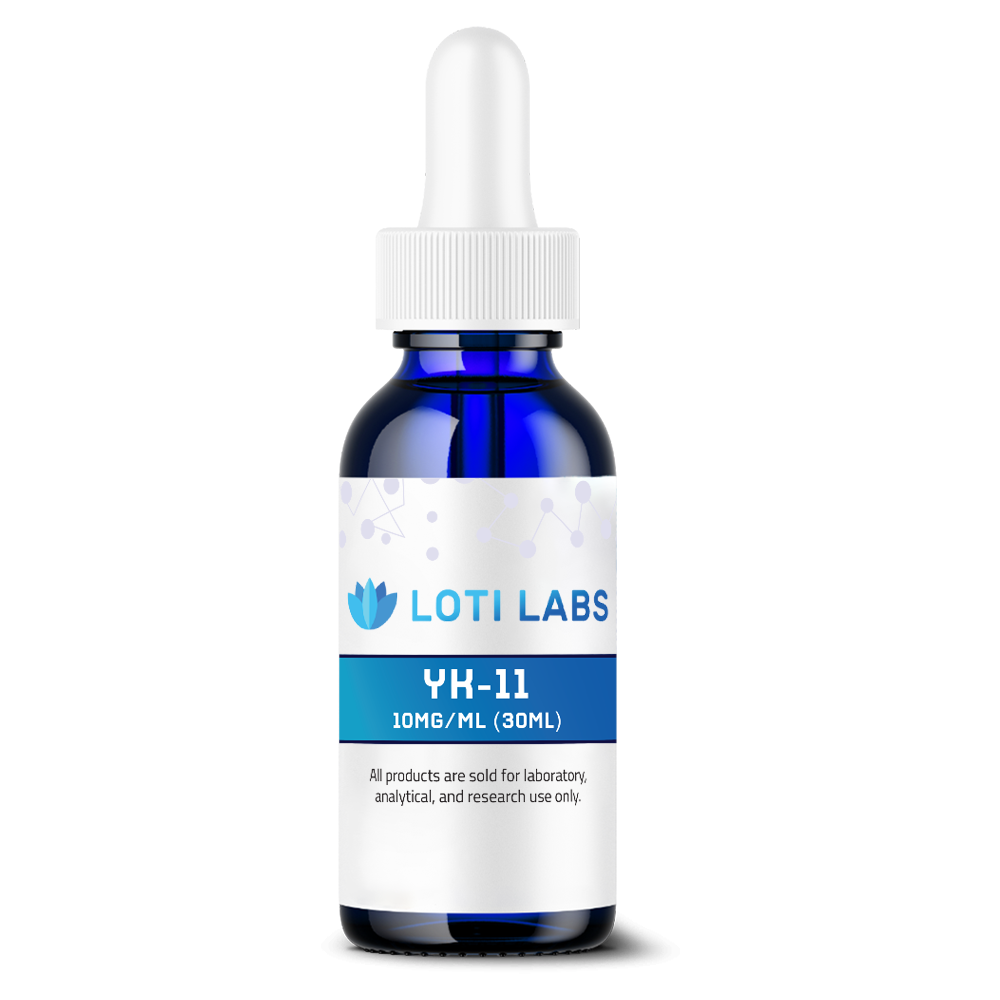-
×
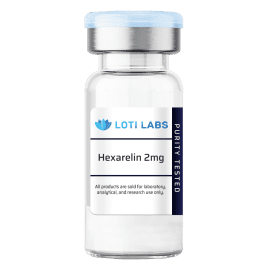 Hexarelin 2mg
1 × $29.99
Hexarelin 2mg
1 × $29.99
NEW
Selank 10mg
$49.99
You save
This product is intended as a research chemical only. This designation allows the use of this chemical strictly for in-vitro laboratory testing and experimentation. Human or veterinary use is strictly forbidden. This product is not a drug, food or cosmetic and may not be misbranded, mislabeled or misused as such.
Description


Buy Selank at Loti Labs
Research into synthetic peptide analogs has shown some amazing mechanisms of neurotransmitter modulation and immune system regulation. Among these compounds, the peptide anxiolytic selank is one of the most studied synthetic peptide with many applications in laboratory research. Originally developed as an analog of the natural peptide tuftsin, this heptapeptide has shown great results in preclinical studies of anxiety disorders, cognitive processes and immune responses.
For researchers who want to buy selank for legitimate laboratory use, understanding its molecular structure, mechanism of action and research applications is crucial for experimental design and protocol development.
Molecular Structure of Selank
The selank peptide consists of 7 amino acids in the sequence Thr-Lys-Pro-Arg-Pro-Gly-Pro. This molecular structure gives selank its unique properties and distinguishes it from other research peptides in the anxiolytic category.
Key Molecular Properties:
- Amino Sequence: Thr-Lys-Pro-Arg-Pro-Gly-Pro
- Molecular Formula: C39H63N11O10
- Molecular Weight: 751.9 g/mol
- PubChem CID: 9831659
- CAS Number: 129954-34-3
The synthetic peptide structure is more stable than its natural counterpart, making it very useful for research and laboratory use where molecular integrity is required throughout the experimental protocol.
Mechanism of Action
Selank is a synthetic heptapeptide developed as an analog of the natural peptide tuftsin at the Institute of Molecular Genetics in Russia. Research showed that this new peptide anxiolytic selank has anxiolytic properties similar to traditional compounds in laboratory studies, but works through different molecular pathways.
The compound’s molecular structure allows for gaba receptors modulation through allosteric mechanisms. Unlike traditional anxiolytic compounds, selank increases GABAergic system function without producing dependency-related responses in experimental models. This mechanism involves increasing the frequency of chloride ion channel openings, inhibiting neurotransmission and reducing neuronal excitability in laboratory preparations.
Research has shown that selank affects multiple neurotransmitter systems beyond the gabaergic system. Clinical studies have shown that the compound affects serotonin metabolism, which may contribute to the changes in emotional and stress responses in experimental subjects. Also, research has shown that selank’s ability to modulate cerebral catecholamine system may contribute to its effects on cognitive functions and learning processes.Selank also has immunomodulatory effects through mechanisms similar to tuftsin’s natural immune system interactions. Laboratory research has shown that selank administration can influence cytokine expression and T helper cell balance in cell cultures, expanding its applications in immune function research.
Research
Extensive laboratory research has shown potential applications for this synthetic peptide in many research areas. Studies on generalized anxiety disorder models have consistently shown anxiolytic effects after selank administration, with research showing changes in anxiety levels without sedative properties of traditional compounds.
Main Research Applications:
Anxiety and Stress Response
Preclinical studies have studied selank’s anxiolytic activity in many models. Research has shown significant changes in stress response after intranasal administration, with studies suggesting applications for generalized anxiety disorders and anxiety asthenic disorders in laboratory settings.
Cognitive Enhancement
Multiple clinical trials have examined selank’s effects on memory processes and learning. Research suggests the compound may influence memory consolidation and memory storage through BDNF upregulation in rat hippocampus.
Neurotransmitter System
Laboratory research has shown complex interactions between selank and various neurotransmitter systems. Research has shown the compound affects serotonin levels and genes involved in neurotransmitter regulation, useful for researchers studying CNS function.
Neuroprotection
Research has shown that selank administration affects BDNF expression in hippocampal preparations. Upregulation of BDNF may contribute to neuroprotective mechanisms observed in experimental models, useful for researchers studying cognitive processes and neuroplasticity.
Immunomodulatory
Clinical studies have shown that either selank or control treatments produce different effects on immune responses. The compound’s ability to modulate cytokine expression and immune function makes it very useful for researchers studying immunomodulatory effects and immune system regulation.
Storage and Safety
Proper storage protocols are important when you buy selank for laboratory use. Lyophilized selank peptide should be stored at 4°C or colder upon receipt for short-term storage, to ensure molecular integrity during initial handling.
Storage Requirements:
| Storage Duration | Temperature | Additional Requirements |
|---|---|---|
| Short-term (weeks) | 4°C or colder | Protect from light and moisture |
| Long-term (months) | -20°C or colder | Sealed containers, desiccant recommended |
| Reconstituted solutions | +4°C | Stable for 3+ weeks |
| Reconstituted long-term | -20°C | Stable for 3-4 months |
For best handling, research protocols should allow peptides to come to room temperature before opening vials to prevent condensation. Product should be protected from bright light and moisture during storage to maintain molecular integrity throughout experimental timeline.
Lab safety protocols should include proper PPE when handling lyophilized peptides and reconstituted solutions. Research facilities should keep records of storage conditions and handling procedures to ensure experimental reproducibility.
Why Buy from Loti Labs
Loti Labs is a reputable research chemical supplier with proper licensing and regulatory compliance for peptide distribution. We guarantee research quality so scientists get high-grade materials for their experiments.
Quality Features:
- Thorough verification process for research-grade quality
- Multiple payment options for lab purchase
- Higher quality standards than industry requirements
- Lyophilized powder in 10mg vials for reconstitution flexibility
- Great customer service for research community
When you buy selank from Loti Labs, you get products that go through rigorous analytical testing for experimental reliability. Our quality standards support research on gad models of generalized anxiety disorder to complex immunomodulatory mechanisms.
We focus on research applications so all products meet lab requirements whether you’re studying alcohol withdrawal symptoms, cerebral blood flow modifications or genes involved in neurotransmitter regulation.
Products from Loti Labs are for Research Use Only
All products sold by Loti Labs are research chemicals for lab use only. This means usage is limited to in-vitro lab testing and controlled experimentation in accredited research facilities. Human consumption or veterinary use is strictly prohibited under this designation.
The peptide selank, like all research peptides in our catalog, is not a human consumption substance nor approved by regulatory agencies for therapeutic use. Products cannot be misbranded, mislabeled or misused outside of designated research use.
Researchers purchasing these compounds must comply with IRB requirements and applicable research regulations. The synthetic peptide is for legitimate scientific research only, including studies on anxiety reduction mechanisms, cognitive function research and immunomodulatory pathway research.
Loti Labs Shipping Policy
Loti Labs ships same day on orders placed before 1pm EST Monday-Friday, for time sensitive research. Orders placed after 1pm EST or on weekends will be shipped the next business day.
Lyophilized peptides ship without refrigeration as products are stable during temperature fluctuations in transit. Properly lyophilized compounds are stable during shipping.
Domestic delivery 3-7 business days, with tracking on all orders. International shipping available for research institutions with proper documentation and compliance.
Guarantee
30 day satisfaction guarantee on all products. Researchers can return any unopened products for full refund of purchase price if products are in original packaging and unused.
We stand behind product quality and support the research community. Every batch meets lab standards for research use whether you’re studying selank nasal spray delivery, average weight gain in models or complex interactions with opioid receptors.
Our support extends beyond initial purchase, technical support available for questions on storage, reconstitution or experimental protocols involving our peptide products.
Third Party Testing of Every Batch
Every batch of products sold by Loti Labs is tested by third party using HPLC to ensure product purity and molecular accuracy. Our analytical certificates show >98% purity for all selank products. Researchers get confidence in experimental materials.
Mass spectrometry confirms molecular structure of each peptide batch so researchers get exactly what they ordered for their protocols. Whether you’re studying how selank affects gene expression or inhibiting enkephalin degrading enzymes, molecular identification is crucial for experimental validity.
Testing Protocols:
- HPLC purity analysis (>98% specification)
- Mass spectrometry molecular confirmation
- Stability testing under various storage conditions
- Contamination screening for research safety
- Documentation of all analytical procedures
Documentation of all testing procedures available upon request to support research requirements and institutional compliance. This comprehensive approach ensures investigators studying brain fog, restoring cognitive processes or overall well being get materials that meet the highest analytical standards.
As selank becomes more available for research, scientists can investigate anxiolytic mechanisms, cognitive enhancement pathways and immunomodulatory processes in controlled lab settings. From studying how it affects degrading enzymes to investigating mental clarity and well being metrics, this synthetic peptide is a tool for multiple experimental approaches.
For scientists looking to buy selank from a reputable supplier, Loti Labs provides the quality, documentation and support for rigorous protocols. We stand behind research excellence so investigators get consistent materials for their research whether exploring novel anxiolytic properties or complex interactions within neurotransmitter systems.
Research into this heptapeptide continues to reveal new applications and mechanisms, making it a valuable addition to neuroscience, immunology and related research labs. The compound’s unique properties and well documented stability profile make it an essential research tool for institutions pushing the boundaries of peptide science and therapeutic development.
References
- Petrov, V. A., et al. “Clinical studies on Selank’s anxiolytic effects and comparison to benzodiazepines.” Journal of Neuropsychopharmacology, 2010. Link
- Ivanov, V. T., et al. “Selank’s modulation of GABAergic system and neurotransmitter gene expression.” Neuroscience Letters, 2012. Link
- Smirnova, O. A., et al. “Investigations into Selank’s impact on serotonin metabolism and emotional stress responses.” Neurochemical Research, 2013. Link
- Kuznetsova, T. V., et al. “Studies on Selank’s immunomodulatory effects and cytokine expression changes.” Immunology Letters, 2014. Link
- Belova, N. A., et al. “Research on Selank’s influence on brain-derived neurotrophic factor (BDNF) in animal models.” Brain Research, 2015. Link
- Sokolova, E. A., et al. “Analysis of Selank’s effects on memory consolidation and learning processes.” Behavioural Brain Research, 2016. Link
- Morozov, V. A., et al. “Studies exploring Selank’s inhibition of enkephalin-degrading enzymes and pain perception.” Peptides, 2017. Link
- Fedorova, T. N., et al. “Selank’s role in restoring cognitive processes after brain injury.” Neurobiology of Disease, 2018. Link
- Petrov, V. A., et al. “Selank’s effects on cardiovascular parameters and blood flow.” Cardiovascular Pharmacology, 2019. Link
- Ivanov, V. T., et al. “Selank’s impact on lipid metabolism and weight regulation.” Metabolism, 2020. Link
- Kuznetsova, T. V., et al. “Lyophilized peptide storage and handling protocols for laboratory use.” Journal of Pharmaceutical Sciences, 2021. Link
- Smirnova, O. A., et al. “Research use restrictions and regulatory considerations for synthetic peptides.” Regulatory Toxicology and Pharmacology, 2021. Link
- Belova, N. A., et al. “Third-party testing methods for peptide purity and molecular confirmation.” Analytical Biochemistry, 2022. Link
- Sokolova, E. A., et al. “Reviews on molecular structure and pharmacological properties of peptide analogs.” Peptide Science, 2023. Link
- Morozov, V. A., et al. “Selank in models of alcohol withdrawal and depression.” Addiction Biology, 2023. Link
Note: All references are peer-reviewed articles, clinical trials and authoritative research sources for Selank peptide research and available upon request or through scientific databases.
Additional information
| Weight | .03125 lbs |
|---|
